Best Short Stories for Teaching the Hero’s Journey

Looking to shake up your approach to teaching the Hero’s Journey? Whether you’re looking to replace a novel with a range of short stories or to use them as additional texts, this post reveals 8 short stories that will get the job done.
Gearing up to teach the Hero’s Journey? Before you grab your go-to book from the shelf, I urge you to consider an alternative approach—using short stories.
While there are plenty of great novels out there to emphasize the Hero’s Journey, it was always a challenge to choose just one. Did I want to go with a popular classic, like The Odyssey ? Or an engaging modern text, like The Hunger Games ? That very challenge is what first got me thinking—What if my students could dive into multiple examples of the Hero’s Journey? Besides, heroes come in all shapes and sizes, right? So, in an attempt to expose my students to a classic narrative archetype and a variety of texts, I turned to short stories. And, honestly, I haven’t turned back since.
Whether you’re looking for short stories to take center stage or serve as a stepping stone before jumping into a full-length novel, they make the perfect addition to a Hero’s Journey unit. Keep reading to learn the advantages of teaching the Hero’s Journey using short stories and 8 short story titles that are sure to enhance your lessons.

What Is the Hero’s Journey?
Whether this is your first time teaching the Hero’s Journey or you need a quick review, let’s go over the basics. The Hero’s Journey is a narrative framework coined by Joseph Campbell in his book called The Hero With A Thousand Faces , published in 1949. However, the concept and pattern of the journey have been around since the earliest days of storytelling. It outlines the transformative journey of a protagonist who overcomes obstacles, faces inner and outer challenges, and emerges with newfound strength and wisdom.
While variations certainly exist across different narratives, cultures, and uses, the classic phases of the Hero’s Journey include the following:
- The Ordinary World: An introduction to the protagonist’s everyday life, relationships, and any challenges or limitations they face are first introduced.
- The Call to Adventure: The protagonist receives a compelling invitation or challenge that initiates the on the heroic journey.
- Refusal of the Call: The protagonist resists the call to adventure due to fear, doubt, or a sense of inadequacy.
- Meeting the Mentor: The protagonist encounters a mentor figure who provides guidance, advice, and assistance needed for the journey.
- Crossing the Threshold: The protagonist leaves the familiar and ordinary world behind and enters the unknown.
- Tests, Allies, and Enemies: The protagonist encounters various obstacles,enemies, and allies that test their will, determination and character.
- Approach to the Inmost Cave: The protagonist prepares for a significant challenge or confrontation, symbolizing their innermost fears, doubts, or weaknesses.
- Ordeal: The protagonist is pushed to their limits when faced with their greatest challenge, undergoing a transformative experience.
- Reward: After overcoming the ordeal, the protagonist is rewarded with something, often knowledge, that empowers them to continue their journey.
- The Road Back: The protagonist begins a journey back to the ordinary world.
- Resurrection: They face a final challenge, where they must apply everything they have learned and experienced.
- Return with the Elixir: The protagonist returns and is reunited with the ordinary world, having been transformed by “the elixir”—an object, knowledge, or insight—for the greater good.
Why Teach the Hero’s Journey with Short Stories?
You can apply the Hero’s Journey to a wide variety of literary texts, including myths, fairy tales, novels, short stories, and plays. Heck, you can even track the Hero’s Journey in movies, too. No matter which avenue you use, the Hero’s Journey encourages students to analyze plot structure, character motivation and development, and universal themes.
It gets them shrinking about essential questions like, are heroes born or are they made? What defines a hero? How can an individual change through taking heroic action? What can we learn about ourselves through studying a protagonist’s Hero’s Journey?
While many teachers opt for teaching the Hero’s Journey through a novel, here’s why I love using short stories to do so:
- Concise Storytelling: Short stories allow students to explore the Hero’s Journey in a concise format. This brevity allows for you to utilize short stories in various ways. Have students explore multiple examples of the Hero’s Journey, comparing and contrasting the variations. Alternatively, you can use a short story as Hero’s Journey review or as an introductory experience before diving into a full-length novel.
- Engaging Narratives: Given the waning attention spans of today’s students, it can be challenging to keep them engaged and on track with a longer text. On the other hand, short stories captivate students with their fast-paced narratives and intriguing characters. Short stories can make it through a 12-phase Hero’s Journey in a matter of pages. They often pack a punch with their themes and conflicts, giving students plenty to work with.
- Diverse Perspectives: Heroes come from different places and backgrounds, and possess various strengths and skills. It’s not a one-size-fits-all thing. Therefore, short stories allow you to expose your students to a range of protagonists and the different journeys they take. In fact, students can analyze multiple heroes in the same amount of time it would take to read an entire novel. In turn, you expose students to different voices, perspectives, and cultural experiences, fostering empathy and understanding in addition to highlighting the Hero’s Journey. Talk about two birds with one stone!
- Accessibility and Differentiation: Short stories are a great way to make literature accessible for students of varying abilities and interests. Teaching the Hero’s Journey through these shorter narratives is a great way to set students up for success by assigning a text based on their reading and comprehension level. And, if you ask me, it’s far easier for teachers to manage various short stories than multiple novels.
8 Short Stories for Teaching the Hero’s Journey
If you’ve made it this far down in the post, I’ve convinced you to at least consider using short stories when teaching the Hero’s Journey. (You won’t regret it.) But, let’s take it one step further, shall we? Instead of starting from the drawing board, here are 8 short stories that are perfect for teaching the Hero’s Journey in secondary ELA.
1. “A Sound of Thunder” by Ray Bradbury
Would it be a great short story list without at least one Bradbury title? “A Sound of Thunder” may not follow every stage of the Hero’s Journey in a traditional sense, but the protagonist, Eckels, certainly experiences his own form of the journey. Bradbury’s story incorporates elements of the hero’s transformation, the challenges faced, and the revelation of the consequences of their actions as Eckles ultimately learns the hard truth that even the smallest actions can have big consequences.

2. “The Secret Life of Walter Mitty” by James Thurber
This is another short story that doesn’t completely follow the journey in the most traditional sense. However, students will enjoy tracking protagonist Walter Mitty’s own form of his Hero’s Journey. Walter Mitty’s journey involves vivid daydreams that serve as an escape from his mundane reality. Students can track the stages of the Hero’s Journey as Mr. Mitty sets out on a quest for self-expression, courage, and embracing the extraordinary within.
3. “The Yellow Wallpaper” by Charlotte Perkins Gilman
This is not your average Hero’s Journey, making it the perfect challenge text for advanced students. Students can track how the unnamed narrator turns to the titular yellow wallpaper as her supernatural aid, becoming the catalyst for her journey of self-discovery.

4. “Thank you, Ma’am” by Langston Hughes
Students will appreciate the simple realness of Roger’s Hero’s Journey. What begins as an attempted purse robbery, Roger is faced with a different kind of call to “adventure.” Ironically, the woman he tried to steal from, Mrs. Luella Bates Washington Jones, serves as his mentor during this journey, ultimately leading him to gain a newfound understanding of the importance of kindness and compassion.
5. “The Most Dangerous Game” by Richard Connell
The story’s protagonist and skilled hunter, Sanger Rainsford, goes on a harrowing Hero’s Journey when he falls off his yacht and winds up stranded on a mysterious island. Suddenly, he finds himself caught in a deadly game of survival. (Dun, dun, dun.) However, by the end of his journey, Rainsford returns to civilization with a newfound perspective and appreciation for life.
6. “Raymond’s Run” by Toni Cade Bambara
Squeaky, the story’s young protagonist, is a talented runner who unexpectedly embarks on her own Hero’s Journey. While she is initially focused on her own ambitions, Squeaky’s perspective shifts as she heads down a path of self-discovery and compassion. By the end of her journey, Squeaky transforms from a self-centered competitor to a caring sister who is able to support her brother.
7. “Marigolds” by by Eugenia Collier
The story’s protagonist, Lizabeth, finds herself on a transformative journey initiated by frustrations with the poverty and hopelessness in her community. By the end, despite the struggles around her, she is able to find moments of beauty and to approach others with kindness and understanding. Ultimately, Lizabeth’s Hero’s Journey is one of learning empathy and self-realization in the face of adversity.
8. “To Build a Fire” by Jack London Does this story follow the traditional Hero’s Journey? Nope. But that’s what makes it the perfect companion text to a storyline that follows the traditional journey structure and stages. In London’s story, the protagonist, simply known as “the man,” sets out on a journey through the frozen Yukon wilderness. The man’s survival skills and overall resilience are tested again and again as he faces numerous challenges and tests throughout his journey. Rather than ending with a traditional elixir or triumphant return, the man learns the power of nature and the consequences of overestimating one’s abilities. (Yikes!)
There you have it, my teacher friend! If you’re looking to shake up your approach to the Hero’s Journey, short stories may just be what you need. The stories above offer diverse examples of the Hero’s Journey, showcasing different characters, settings, and themes. As a result, your students can explore variations of this classic narrative structure, laying the groundwork for engaging discussions, a cumulative compare and contrast activity, or analytical essay.
Have any other titles to add to the list? Don’t forget to share your favorite short stories for teaching the Hero’s Journey in the comments below!
1 thought on “Best Short Stories for Teaching the Hero’s Journey”
I was searching for short stories that fit the monomyth and came across “Through the Tunnel” by Dorris Lessing. It’s fantastic and fits beautifully. Thanks for your list!
Leave a Reply Cancel reply
Your email address will not be published. Required fields are marked *
Save my name, email, and website in this browser for the next time I comment.
TRY OUR FREE APP
Write your book in Reedsy Studio. Try the beloved writing app for free today.
Craft your masterpiece in Reedsy Studio
Plan, write, edit, and format your book in our free app made for authors.

Last updated on Aug 10, 2023
The Hero's Journey: 12 Steps to a Classic Story Structure
The Hero's Journey is a timeless story structure which follows a protagonist on an unforeseen quest, where they face challenges, gain insights, and return home transformed. From Theseus and the Minotaur to The Lion King , so many narratives follow this pattern that it’s become ingrained into our cultural DNA.
In this post, we'll show you how to make this classic plot structure work for you — and if you’re pressed for time, download our cheat sheet below for everything you need to know.

FREE RESOURCE
Hero's Journey Template
Plot your character's journey with our step-by-step template.
What is the Hero’s Journey?
The Hero's Journey, also known as the monomyth, is a story structure where a hero goes on a quest or adventure to achieve a goal, and has to overcome obstacles and fears, before ultimately returning home transformed.
This narrative arc has been present in various forms across cultures for centuries, if not longer, but gained popularity through Joseph Campbell's mythology book, The Hero with a Thousand Faces . While Campbell identified 17 story beats in his monomyth definition, this post will concentrate on a 12-step framework popularized in 2007 by screenwriter Christopher Vogler in his book The Writer’s Journey .
The 12 Steps of the Hero’s Journey

The Hero's Journey is a model for both plot points and character development : as the Hero traverses the world, they'll undergo inner and outer transformation at each stage of the journey. The 12 steps of the hero's journey are:
- The Ordinary World. We meet our hero.
- Call to Adventure. Will they meet the challenge?
- Refusal of the Call. They resist the adventure.
- Meeting the Mentor. A teacher arrives.
- Crossing the First Threshold. The hero leaves their comfort zone.
- Tests, Allies, Enemies. Making friends and facing roadblocks.
- Approach to the Inmost Cave. Getting closer to our goal.
- Ordeal. The hero’s biggest test yet!
- Reward (Seizing the Sword). Light at the end of the tunnel
- The Road Back. We aren’t safe yet.
- Resurrection. The final hurdle is reached.
- Return with the Elixir. The hero heads home, triumphant.
Believe it or not, this story structure also applies across mediums and genres (and also works when your protagonist is an anti-hero! ). Let's dive into it.
1. Ordinary World
In which we meet our Hero.
The journey has yet to start. Before our Hero discovers a strange new world, we must first understand the status quo: their ordinary, mundane reality.
It’s up to this opening leg to set the stage, introducing the Hero to readers. Importantly, it lets readers identify with the Hero as a “normal” person in a “normal” setting, before the journey begins.
2. Call to Adventure
In which an adventure starts.
The call to adventure is all about booting the Hero out of their comfort zone. In this stage, they are generally confronted with a problem or challenge they can't ignore. This catalyst can take many forms, as Campbell points out in Hero with a Thousand Faces . The Hero can, for instance:
- Decide to go forth of their own volition;
- Theseus upon arriving in Athens.
- Be sent abroad by a benign or malignant agent;
- Odysseus setting off on his ship in The Odyssey .
- Stumble upon the adventure as a result of a mere blunder;
- Dorothy when she’s swept up in a tornado in The Wizard of Oz .
- Be casually strolling when some passing phenomenon catches the wandering eye and lures one away from the frequented paths of man.
- Elliot in E.T. upon discovering a lost alien in the tool shed.
The stakes of the adventure and the Hero's goals become clear. The only question: will he rise to the challenge?

3. Refusal of the Call
In which the Hero digs in their feet.
Great, so the Hero’s received their summons. Now they’re all set to be whisked off to defeat evil, right?
Not so fast. The Hero might first refuse the call to action. It’s risky and there are perils — like spiders, trolls, or perhaps a creepy uncle waiting back at Pride Rock . It’s enough to give anyone pause.
In Star Wars , for instance, Luke Skywalker initially refuses to join Obi-Wan on his mission to rescue the princess. It’s only when he discovers that his aunt and uncle have been killed by stormtroopers that he changes his mind.
4. Meeting the Mentor
In which the Hero acquires a personal trainer.
The Hero's decided to go on the adventure — but they’re not ready to spread their wings yet. They're much too inexperienced at this point and we don't want them to do a fabulous belly-flop off the cliff.
Enter the mentor: someone who helps the Hero, so that they don't make a total fool of themselves (or get themselves killed). The mentor provides practical training, profound wisdom, a kick up the posterior, or something abstract like grit and self-confidence.

Wise old wizards seem to like being mentors. But mentors take many forms, from witches to hermits and suburban karate instructors. They might literally give weapons to prepare for the trials ahead, like Q in the James Bond series. Or perhaps the mentor is an object, such as a map. In all cases, they prepare the Hero for the next step.

GET ACCOUNTABILITY
Meet writing coaches on Reedsy
Industry insiders can help you hone your craft, finish your draft, and get published.
5. Crossing the First Threshold
In which the Hero enters the other world in earnest.
Now the Hero is ready — and committed — to the journey. This marks the end of the Departure stage and is when the adventure really kicks into the next gear. As Vogler writes: “This is the moment that the balloon goes up, the ship sails, the romance begins, the wagon gets rolling.”
From this point on, there’s no turning back.
Like our Hero, you should think of this stage as a checkpoint for your story. Pause and re-assess your bearings before you continue into unfamiliar territory. Have you:
- Launched the central conflict? If not, here’s a post on types of conflict to help you out.
- Established the theme of your book? If not, check out this post that’s all about creating theme and motifs .
- Made headway into your character development? If not, this character profile template may be useful:

Reedsy’s Character Profile Template
A story is only as strong as its characters. Fill this out to develop yours.
6. Tests, Allies, Enemies
In which the Hero faces new challenges and gets a squad.
When we step into the Special World, we notice a definite shift. The Hero might be discombobulated by this unfamiliar reality and its new rules. This is generally one of the longest stages in the story , as our protagonist gets to grips with this new world.
This makes a prime hunting ground for the series of tests to pass! Luckily, there are many ways for the Hero to get into trouble:
- In Jumanji: Welcome to the Jungle , Spencer, Bethany, “Fridge,” and Martha get off to a bad start when they bump into a herd of bloodthirsty hippos.
- In his first few months at Hogwarts, Harry Potter manages to fight a troll, almost fall from a broomstick and die, and get horribly lost in the Forbidden Forest.
- Marlin and Dory encounter three “reformed” sharks, get shocked by jellyfish, and are swallowed by a blue whale en route to finding Nemo.

This stage often expands the cast of characters. Once the protagonist is in the Special World, he will meet allies and enemies — or foes that turn out to be friends and vice versa. He will learn a new set of rules from them. Saloons and seedy bars are popular places for these transactions, as Vogler points out (so long as the Hero survives them).
7. Approach to the Inmost Cave
In which the Hero gets closer to his goal.
This isn’t a physical cave. Instead, the “inmost cave” refers to the most dangerous spot in the other realm — whether that’s the villain’s chambers, the lair of the fearsome dragon, or the Death Star. Almost always, it is where the ultimate goal of the quest is located.
Note that the protagonist hasn’t entered the Inmost Cave just yet. This stage is all about the approach to it. It covers all the prep work that's needed in order to defeat the villain.
In which the Hero faces his biggest test of all thus far.
Of all the tests the Hero has faced, none have made them hit rock bottom — until now. Vogler describes this phase as a “black moment.” Campbell refers to it as the “belly of the whale.” Both indicate some grim news for the Hero.
The protagonist must now confront their greatest fear. If they survive it, they will emerge transformed. This is a critical moment in the story, as Vogler explains that it will “inform every decision that the Hero makes from this point forward.”
The Ordeal is sometimes not the climax of the story. There’s more to come. But you can think of it as the main event of the second act — the one in which the Hero actually earns the title of “Hero.”
9. Reward (Seizing the Sword)
In which the Hero sees light at the end of the tunnel.
Our Hero’s been through a lot. However, the fruits of their labor are now at hand — if they can just reach out and grab them! The “reward” is the object or knowledge the Hero has fought throughout the entire journey to hold.
Once the protagonist has it in their possession, it generally has greater ramifications for the story. Vogler offers a few examples of it in action:
- Luke rescues Princess Leia and captures the plans of the Death Star — keys to defeating Darth Vader.
- Dorothy escapes from the Wicked Witch’s castle with the broomstick and the ruby slippers — keys to getting back home.

10. The Road Back
In which the light at the end of the tunnel might be a little further than the Hero thought.
The story's not over just yet, as this phase marks the beginning of Act Three. Now that he's seized the reward, the Hero tries to return to the Ordinary World, but more dangers (inconveniently) arise on the road back from the Inmost Cave.
More precisely, the Hero must deal with the consequences and aftermath of the previous act: the dragon, enraged by the Hero who’s just stolen a treasure from under his nose, starts the hunt. Or perhaps the opposing army gathers to pursue the Hero across a crowded battlefield. All further obstacles for the Hero, who must face them down before they can return home.
11. Resurrection
In which the last test is met.
Here is the true climax of the story. Everything that happened prior to this stage culminates in a crowning test for the Hero, as the Dark Side gets one last chance to triumph over the Hero.
Vogler refers to this as a “final exam” for the Hero — they must be “tested once more to see if they have really learned the lessons of the Ordeal.” It’s in this Final Battle that the protagonist goes through one more “resurrection.” As a result, this is where you’ll get most of your miraculous near-death escapes, à la James Bond's dashing deliverances. If the Hero survives, they can start looking forward to a sweet ending.
12. Return with the Elixir
In which our Hero has a triumphant homecoming.
Finally, the Hero gets to return home. However, they go back a different person than when they started out: they’ve grown and matured as a result of the journey they’ve taken.
But we’ve got to see them bring home the bacon, right? That’s why the protagonist must return with the “Elixir,” or the prize won during the journey, whether that’s an object or knowledge and insight gained.
Of course, it’s possible for a story to end on an Elixir-less note — but then the Hero would be doomed to repeat the entire adventure.
Examples of The Hero’s Journey in Action
To better understand this story template beyond the typical sword-and-sorcery genre, let's analyze three examples, from both screenplay and literature, and examine how they implement each of the twelve steps.
The 1976 film Rocky is acclaimed as one of the most iconic sports films because of Stallone’s performance and the heroic journey his character embarks on.

- Ordinary World. Rocky Balboa is a mediocre boxer and loan collector — just doing his best to live day-to-day in a poor part of Philadelphia.
- Call to Adventure. Heavyweight champ Apollo Creed decides to make a big fight interesting by giving a no-name loser a chance to challenge him. That loser: Rocky Balboa.
- Refusal of the Call. Rocky says, “Thanks, but no thanks,” given that he has no trainer and is incredibly out of shape.
- Meeting the Mentor. In steps former boxer Mickey “Mighty Mick” Goldmill, who sees potential in Rocky and starts training him physically and mentally for the fight.
- Crossing the First Threshold. Rocky crosses the threshold of no return when he accepts the fight on live TV, and 一 in parallel 一 when he crosses the threshold into his love interest Adrian’s house and asks her out on a date.
- Tests, Allies, Enemies. Rocky continues to try and win Adrian over and maintains a dubious friendship with her brother, Paulie, who provides him with raw meat to train with.
- Approach to the Inmost Cave. The Inmost Cave in Rocky is Rocky’s own mind. He fears that he’ll never amount to anything — something that he reveals when he butts heads with his trainer, Mickey, in his apartment.
- Ordeal. The start of the training montage marks the beginning of Rocky’s Ordeal. He pushes through it until he glimpses hope ahead while running up the museum steps.
- Reward (Seizing the Sword). Rocky's reward is the restoration of his self-belief, as he recognizes he can try to “go the distance” with Apollo Creed and prove he's more than "just another bum from the neighborhood."
- The Road Back. On New Year's Day, the fight takes place. Rocky capitalizes on Creed's overconfidence to start strong, yet Apollo makes a comeback, resulting in a balanced match.
- Resurrection. The fight inflicts multiple injuries and pushes both men to the brink of exhaustion, with Rocky being knocked down numerous times. But he consistently rises to his feet, enduring through 15 grueling rounds.
- Return with the Elixir. Rocky loses the fight — but it doesn’t matter. He’s won back his confidence and he’s got Adrian, who tells him that she loves him.
Moving outside of the ring, let’s see how this story structure holds on a completely different planet and with a character in complete isolation.
The Martian
In Andy Weir’s self-published bestseller (better known for its big screen adaptation) we follow astronaut Mark Watney as he endures the challenges of surviving on Mars and working out a way to get back home.

- The Ordinary World. Botanist Mark and other astronauts are on a mission on Mars to study the planet and gather samples. They live harmoniously in a structure known as "the Hab.”
- Call to Adventure. The mission is scrapped due to a violent dust storm. As they rush to launch, Mark is flung out of sight and the team believes him to be dead. He is, however, very much alive — stranded on Mars with no way of communicating with anyone back home.
- Refusal of the Call. With limited supplies and grim odds of survival, Mark concludes that he will likely perish on the desolate planet.
- Meeting the Mentor. Thanks to his resourcefulness and scientific knowledge he starts to figure out how to survive until the next Mars mission arrives.
- Crossing the First Threshold. Mark crosses the mental threshold of even trying to survive 一 he successfully creates a greenhouse to cultivate a potato crop, creating a food supply that will last long enough.
- Tests, Allies, Enemies. Loneliness and other difficulties test his spirit, pushing him to establish contact with Earth and the people at NASA, who devise a plan to help.
- Approach to the Inmost Cave. Mark faces starvation once again after an explosion destroys his potato crop.
- Ordeal. A NASA rocket destined to deliver supplies to Mark disintegrates after liftoff and all hope seems lost.
- Reward (Seizing the Sword). Mark’s efforts to survive are rewarded with a new possibility to leave the planet. His team 一 now aware that he’s alive 一 defies orders from NASA and heads back to Mars to rescue their comrade.
- The Road Back. Executing the new plan is immensely difficult 一 Mark has to travel far to locate the spaceship for his escape, and almost dies along the way.
- Resurrection. Mark is unable to get close enough to his teammates' ship but finds a way to propel himself in empty space towards them, and gets aboard safely.
- Return with the Elixir. Now a survival instructor for aspiring astronauts, Mark teaches students that space is indifferent and that survival hinges on solving one problem after another, as well as the importance of other people’s help.
Coming back to Earth, let’s now examine a heroine’s journey through the wilderness of the Pacific Crest Trail and her… humanity.
The memoir Wild narrates the three-month-long hiking adventure of Cheryl Strayed across the Pacific coast, as she grapples with her turbulent past and rediscovers her inner strength.

- The Ordinary World. Cheryl shares her strong bond with her mother who was her strength during a tough childhood with an abusive father.
- Call to Adventure. As her mother succumbs to lung cancer, Cheryl faces the heart-wrenching reality to confront life's challenges on her own.
- Refusal of the Call. Cheryl spirals down into a destructive path of substance abuse and infidelity, which leads to hit rock bottom with a divorce and unwanted pregnancy.
- Meeting the Mentor. Her best friend Lisa supports her during her darkest time. One day she notices the Pacific Trail guidebook, which gives her hope to find her way back to her inner strength.
- Crossing the First Threshold. She quits her job, sells her belongings, and visits her mother’s grave before traveling to Mojave, where the trek begins.
- Tests, Allies, Enemies. Cheryl is tested by her heavy bag, blisters, rattlesnakes, and exhaustion, but many strangers help her along the trail with a warm meal or hiking tips.
- Approach to the Inmost Cave. As Cheryl goes through particularly tough and snowy parts of the trail her emotional baggage starts to catch up with her.
- Ordeal. She inadvertently drops one of her shoes off a cliff, and the incident unearths the helplessness she's been evading since her mother's passing.
- Reward (Seizing the Sword). Cheryl soldiers on, trekking an impressive 50 miles in duct-taped sandals before finally securing a new pair of shoes. This small victory amplifies her self-confidence.
- The Road Back. On the last stretch, she battles thirst, sketchy hunters, and a storm, but more importantly, she revisits her most poignant and painful memories.
- Resurrection. Cheryl forgives herself for damaging her marriage and her sense of worth, owning up to her mistakes. A pivotal moment happens at Crater Lake, where she lets go of her frustration at her mother for passing away.
- Return with the Elixir. Cheryl reaches the Bridge of the Gods and completes the trail. She has found her inner strength and determination for life's next steps.
There are countless other stories that could align with this template, but it's not always the perfect fit. So, let's look into when authors should consider it or not.
When should writers use The Hero’s Journey?

The Hero’s Journey is just one way to outline a novel and dissect a plot. For more longstanding theories on the topic, you can go this way to read about the ever-popular Three-Act Structure or here to discover Dan Harmon's Story Circle and three more prevalent structures .
So when is it best to use the Hero’s Journey? There are a couple of circumstances which might make this a good choice.
When you need more specific story guidance than simple structures can offer
Simply put, the Hero’s Journey structure is far more detailed and closely defined than other story structure theories. If you want a fairly specific framework for your work than a thee-act structure, the Hero’s Journey can be a great place to start.
Of course, rules are made to be broken . There’s plenty of room to play within the confines of the Hero’s Journey, despite it appearing fairly prescriptive at first glance. Do you want to experiment with an abbreviated “Resurrection” stage, as J.K. Rowling did in Harry Potter and the Sorcerer’s Stone? Are you more interested in exploring the journey of an anti-hero? It’s all possible.
Once you understand the basics of this universal story structure, you can use and bend it in ways that disrupt reader expectations.
Need more help developing your book? Try this template on for size:

Get our Book Development Template
Use this template to go from a vague idea to a solid plan for a first draft.
When your focus is on a single protagonist
No matter how sprawling or epic the world you’re writing is, if your story is, at its core, focused on a single character’s journey, then this is a good story structure for you. It’s kind of in the name! If you’re dealing with an entire ensemble, the Hero’s Journey may not give you the scope to explore all of your characters’ plots and subplot — a broader three-act structure may give you more freedom to weave a greater number story threads.
Which story structure is right for you?
Take this quiz and we'll match your story to a structure in minutes!
Whether you're a reader or writer, we hope our guide has helped you understand this universal story arc. Want to know more about story structure? We explain 6 more in our guide — read on!
6 responses
PJ Reece says:
25/07/2018 – 19:41
Nice vid, good intro to story structure. Typically, though, the 'hero's journey' misses the all-important point of the Act II crisis. There, where the hero faces his/her/its existential crisis, they must DIE. The old character is largely destroyed -- which is the absolute pre-condition to 'waking up' to what must be done. It's not more clever thinking; it's not thinking at all. Its SEEING. So many writing texts miss this point. It's tantamount to a religions experience, and nobody grows up without it. STORY STRUCTURE TO DIE FOR examines this dramatic necessity.
↪️ C.T. Cheek replied:
13/11/2019 – 21:01
Okay, but wouldn't the Act II crisis find itself in the Ordeal? The Hero is tested and arguably looses his/her/its past-self for the new one. Typically, the Hero is not fully "reborn" until the Resurrection, in which they defeat the hypothetical dragon and overcome the conflict of the story. It's kind of this process of rebirth beginning in the earlier sections of the Hero's Journey and ending in the Resurrection and affirmed in the Return with the Elixir.
Lexi Mize says:
25/07/2018 – 22:33
Great article. Odd how one can take nearly every story and somewhat plug it into such a pattern.
Bailey Koch says:
11/06/2019 – 02:16
This was totally lit fam!!!!
↪️ Bailey Koch replied:
11/09/2019 – 03:46
where is my dad?
Frank says:
12/04/2020 – 12:40
Great article, thanks! :) But Vogler didn't expand Campbell's theory. Campbell had seventeen stages, not twelve.
Comments are currently closed.
Join a community of over 1 million authors
Reedsy is more than just a blog. Become a member today to discover how we can help you publish a beautiful book.
Bring your stories to life
Our free writing app lets you set writing goals and track your progress, so you can finally write that book!

1 million authors trust the professionals on Reedsy. Come meet them.
Enter your email or get started with a social account:
- My Storyboards
The Hero’s Journey

What is the Hero's Journey in Literature?
Crafting a heroic character is a crucial aspect of storytelling, and it involves much more than simply sketching out a brave and virtuous figure. The hero's journey definition is not the typical linear narrative but rather a cyclical pattern that encompasses the hero's transformation, trials, and ultimate return, reflecting the profound and timeless aspects of human experience. The writer's journey in this endeavor goes beyond the external actions of the hero and delves into the character's inner world. The hero arc is the heart of the narrative, depicting the character's evolution from an ordinary person to a true hero.
Narratology and Writing Instructions for Heroic Characters
Related to both plot diagram and types of literary conflict , the ”Hero’s Journey” structure is a recurring pattern of stages many heroes undergo over the course of their stories. Joseph Campbell, an American mythologist, writer, and lecturer, articulated this cycle after researching and reviewing numerous myths and stories from a variety of time periods and regions of the world. He found that different writers take us on different journeys, however, they all share fundamental principles. Through the hero's trials, growth, and ultimate triumph, the narrative comes full circle, embodying the timeless pattern of the hero cycle. Literature abounds with examples of the hero cycle, illustrating how this narrative structure transcends cultural boundaries and remains a fundamental element of storytelling. This hero cycle in literature is also known as the Monomyth, archetype . The most basic version of Joseph Campbell's Monomyth has 12 steps, while more detailed versions can have up to 17 steps. His type of hero's journey diagram provides a visual roadmap for understanding the various stages and archetypal elements that protagonists typically encounter in their transformative quests. The wheel to the right is an excellent visual to share with students of how these steps occur. Hero's journey diagram examples provide a visual roadmap for understanding the various stages and archetypal elements that protagonists typically encounter in their transformative quests. Exploring the monomyth steps outlined by Joseph Campbell, we can see how these universal narrative elements have shaped countless stories across cultures and time periods.
Which Story Structure is Right for You?
The choice of story structure depends on various factors, including the type of story you want to tell, your intended audience, and your personal creative style. Here are some popular story structures and when they might be suitable:
- The Hero's Journey: Use this structure when you want to tell a story of personal growth, transformation, and adventure. It works well for epic tales, fantasy, and science fiction, but it can be adapted to other genres as well.
- Three-Act Structure: This is a versatile structure suitable for a wide range of genres, from drama to comedy to action. It's ideal for stories that have a clear beginning, middle, and end, with well-defined turning points.
- Episodic or Serial Structure: If you're creating a long-running series or a story with multiple interconnected arcs, this structure is a good choice. It allows for flexibility in storytelling and can keep audiences engaged over the long term.
- Nonlinear Structure: Experiment with this structure if you want to challenge traditional narrative conventions. It's suitable for stories where timelines are fragmented, revealing information gradually to build intrigue and suspense.
- Circular or Cyclical Structure: This structure is great for stories with recurring themes or for tales that come full circle. It can be particularly effective in literary fiction and philosophical narratives.
Ultimately, the right story structure for you depends on your creative vision, the genre you're working in, and the narrative you want to convey. You may also choose to blend or adapt different structures to suit your story's unique needs. The key is to select a structure that serves your storytelling goals and engages your target audience effectively.
What is a Common Theme in the Hero's Journey?
A common theme in the hero's journey is the concept of personal transformation and growth. Throughout the hero's journey, the protagonist typically undergoes significant change, evolving from an ordinary or flawed individual into a more heroic, self-realized, or enlightened character. This theme of transformation is often accompanied by challenges, trials, and self-discovery, making it a central and universal element of hero's journey narratives.
Structure of the Monomyth: The Hero's Journey Summary
This summary of the different elements of the archetypal hero's journey outlines the main four parts along with the different stages within each part. This can be shared with students and used as a reference along with the hero's journey wheel to analyze literature.
Part One - Call to Adventure
During the exposition, the hero is in the ordinary world , usually the hero’s home or natural habitat. Conflict arises in their everyday life, which calls the hero to adventure , where they are beckoned to leave their familiar world in search of something. They may refuse the call at first, but eventually leave, knowing that something important hangs in the balance and refusal of the call is simply not an option.
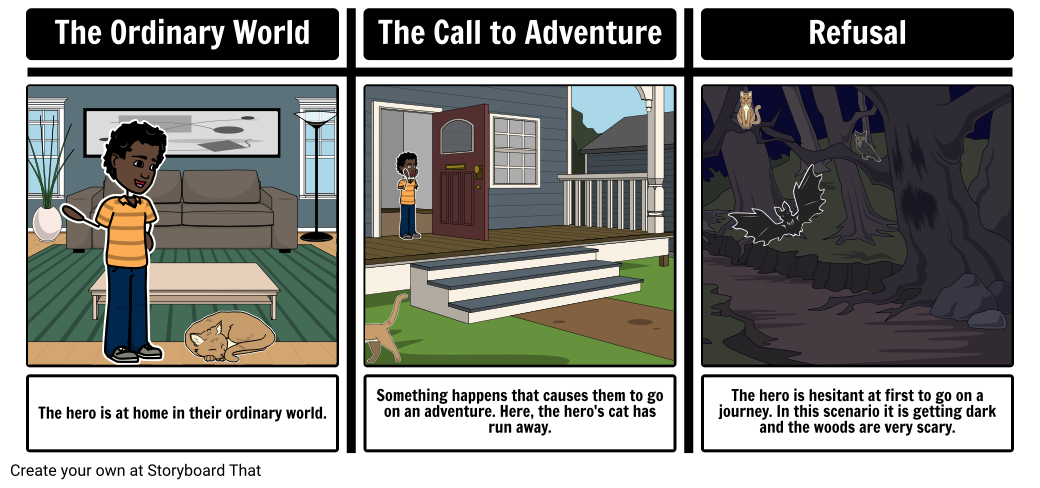
Part Two - Supreme Ordeal or Initiation
Once the hero makes the decision to leave the normal world, venture into the unfamiliar world, and has officially begun their mysterious adventure, they will meet a mentor figure (a sidekick in some genres) and together these two will cross the first threshold . This is the point where turning back is not an option, and where the hero must encounter tests, allies and enemies . Obstacles like tests and enemies must be overcome to continue. Helpers aid the hero in their journey.
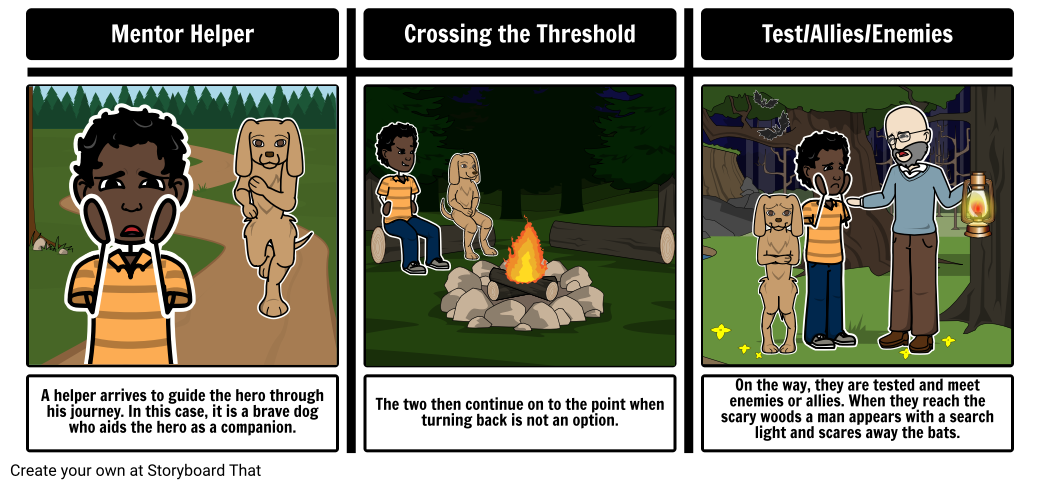
Part Three - Unification or Transformation
Having overcome initial obstacles, in this part of the heroic cycle, the hero and their allies reach the approach . Here they will prepare for the major challenge in this new or special world. During the approach, the hero undergoes an ordeal , testing them to point near death. Their greatest fear is sometimes exposed, and from the ordeal comes a new life or revival for the hero. This transformation is the final separation from their old life to their new life. For their efforts in overcoming the ordeal, the hero reaches the reward . The hero receives the reward for facing death. There may be a celebration, but there is also danger of losing the reward.

Part Four - Road Back or Hero's Return
Once the hero achieves their goal and the reward is won, the hero and companions start on the road back . The hero wants to complete the adventure and return to their ordinary world with their treasure. This stage is often referred to as either the resurrections or atonement . Hero's journey examples that showcase the atonement stage often highlight the protagonist's inner turmoil and the difficult decisions they must make to reconcile with their past and fully embrace their heroic destiny. The hero becomes "at one" with themselves. As the hero crosses the threshold (returning from the unknown to their ordinary world), the reader arrives at the climax of the story. Here, the hero is severely tested one last time. This test is an attempt to undo their previous achievements. At this point, the hero has come full circle, and the major conflict at the beginning of the journey is finally resolved. In the return home, the hero has now resumed life in his/her original world, and things are restored to ordinary.
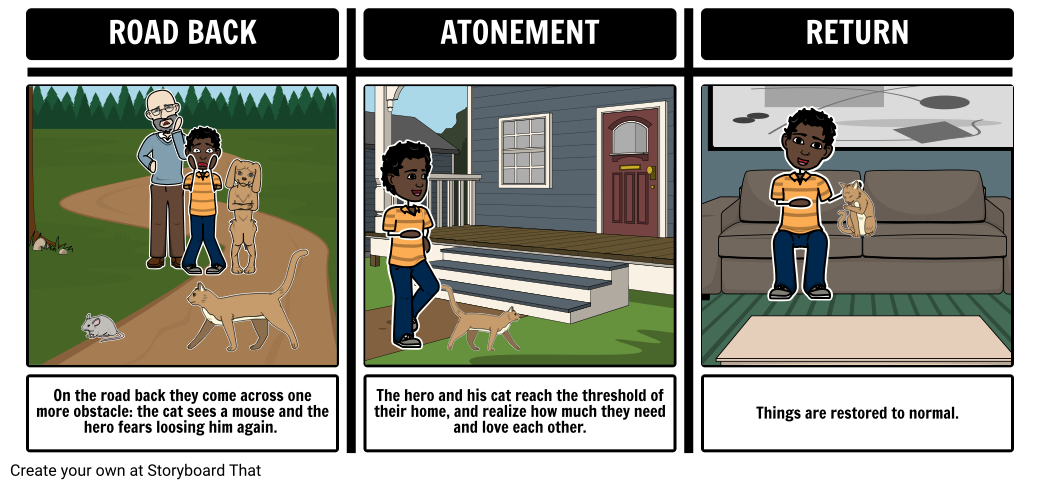
Popular Hero's Journey Examples
Monomyth example: homer's odyssey.
Monomyth examples typically involve a hero who embarks on an adventure, faces trials and challenges, undergoes personal transformation, and returns home or to society with newfound wisdom or a significant achievement, making this storytelling structure a powerful and timeless tool for crafting compelling narratives.
The hero's journey chart below for Homer’s Odyssey uses the abridged ninth grade version of the epic. The Heroic Journey in the original story of the Odyssey is not linear, beginning in media res , Latin for “in the middle of things”.)

To Kill a Mockingbird Heroic Journey

Did you know that many popular movies have heroes that follow this type of journey? It is true! In the "Star Wars" movies, Hollywood film producer George Lucas creates a journey for Luke Skywalker and Princess Leia. In "The Lion King", Simba goes on quite the adventure that ends in a final battle with his uncle Scar, a major turning point in the film before the hero returns to save his land. In "The Wizard of Oz", Dorothy takes on the role of the epic hero as she teeters between the two worlds of Kansas and Oz. These are just a few of the many examples of Campbell's theory in the cinematic realm.
Classroom Applications and Uses
Example exercises.
Create your own hero's journey examples using the Storyboard That Creator! Customize the level of detail and number of cells required for projects based on available class time and resources.
- Students identify the stages of the heroic journey in a piece of literature by creating one cell depicting each of the twelve steps.
- Students create storyboards that show and explain each stage found in the work of literature, using specific quotes from the text which highlight each part of the journey.
- Students create an outline of their own original story that follows the monomyth stages.
Common Core
- ELA-Literacy.RL.9-10.3 : Analyze how complex characters (e.g., those with multiple or conflicting motivations) develop over the course of a text, interact with other characters, and advance the plot or develop the theme
- ELA-Literacy.RL.9-10.7 : Analyze the representation of a subject or a key scene in two different artistic mediums, including what is emphasized or absent in each treatment (e.g., Auden’s “Musée des Beaux Arts” and Breughel’s Landscape with the Fall of Icarus)
- ELA-Literacy.W.9-10.6 : Use technology, including the Internet, to produce, publish, and update individual or shared writing products, taking advantage of technology’s capacity to link to other information and to display information flexibly and dynamically
- ELA-Literacy.SL.9-10.2 : Integrate multiple sources of information presented in diverse media or formats (e.g., visually, quantitatively, orally) evaluating the credibility and accuracy of each source
- ELA-Literacy.RL.11-12.3 : Analyze the impact of the author’s choices regarding how to develop and relate elements of a story or drama (e.g., where a story is set, how the action is ordered, how the characters are introduced and developed)
- ELA-Literacy.RL.11-12.7 : Analyze multiple interpretations of a story, drama, or poem (e.g., recorded or live production of a play or recorded novel or poetry), evaluating how each version interprets the source text. (Include at least one play by Shakespeare and one play by an American dramatist.)
- ELA-Literacy.W.11-12.6 : Use technology, including the Internet, to produce, publish, and update individual or shared writing products in response to ongoing feedback, including new arguments or information
- ELA-Literacy.SL.11-12.2 : Integrate multiple sources of information presented in diverse formats and media (e.g., visually, quantitatively, orally) in order to make informed decisions and solve problems, evaluating the credibility and accuracy of each source and noting any discrepancies among the data
Related Resources
- Plot Diagram and Narrative Arc
- Types of Conflict In Literature
- What is an Archetype?
- The Odyssey Teacher Guide
- Types of Heroes in Literature
How Teachers Can Use The Concept of The Heroic Journey To Help Students Better Understand Character Development In Literature
Introduce the concept of the heroic journey.
Teachers can introduce the concept of the heroic journey to students and explain the different stages involved in the journey. This will provide a framework for students to better understand how characters develop throughout the story.
Analyze Characters Using the Heroic Journey
Teachers can guide students through the stages of the heroic journey and ask them to identify where the character is in the journey. This will help students to understand the character's development and how their actions and decisions are influenced by the different stages of the journey.
Compare and Contrast Character Journeys
Teachers can ask students to compare and contrast the journeys of different characters within a story or across multiple stories. This will help students to gain a deeper understanding of how the heroic journey is used to develop characters in literature and how it can be applied across different genres and cultures.
Discuss the Role of Character Motivation
Teachers can encourage students to think critically about the motivations of characters at each stage of the journey. This will help students to understand why characters make certain decisions and how their motivations contribute to their development.
Apply the Concept to Real-Life Situations
Teachers can encourage students to apply the concept of the heroic journey to real-life situations. This will help students to see how the journey applies not only to literature, but also to their own lives and experiences.
Frequently Asked Questions about the Hero's Journey
What is a "monomyth" or the "hero's journey" in literature.
In comparative mythology, the monomyth, or the hero's journey, is the series of stages that can be applied to a variety of stories from all genres. It involves a hero who is called to pursue an adventure, undergoes an ordeal, achieves their goal and returns home transformed.
What are the 12 Stages of the Hero's Journey in literature?
- Ordinary World
- Call to Adventure
- Meeting the Mentor / Helper
- Crossing the Threshold
- Test / Allies / Enemies
What is a common theme in the hero's journey?
The Hero's Journey usually follows the path of the main character from childhood or young adulthood through maturity. It is about the common human experiences of growth, challenges and change that are relatable to us all.
Why should students learn about the hero's journey?
The hero's journey is relevant for students in that it demonstrates the possibility of overcoming adversity and the potential for growth and change that is within us all. It is a common theme of literature and movies that once students understand, they will be able to identify over and over again. It is helpful for students to make the text-to-self connection and apply this thinking to their own life as a "growth mindset" . They can see that they are on their own hero's journey and that everyone has the ability to overcome obstacles to achieve their goals and affect positive change in their lives and the lives of others.
What are some of the best examples of the hero's journey?
The hero's journey stages appear in more books than students may realize! Here are just a few examples of popular books that contain the monomyth structure:
- The Graveyard Book
- The Hunger Games
- To Kill a Mockingbird
- The Odyssey
- The Lions of Little Rock
- Wednesday Wars
- One Crazy Summer
- Out of My Mind
- Brown Girl Dreaming
- The Lightning Thief
- The Miraculous Journey of Edward Tulane
- The Stars Beneath Our Feet
- Fish in a Tree
Try 1 Month For
30 Day Money Back Guarantee New Customers Only Full Price After Introductory Offer
Learn more about our Department, School, and District packages
- 30 Day Money Back Guarantee
- New Customers Only
- Full Price After Introductory Offer
- Features for Creative Writers
- Features for Work
- Features for Higher Education
- Features for Teachers
- Features for Non-Native Speakers
- Learn Blog Grammar Guide Community Events FAQ
- Grammar Guide
Hero's Journey 101: How to Use the Hero's Journey to Plot Your Story

Dan Schriever

How many times have you heard this story? A protagonist is suddenly whisked away from their ordinary life and embarks on a grand adventure. Along the way they make new friends, confront perils, and face tests of character. In the end, evil is defeated, and the hero returns home a changed person.
That’s the Hero’s Journey in a nutshell. It probably sounds very familiar—and rightly so: the Hero’s Journey aspires to be the universal story, or monomyth, a narrative pattern deeply ingrained in literature and culture. Whether in books, movies, television, or folklore, chances are you’ve encountered many examples of the Hero’s Journey in the wild.
In this post, we’ll walk through the elements of the Hero’s Journey step by step. We’ll also study an archetypal example from the movie The Matrix (1999). Once you have mastered the beats of this narrative template, you’ll be ready to put your very own spin on it.
Sound good? Then let’s cross the threshold and let the journey begin.
What Is the Hero’s Journey?
The 12 stages of the hero’s journey, writing your own hero’s journey.
The Hero’s Journey is a common story structure for modeling both plot points and character development. A protagonist embarks on an adventure into the unknown. They learn lessons, overcome adversity, defeat evil, and return home transformed.

Joseph Campbell , a scholar of literature, popularized the monomyth in his influential work The Hero With a Thousand Faces (1949). Looking for common patterns in mythological narratives, Campbell described a character arc with 17 total stages, overlaid on a more traditional three-act structure. Not all need be present in every myth or in the same order.
The three stages, or acts, of Campbell’s Hero’s Journey are as follows:
1. Departure. The hero leaves the ordinary world behind.
2. Initiation. The hero ventures into the unknown ("the Special World") and overcomes various obstacles and challenges.
3. Return. The hero returns in triumph to the familiar world.
Hollywood has embraced Campbell’s structure, most famously in George Lucas’s Star Wars movies. There are countless examples in books, music, and video games, from fantasy epics and Disney films to sports movies.
In The Writer’s Journey: Mythic Structure for Writers (1992), screenwriter Christopher Vogler adapted Campbell’s three phases into the "12 Stages of the Hero’s Journey." This is the version we’ll analyze in the next section.

For writers, the purpose of the Hero’s Journey is to act as a template and guide. It’s not a rigid formula that your plot must follow beat by beat. Indeed, there are good reasons to deviate—not least of which is that this structure has become so ubiquitous.
Still, it’s helpful to master the rules before deciding when and how to break them. The 12 steps of the Hero's Journey are as follows :
- The Ordinary World
- The Call of Adventure
- Refusal of the Call
- Meeting the Mentor
- Crossing the First Threshold
- Tests, Allies, and Enemies
- Approach to the Inmost Cave
- Reward (Seizing the Sword)
- The Road Back
- Resurrection
- Return with the Elixir
Let’s take a look at each stage in more detail. To show you how the Hero’s Journey works in practice, we’ll also consider an example from the movie The Matrix (1999). After all, what blog has not been improved by a little Keanu Reeves?

#1: The Ordinary World
This is where we meet our hero, although the journey has not yet begun: first, we need to establish the status quo by showing the hero living their ordinary, mundane life.
It’s important to lay the groundwork in this opening stage, before the journey begins. It lets readers identify with the hero as just a regular person, “normal” like the rest of us. Yes, there may be a big problem somewhere out there, but the hero at this stage has very limited awareness of it.
The Ordinary World in The Matrix :
We are introduced to Thomas A. Anderson, aka Neo, programmer by day, hacker by night. While Neo runs a side operation selling illicit software, Thomas Anderson lives the most mundane life imaginable: he works at his cubicle, pays his taxes, and helps the landlady carry out her garbage.
#2: The Call to Adventure
The journey proper begins with a call to adventure—something that disrupts the hero’s ordinary life and confronts them with a problem or challenge they can’t ignore. This can take many different forms.
While readers may already understand the stakes, the hero is realizing them for the first time. They must make a choice: will they shrink from the call, or rise to the challenge?
The Call to Adventure in The Matrix :
A mysterious message arrives in Neo’s computer, warning him that things are not as they seem. He is urged to “follow the white rabbit.” At a nightclub, he meets Trinity, who tells him to seek Morpheus.
#3: Refusal of the Call
Oops! The hero chooses option A and attempts to refuse the call to adventure. This could be for any number of reasons: fear, disbelief, a sense of inadequacy, or plain unwillingness to make the sacrifices that are required.
A little reluctance here is understandable. If you were asked to trade the comforts of home for a life-and-death journey fraught with peril, wouldn’t you give pause?
Refusal of the Call in The Matrix :
Agents arrive at Neo’s office to arrest him. Morpheus urges Neo to escape by climbing out a skyscraper window. “I can’t do this… This is crazy!” Neo protests as he backs off the ledge.

#4: Meeting the Mentor
Okay, so the hero got cold feet. Nothing a little pep talk can’t fix! The mentor figure appears at this point to give the hero some much needed counsel, coaching, and perhaps a kick out the door.
After all, the hero is very inexperienced at this point. They’re going to need help to avoid disaster or, worse, death. The mentor’s role is to overcome the hero’s reluctance and prepare them for what lies ahead.
Meeting the Mentor in The Matrix :
Neo meets with Morpheus, who reveals a terrifying truth: that the ordinary world as we know it is a computer simulation designed to enslave humanity to machines.
#5: Crossing the First Threshold
At this juncture, the hero is ready to leave their ordinary world for the first time. With the mentor’s help, they are committed to the journey and ready to step across the threshold into the special world . This marks the end of the departure act and the beginning of the adventure in earnest.
This may seem inevitable, but for the hero it represents an important choice. Once the threshold is crossed, there’s no going back. Bilbo Baggins put it nicely: “It’s a dangerous business, Frodo, going out your door. You step onto the road, and if you don't keep your feet, there's no knowing where you might be swept off to.”
Crossing the First Threshold in The Matrix :
Neo is offered a stark choice: take the blue pill and return to his ordinary life none the wiser, or take the red pill and “see how deep the rabbit hole goes.” Neo takes the red pill and is extracted from the Matrix, entering the real world .
#6: Tests, Allies, and Enemies
Now we are getting into the meat of the adventure. The hero steps into the special world and must learn the new rules of an unfamiliar setting while navigating trials, tribulations, and tests of will. New characters are often introduced here, and the hero must navigate their relationships with them. Will they be friend, foe, or something in between?
Broadly speaking, this is a time of experimentation and growth. It is also one of the longest stages of the journey, as the hero learns the lay of the land and defines their relationship to other characters.
Wondering how to create captivating characters? Read our guide , which explains how to shape characters that readers will love—or hate.
Tests, Allies, and Enemies in The Matrix :
Neo is introduced to the vagabond crew of the Nebuchadnezzar . Morpheus informs Neo that he is The One , a savior destined to liberate humanity. He learns jiu jitsu and other useful skills.
#7: Approach to the Inmost Cave

Time to get a little metaphorical. The inmost cave isn’t a physical cave, but rather a place of great danger—indeed, the most dangerous place in the special world . It could be a villain’s lair, an impending battle, or even a mental barrier. No spelunking required.
Broadly speaking, the approach is marked by a setback in the quest. It becomes a lesson in persistence, where the hero must reckon with failure, change their mindset, or try new ideas.
Note that the hero hasn’t entered the cave just yet. This stage is about the approach itself, which the hero must navigate to get closer to their ultimate goal. The stakes are rising, and failure is no longer an option.
Approach to the Inmost Cave in The Matrix :
Neo pays a visit to The Oracle. She challenges Neo to “know thyself”—does he believe, deep down, that he is The One ? Or does he fear that he is “just another guy”? She warns him that the fate of humanity hangs in the balance.
#8: The Ordeal
The ordeal marks the hero’s greatest test thus far. This is a dark time for them: indeed, Campbell refers to it as the “belly of the whale.” The hero experiences a major hurdle or obstacle, which causes them to hit rock bottom.
This is a pivotal moment in the story, the main event of the second act. It is time for the hero to come face to face with their greatest fear. It will take all their skills to survive this life-or-death crisis. Should they succeed, they will emerge from the ordeal transformed.
Keep in mind: the story isn’t over yet! Rather, the ordeal is the moment when the protagonist overcomes their weaknesses and truly steps into the title of hero .
The Ordeal in The Matrix :
When Cipher betrays the crew to the agents, Morpheus sacrifices himself to protect Neo. In turn, Neo makes his own choice: to risk his life in a daring rescue attempt.
#9: Reward (Seizing the Sword)
The ordeal was a major level-up moment for the hero. Now that it's been overcome, the hero can reap the reward of success. This reward could be an object, a skill, or knowledge—whatever it is that the hero has been struggling toward. At last, the sword is within their grasp.
From this moment on, the hero is a changed person. They are now equipped for the final conflict, even if they don’t fully realize it yet.
Reward (Seizing the Sword) in The Matrix :
Neo’s reward is helpfully narrated by Morpheus during the rescue effort: “He is beginning to believe.” Neo has gained confidence that he can fight the machines, and he won’t back down from his destiny.

#10: The Road Back
We’re now at the beginning of act three, the return . With the reward in hand, it’s time to exit the inmost cave and head home. But the story isn’t over yet.
In this stage, the hero reckons with the consequences of act two. The ordeal was a success, but things have changed now. Perhaps the dragon, robbed of his treasure, sets off for revenge. Perhaps there are more enemies to fight. Whatever the obstacle, the hero must face them before their journey is complete.
The Road Back in The Matrix :
The rescue of Morpheus has enraged Agent Smith, who intercepts Neo before he can return to the Nebuchadnezzar . The two foes battle in a subway station, where Neo’s skills are pushed to their limit.
#11: Resurrection
Now comes the true climax of the story. This is the hero’s final test, when everything is at stake: the battle for the soul of Gotham, the final chance for evil to triumph. The hero is also at the peak of their powers. A happy ending is within sight, should they succeed.
Vogler calls the resurrection stage the hero’s “final exam.” They must draw on everything they have learned and prove again that they have really internalized the lessons of the ordeal . Near-death escapes are not uncommon here, or even literal deaths and resurrections.
Resurrection in The Matrix :
Despite fighting valiantly, Neo is defeated by Agent Smith and killed. But with Trinity’s help, he is resurrected, activating his full powers as The One . Isn’t it wonderful how literal The Matrix can be?
#12: Return with the Elixir
Hooray! Evil has been defeated and the hero is transformed. It’s time for the protagonist to return home in triumph, and share their hard-won prize with the ordinary world . This prize is the elixir —the object, skill, or insight that was the hero’s true reward for their journey and transformation.
Return with the Elixir in The Matrix :
Neo has defeated the agents and embraced his destiny. He returns to the simulated world of the Matrix, this time armed with god-like powers and a resolve to open humanity’s eyes to the truth.

If you’re writing your own adventure, you may be wondering: should I follow the Hero’s Journey structure?
The good news is, it’s totally up to you. Joseph Campbell conceived of the monomyth as a way to understand universal story structure, but there are many ways to outline a novel. Feel free to play around within its confines, adapt it across different media, and disrupt reader expectations. It’s like Morpheus says: “Some of these rules can be bent. Others can be broken.”
Think of the Hero’s Journey as a tool. If you’re not sure where your story should go next, it can help to refer back to the basics. From there, you’re free to choose your own adventure.
Are you prepared to write your novel? Download this free book now:

The Novel-Writing Training Plan
So you are ready to write your novel. excellent. but are you prepared the last thing you want when you sit down to write your first draft is to lose momentum., this guide helps you work out your narrative arc, plan out your key plot points, flesh out your characters, and begin to build your world..

Be confident about grammar
Check every email, essay, or story for grammar mistakes. Fix them before you press send.
Dan holds a PhD from Yale University and CEO of FaithlessMTG
Get started with ProWritingAid
Drop us a line or let's stay in touch via :
Holiday Savings

cui:common.components.upgradeModal.offerHeader_undefined
The hero's journey: a story structure as old as time, the hero's journey offers a powerful framework for creating quest-based stories emphasizing self-transformation..

Table of Contents
Holding out for a hero to take your story to the next level?
The Hero’s Journey might be just what you’ve been looking for. Created by Joseph Campbell, this narrative framework packs mythic storytelling into a series of steps across three acts, each representing a crucial phase in a character's transformative journey.
Challenge . Growth . Triumph .
Whether you're penning a novel, screenplay, or video game, The Hero’s Journey is a tried-and-tested blueprint for crafting epic stories that transcend time and culture. Let’s explore the steps together and kickstart your next masterpiece.
What is the Hero’s Journey?
The Hero’s Journey is a famous template for storytelling, mapping a hero's adventurous quest through trials and tribulations to ultimate transformation.

What are the Origins of the Hero’s Journey?
The Hero’s Journey was invented by Campbell in his seminal 1949 work, The Hero with a Thousand Faces , where he introduces the concept of the "monomyth."
A comparative mythologist by trade, Campbell studied myths from cultures around the world and identified a common pattern in their narratives. He proposed that all mythic narratives are variations of a single, universal story, structured around a hero's adventure, trials, and eventual triumph.
His work unveiled the archetypal hero’s path as a mirror to humanity’s commonly shared experiences and aspirations. It was subsequently named one of the All-Time 100 Nonfiction Books by TIME in 2011.
How are the Hero’s and Heroine’s Journeys Different?
While both the Hero's and Heroine's Journeys share the theme of transformation, they diverge in their focus and execution.
The Hero’s Journey, as outlined by Campbell, emphasizes external challenges and a quest for physical or metaphorical treasures. In contrast, Murdock's Heroine’s Journey, explores internal landscapes, focusing on personal reconciliation, emotional growth, and the path to self-actualization.
In short, heroes seek to conquer the world, while heroines seek to transform their own lives; but…
Twelve Steps of the Hero’s Journey
So influential was Campbell’s monomyth theory that it's been used as the basis for some of the largest franchises of our generation: The Lord of the Rings , Harry Potter ...and George Lucas even cited it as a direct influence on Star Wars .
There are, in fact, several variations of the Hero's Journey, which we discuss further below. But for this breakdown, we'll use the twelve-step version outlined by Christopher Vogler in his book, The Writer's Journey (seemingly now out of print, unfortunately).

You probably already know the above stories pretty well so we’ll unpack the twelve steps of the Hero's Journey using Ben Gates’ journey in National Treasure as a case study—because what is more heroic than saving the Declaration of Independence from a bunch of goons?
Ye be warned: Spoilers ahead!
Act One: Departure
Step 1. the ordinary world.
The journey begins with the status quo—business as usual. We meet the hero and are introduced to the Known World they live in. In other words, this is your exposition, the starting stuff that establishes the story to come.

National Treasure begins in media res (preceded only by a short prologue), where we are given key information that introduces us to Ben Gates' world, who he is (a historian from a notorious family), what he does (treasure hunts), and why he's doing it (restoring his family's name).
With the help of his main ally, Riley, and a crew of other treasure hunters backed by a wealthy patron, he finds an 18th-century American ship in the Canadian Arctic, the Charlotte . Here, they find a ship-shaped pipe that presents a new riddle and later doubles as a key—for now, it's just another clue in the search for the lost treasure of the Templars, one that leads them to the Declaration of Independence.
Step 2. The Call to Adventure
The inciting incident takes place and the hero is called to act upon it. While they're still firmly in the Known World, the story kicks off and leaves the hero feeling out of balance. In other words, they are placed at a crossroads.
Ian (the wealthy patron of the Charlotte operation) steals the pipe from Ben and Riley and leaves them stranded. This is a key moment: Ian becomes the villain, Ben has now sufficiently lost his funding for this expedition, and if he decides to pursue the chase, he'll be up against extreme odds.
Step 3. Refusal of the Call
The hero hesitates and instead refuses their call to action. Following the call would mean making a conscious decision to break away from the status quo. Ahead lies danger, risk, and the unknown; but here and now, the hero is still in the safety and comfort of what they know.
Ben debates continuing the hunt for the Templar treasure. Before taking any action, he decides to try and warn the authorities: the FBI, Homeland Security, and the staff of the National Archives, where the Declaration of Independence is housed and monitored. Nobody will listen to him, and his family's notoriety doesn't help matters.
Step 4. Meeting the Mentor
The protagonist receives knowledge or motivation from a powerful or influential figure. This is a tactical move on the hero's part—remember that it was only the previous step in which they debated whether or not to jump headfirst into the unknown. By Meeting the Mentor, they can gain new information or insight, and better equip themselves for the journey they might to embark on.

Abigail, an archivist at the National Archives, brushes Ben and Riley off as being crazy, but Ben uses the interaction to his advantage in other ways—to seek out information about how the Declaration of Independence is stored and cared for, as well as what (and more importantly, who) else he might be up against in his own attempt to steal it.
In a key scene, we see him contemplate the entire operation while standing over the glass-encased Declaration of Independence. Finally, he firmly decides to pursue the treasure and stop Ian, uttering the famous line, "I'm gonna steal the Declaration of Independence."
Act Two: Initiation
Step 5. crossing the threshold.
The hero leaves the Known World to face the Unknown World. They are fully committed to the journey, with no way to turn back now. There may be a confrontation of some sort, and the stakes will be raised.

Ben and Riley infiltrate the National Archives during a gala and successfully steal the Declaration of Independence. But wait—it's not so easy. While stealing the Declaration of Independence, Abigail suspects something is up and Ben faces off against Ian.
Then, when trying to escape the building, Ben exits through the gift shop, where an attendant spots the document peeking out of his jacket. He is forced to pay for it, feigning that it's a replica—and because he doesn't have enough cash, he has to use his credit card, so there goes keeping his identity anonymous.
The game is afoot.
Step 6. Tests, Allies, Enemies
The hero explores the Unknown World. Now that they have firmly crossed the threshold from the Known World, the hero will face new challenges and possibly meet new enemies. They'll have to call upon their allies, new and old, in order to keep moving forward.
Abigail reluctantly joins the team under the agreement that she'll help handle the Declaration of Independence, given her background in document archiving and restoration. Ben and co. seek the aid of Ben's father, Patrick Gates, whom Ben has a strained relationship with thanks to years of failed treasure hunting that has created a rift between grandfather, father, and son. Finally, they travel around Philadelphia deciphering clues while avoiding both Ian and the FBI.
Step 7. Approach the Innermost Cave
The hero nears the goal of their quest, the reason they crossed the threshold in the first place. Here, they could be making plans, having new revelations, or gaining new skills. To put it in other familiar terms, this step would mark the moment just before the story's climax.
Ben uncovers a pivotal clue—or rather, he finds an essential item—a pair of bifocals with interchangeable lenses made by Benjamin Franklin. It is revealed that by switching through the various lenses, different messages will be revealed on the back of the Declaration of Independence. He's forced to split from Abigail and Riley, but Ben has never been closer to the treasure.
Step 8. The Ordeal
The hero faces a dire situation that changes how they view the world. All threads of the story come together at this pinnacle, the central crisis from which the hero will emerge unscathed or otherwise. The stakes will be at their absolute highest here.
Vogler details that in this stage, the hero will experience a "death," though it need not be literal. In your story, this could signify the end of something and the beginning of another, which could itself be figurative or literal. For example, a certain relationship could come to an end, or it could mean someone "stuck in their ways" opens up to a new perspective.
In National Treasure , The FBI captures Ben and Ian makes off with the Declaration of Independence—all hope feels lost. To add to it, Ian reveals that he's kidnapped Ben's father and threatens to take further action if Ben doesn't help solve the final clues and lead Ian to the treasure.
Ben escapes the FBI with Ian's help, reunites with Abigail and Riley, and leads everyone to an underground structure built below Trinity Church in New York City. Here, they manage to split from Ian once more, sending him on a goose chase to Boston with a false clue, and proceed further into the underground structure.
Though they haven't found the treasure just yet, being this far into the hunt proves to Ben's father, Patrick, that it's real enough. The two men share an emotional moment that validates what their family has been trying to do for generations.
Step 9. Reward
This is it, the moment the hero has been waiting for. They've survived "death," weathered the crisis of The Ordeal, and earned the Reward for which they went on this journey.

Now, free of Ian's clutches and with some light clue-solving, Ben, Abigail, Riley, and Patrick keep progressing through the underground structure and eventually find the Templar's treasure—it's real and more massive than they could have imagined. Everyone revels in their discovery while simultaneously looking for a way back out.
Act Three: Return
Step 10. the road back.
It's time for the journey to head towards its conclusion. The hero begins their return to the Known World and may face unexpected challenges. Whatever happens, the "why" remains paramount here (i.e. why the hero ultimately chose to embark on their journey).
This step marks a final turning point where they'll have to take action or make a decision to keep moving forward and be "reborn" back into the Known World.
Act Three of National Treasure is admittedly quite short. After finding the treasure, Ben and co. emerge from underground to face the FBI once more. Not much of a road to travel back here so much as a tunnel to scale in a crypt.
Step 11. Resurrection
The hero faces their ultimate challenge and emerges victorious, but forever changed. This step often requires a sacrifice of some sort, and having stepped into the role of The Hero™, they must answer to this.

Ben is given an ultimatum— somebody has to go to jail (on account of the whole stealing-the-Declaration-of-Independence thing). But, Ben also found a treasure worth millions of dollars and that has great value to several nations around the world, so that counts for something.
Ultimately, Ben sells Ian out, makes a deal to exonerate his friends and family, and willingly hands the treasure over to the authorities. Remember: he wanted to find the treasure, but his "why" was to restore the Gates family name, so he won regardless.
Step 12. Return With the Elixir
Finally, the hero returns home as a new version of themself, the elixir is shared amongst the people, and the journey is completed full circle.
The elixir, like many other elements of the hero's journey, can be literal or figurative. It can be a tangible thing, such as an actual elixir meant for some specific purpose, or it could be represented by an abstract concept such as hope, wisdom, or love.
Vogler notes that if the Hero's Journey results in a tragedy, the elixir can instead have an effect external to the story—meaning that it could be something meant to affect the audience and/or increase their awareness of the world.
In the final scene of National Treasure , we see Ben and Abigail walking the grounds of a massive estate. Riley pulls up in a fancy sports car and comments on how they could have gotten more money. They all chat about attending a museum exhibit in Cairo (Egypt).
In one scene, we're given a lot of closure: Ben and co. received a hefty payout for finding the treasure, Ben and Abigail are a couple now, and the treasure was rightfully spread to those it benefitted most—in this case, countries who were able to reunite with significant pieces of their history. Everyone's happy, none of them went to jail despite the serious crimes committed, and they're all a whole lot wealthier. Oh, Hollywood.
Variations of the Hero's Journey
Plot structure is important, but you don't need to follow it exactly; and, in fact, your story probably won't. Your version of the Hero's Journey might require more or fewer steps, or you might simply go off the beaten path for a few steps—and that's okay!

What follows are three additional versions of the Hero's Journey, which you may be more familiar with than Vogler's version presented above.
Dan Harmon's Story Circle (or, The Eight-Step Hero's Journey)
Screenwriter Dan Harmon has riffed on the Hero's Journey by creating a more compact version, the Story Circle —and it works especially well for shorter-format stories such as television episodes, which happens to be what Harmon writes.
The Story Circle comprises eight simple steps with a heavy emphasis on the hero's character arc:
- The hero is in a zone of comfort...
- But they want something.
- They enter an unfamiliar situation...
- And adapt to it by facing trials.
- They get what they want...
- But they pay a heavy price for it.
- They return to their familiar situation...
- Having changed.
You may have noticed, but there is a sort of rhythm here. The eight steps work well in four pairs, simplifying the core of the Hero's Journey even further:
- The hero is in a zone of comfort, but they want something.
- They enter an unfamiliar situation and have to adapt via new trials.
- They get what they want, but they pay a price for it.
- They return to their zone of comfort, forever changed.
If you're writing shorter fiction, such as a short story or novella, definitely check out the Story Circle. It's the Hero's Journey minus all the extraneous bells & whistles.
Ten-Step Hero's Journey
The ten-step Hero's Journey is similar to the twelve-step version we presented above. It includes most of the same steps except for Refusal of the Call and Meeting the Mentor, arguing that these steps aren't as essential to include; and, it moves Crossing the Threshold to the end of Act One and Reward to the end of Act Two.
- The Ordinary World
- The Call to Adventure
- Crossing the Threshold
- Tests, Allies, Enemies
- Approach the Innermost Cave
- The Road Back
- Resurrection
- Return with Elixir
We've previously written about the ten-step hero's journey in a series of essays separated by act: Act One (with a prologue), Act Two , and Act Three .
Twelve-Step Hero's Journey: Version Two
Again, the second version of the twelve-step hero's journey is very similar to the one above, save for a few changes, including in which story act certain steps appear.
This version skips The Ordinary World exposition and starts right at The Call to Adventure; then, the story ends with two new steps in place of Return With Elixir: The Return and The Freedom to Live.
- The Refusal of the Call
- Meeting the Mentor
- Test, Allies, Enemies
- Approaching the Innermost Cave
- The Resurrection
- The Return*
- The Freedom to Live*
In the final act of this version, there is more of a focus on an internal transformation for the hero. They experience a metamorphosis on their journey back to the Known World, return home changed, and go on to live a new life, uninhibited.
Seventeen-Step Hero's Journey
Finally, the granddaddy of heroic journeys: the seventeen-step Hero's Journey. This version includes a slew of extra steps your hero might face out in the expanse.
- Refusal of the Call
- Supernatural Aid (aka Meeting the Mentor)
- Belly of the Whale*: This added stage marks the hero's immediate descent into danger once they've crossed the threshold.
- Road of Trials (...with Allies, Tests, and Enemies)
- Meeting with the Goddess/God*: In this stage, the hero meets with a new advisor or powerful figure, who equips them with the knowledge or insight needed to keep progressing forward.
- Woman as Temptress (or simply, Temptation)*: Here, the hero is tempted, against their better judgment, to question themselves and their reason for being on the journey. They may feel insecure about something specific or have an exposed weakness that momentarily holds them back.
- Atonement with the Father (or, Catharthis)*: The hero faces their Temptation and moves beyond it, shedding free from all that holds them back.
- Apotheosis (aka The Ordeal)
- The Ultimate Boon (aka the Reward)
- Refusal of the Return*: The hero wonders if they even want to go back to their old life now that they've been forever changed.
- The Magic Flight*: Having decided to return to the Known World, the hero needs to actually find a way back.
- Rescue From Without*: Allies may come to the hero's rescue, helping them escape this bold, new world and return home.
- Crossing of the Return Threshold (aka The Return)
- Master of Two Worlds*: Very closely resembling The Resurrection stage in other variations, this stage signifies that the hero is quite literally a master of two worlds—The Known World and the Unknown World—having conquered each.
- Freedom to Live
Again, we skip the Ordinary World opening here. Additionally, Acts Two and Three look pretty different from what we've seen so far, although, the bones of the Hero's Journey structure remain.
The Eight Hero’s Journey Archetypes
The Hero is, understandably, the cornerstone of the Hero’s Journey, but they’re just one of eight key archetypes that make up this narrative framework.

In The Writer's Journey , Vogler outlined seven of these archetypes, only excluding the Ally, which we've included below. Here’s a breakdown of all eight with examples:
1. The Hero
As outlined, the Hero is the protagonist who embarks on a transformative quest or journey. The challenges they overcome represent universal human struggles and triumphs.
Vogler assigned a "primary function" to each archetype—helpful for establishing their role in a story. The Hero's primary function is "to service and sacrifice."
Example: Neo from The Matrix , who evolves from a regular individual into the prophesied savior of humanity.
2. The Mentor
A wise guide offering knowledge, tools, and advice, Mentors help the Hero navigate the journey and discover their potential. Their primary function is "to guide."
Example: Mr. Miyagi from The Karate Kid imparts not only martial arts skills but invaluable life lessons to Daniel.
3. The Ally
Companions who support the Hero, Allies provide assistance, friendship, and moral support throughout the journey. They may also become a friends-to-lovers romantic partner.
Not included in Vogler's list is the Ally, though we'd argue they are essential nonetheless. Let's say their primary function is "to aid and support."
Example: Samwise Gamgee from Lord of the Rings , a loyal friend and steadfast supporter of Frodo.
4. The Herald
The Herald acts as a catalyst to initiate the Hero's Journey, often presenting a challenge or calling the hero to adventure. Their primary function is "to warn or challenge."
Example: Effie Trinket from The Hunger Games , whose selection at the Reaping sets Katniss’s journey into motion.
5. The Trickster
A character who brings humor and unpredictability, challenges conventions, and offers alternative perspectives or solutions. Their primary function is "to disrupt."
Example: Loki from Norse mythology exemplifies the trickster, with his cunning and chaotic influence.
6. The Shapeshifter
Ambiguous figures whose allegiance and intentions are uncertain. They may be a friend one moment and a foe the next. Their primary function is "to question and deceive."
Example: Catwoman from the Batman universe often blurs the line between ally and adversary, slinking between both roles with glee.
7. The Guardian
Protectors of important thresholds, Guardians challenge or test the Hero, serving as obstacles to overcome or lessons to be learned. Their primary function is "to test."
Example: The Black Knight in Monty Python and the Holy Grail literally bellows “None shall pass!”—a quintessential ( but not very effective ) Guardian.
8. The Shadow
Represents the Hero's inner conflict or an antagonist, often embodying the darker aspects of the hero or their opposition. Their primary function is "to destroy."
Example: Zuko from Avatar: The Last Airbender; initially an adversary, his journey parallels the Hero’s path of transformation.
While your story does not have to use all of the archetypes, they can help you develop your characters and visualize how they interact with one another—especially the Hero.
For example, take your hero and place them in the center of a blank worksheet, then write down your other major characters in a circle around them and determine who best fits into which archetype. Who challenges your hero? Who tricks them? Who guides them? And so on...
Stories that Use the Hero’s Journey
Not a fan of saving the Declaration of Independence? Check out these alternative examples of the Hero’s Journey to get inspired:
- Epic of Gilgamesh : An ancient Mesopotamian epic poem thought to be one of the earliest examples of the Hero’s Journey (and one of the oldest recorded stories).
- The Lion King (1994): Simba's exile and return depict a tale of growth, responsibility, and reclaiming his rightful place as king.
- The Alchemist by Paolo Coehlo: Santiago's quest for treasure transforms into a journey of self-discovery and personal enlightenment.
- Coraline by Neil Gaiman: A young girl's adventure in a parallel world teaches her about courage, family, and appreciating her own reality.
- Kung Fu Panda (2008): Po's transformation from a clumsy panda to a skilled warrior perfectly exemplifies the Hero's Journey. Skadoosh!
The Hero's Journey is so generalized that it's ubiquitous. You can plop the plot of just about any quest-style narrative into its framework and say that the story follows the Hero's Journey. Try it out for yourself as an exercise in getting familiar with the method.
Will the Hero's Journey Work For You?
As renowned as it is, the Hero's Journey works best for the kinds of tales that inspired it: mythic stories.
Writers of speculative fiction may gravitate towards this method over others, especially those writing epic fantasy and science fiction (big, bold fantasy quests and grand space operas come to mind).
The stories we tell today are vast and varied, and they stretch far beyond the dealings of deities, saving kingdoms, or acquiring some fabled "elixir." While that may have worked for Gilgamesh a few thousand years ago, it's not always representative of our lived experiences here and now.
If you decide to give the Hero's Journey a go, we encourage you to make it your own! The pieces of your plot don't have to neatly fit into the structure, but you can certainly make a strong start on mapping out your story.
Hero's Journey Campfire Template
The Timeline Module in Campfire offers a versatile canvas to plot out each basic component of your story while featuring nested "notebooks."

Simply double-click on each event card in your timeline to open up a canvas specific to that card. This allows you to look at your plot at the highest level, while also adding as much detail for each plot element as needed!
If you're just hearing about Campfire for the first time, it's free to sign up—forever! Let's plot the most epic of hero's journeys 👇
Lessons From the Hero’s Journey
The Hero's Journey offers a powerful framework for creating stories centered around growth, adventure, and transformation.
If you want to develop compelling characters, spin out engaging plots, and write books that express themes of valor and courage, consider The Hero’s Journey your blueprint. So stop holding out for a hero, and start writing!
Does your story mirror the Hero's Journey? Let us know in the comments below.

The Art of Narrative
Learn to write.

A Complete Guide to The Hero’s Journey (or The Monomyth)
Learn how to use the 12 steps of the Hero’s Journey to structure plot, develop characters, and write riveting stories that will keep readers engaged!
Before I start this post I would like to acknowledged the tragedy that occurred in my country this past month. George Floyd, an innocent man, was murdered by a police officer while three other officers witnessed that murder and remained silent.
To remain silent, in the face of injustice, violen ce, and murder is to be complicit . I acknowledge that as a white man I have benefited from a centuries old system of privilege and abuse against black people, women, American Indians, immigrants, and many, many more.
This systemic abuse is what lead to the murder of George Floyd, Breonna Taylor, Ahmaud Arbery, Sandra Bland, Eric Garner, Treyvon Martin, Philando Castile, Freddie Gray, Walter Scott, Tamir Rice and many more. Too many.
Whether I like it or not I’ve been complicit in this injustice. We can’t afford to be silent anymore. If you’re disturbed by the violence we’ve wit nessed over, and over again please vote this November, hold your local governments accountable, peacefully protest, and listen. Hopefully, together we can bring positive change. And, together, we can heal .
In this post, we’ll go over the stages of Joseph Campbell’s Hero’s Journey, also known as the Monomyth. We’ll talk about how to use it to structure your story. You’ll also find some guided questions for each section of the Hero’s Journey. These questions are designed to help guide your thinking during the writing process. Finally, we’ll go through an example of the Hero’s Journey from 1997’s Men In Black.
Down at the bottom, we’ll go over reasons you shouldn’t rely on the Monomyth. And we’ll talk about a few alternatives for you to consider if the Hero’s Journey isn’t right for your story.
But, before we do all that let’s answer the obvious question-
What is the Hero’s Journey?

The Hero’s Journey was first described by Joseph Campbell. Campbell was an American professor of literature at Sarah Lawrence College. He wrote about the Hero’s Journey in his book The Hero with a Thousand Faces . More than a guide, this book was a study on the fundamental structure of myths throughout history.
Through his study, Campbell identified seventeen stages that make up what he called the Monomyth or Hero’s Journey. We’ll go over these stages in the next section. Here’s how Campbell describes the Monomyth in his book:
“A hero ventures forth from the world of common day into a region of supernatural wonder: fabulous forces are there encountered and a decisive victory is won: the hero comes back from this mysterious adventure with the power to bestow boons on his fellow man.”
Something important to note is that the Monomyth was not conceived as a tool for writers to develop a plot. Rather, Campbell identified it as a narrative pattern that was common in mythology.
George Lucas used Campbell’s Monomyth to structure his original Star Wars film. Thanks to Star Wars ’ success, filmmakers have adopted the Hero’s Journey as a common plot structure in movies.
We see it in films like The Matrix , Spider-man , The Lion King , and many more. But, keep in mind, this is not the only way to structure a story. We’ll talk about some alternatives at the end of this post.
With that out of the way, let’s go over the twelve stages of the Hero’s Journey, or Monomyth. We’ll use the original Men In Black film as an example (because why not?). And, we’ll look at some questions to help guide your thinking, as a writer, at each stage.
Quick note – The original Hero’s Journey is seventeen stages. But, Christopher Vogler, an executive working for Disney, condensed Campbell’s work. Vogler’s version has twelve stages, and it’s the version we’re talking about today. Vogler wrote a guide to use the Monomyth and I’ll link to it at the bottom.)
The 12 Stages of The Hero’s Journey
The ordinary world .

This is where the hero’s story begins. We meet our hero in a down-to-earth, or humble setting. We establish the hero as an ordinary citizen in this world, not necessarily “special” in any way.
Think exposition .
We get to know our hero at this stage of the story. We learn about the hero’s life, struggles, inner or outer demons. This an opportunity for readers to identify with the hero. A good idea since the story will be told from the hero’s perspective.
Read more about perspective and POV here.
In Men In Black, we meet our hero, James, who will become Agent J, chasing someone down the streets of a large city. The story reveals some important details through the action of the plo t. Let’s go over these details and how they’re shown through action.
Agent J’s job: He’s a cop. We know this because he’s chasing a criminal. He waves a badge and yells, “NYPD! Stop!”
The setting: The line “NYPD!” tells us that J is a New York City cop. The chase sequence also culminates on the roof of the Guggenheim Museum. Another clue to the setting.
J’s Personality: J is a dedicated cop. We know this because of his relentless pursuit of the suspect he’s chasing. J is also brave. He jumps off a bridge onto a moving bus. He also chases a man after witnessing him climb vertically, several stories, up a wall. This is an inhuman feat that would have most people noping out of there. J continues his pursuit, though.
Guided Questions
- What is your story’s ordinary world setting?
- How is this ordinary world different from the special world that your hero will enter later in the story?
- What action in this story will reveal the setting?
- Describe your hero and their personality.
- What action in the story will reveal details about your hero?
The Call of Adventure

The Call of Adventure is an event in the story that forces the hero to take action. The hero will move out of their comfort zone, aka the ordinary world. Does this sound familiar? It should, because, in practice, The Call of Adventure is an Inciting Event.
Read more about Inciting Events here.
The Call of Adventure can take many forms. It can mean a literal call like one character asking another to go with them on a journey or to help solve a problem. It can also be an event in the story that forces the character to act.
The Call of Adventure can include things like the arrival of a new character, a violent act of nature, or a traumatizing event. The Call can also be a series of events like what we see in our example from Men In Black.
The first Call of Adventure comes from the alien that Agent J chases to the roof of the Guggenheim. Before leaping from the roof, the alien says to J, “Your world’s going to end.” This pique’s the hero’s interest and hints at future conflict.
The second Call of Adventure comes after Agent K shows up to question J about the alien. K wipes J’s memory after the interaction, but he gives J a card with an address and a time. At this point, J has no idea what’s happened. All he knows is that K has asked him to show up at a specific place the next morning.
The final and most important Call comes after K has revealed the truth to J while the two sit on a park bench together. Agent K tells J that aliens exist. K reveals that there is a secret organization that controls alien activity on Earth. And the Call- Agent K wants J to come to work for this organization.
- What event (or events) happen to incite your character to act?
- How are these events disruptive to your character’s life?
- What aspects of your story’s special world will be revealed and how? (think action)
- What other characters will you introduce as part of this special world?
Refusal of the Call

This is an important stage in the Monomyth. It communicates with the audience the risks that come with Call to Adventure. Every Hero’s Journey should include risks to the main characters and a conflict. This is the stage where your hero contemplates those risks. They will be tempted to remain in the safety of the ordinary world.
In Men in Black, the Refusal of the Call is subtle. It consists of a single scene. Agent K offers J membership to the Men In Black. With that comes a life of secret knowledge and adventure. But, J will sever all ties to his former life. No one anywhere will ever know that J existed. Agent K tells J that he has until sunrise to make his decision.
J does not immediately say, “I’m in,” or “When’s our first mission.” Instead, he sits on the park bench all night contemplating his decision. In this scene, the audience understands that this is not an easy choice for him. Again, this is an excellent use of action to demonstrate a plot point.
It’s also important to note that J only asks K one question before he makes his decision, “is it worth it?” K responds that it is, but only, “if you’re strong enough.” This line of dialogue becomes one of two dramatic questions in the movie. Is J strong enough to be a man in black?
- What will your character have to sacrifice to answer the call of adventure?
- What fears does your character have about leaving the ordinary world?
- What risks or dangers await them in the special world?
Meeting the Mentor

At this point in the story, the hero is seeking wisdom after initially refusing the call of adventure. The mentor fulfills this need for your hero.
The mentor is usually a character who has been to the special world and knows how to navigate it. Mentor’s provides your hero with tools and resources to aid them in their journey. It’s important to note that the mentor doesn’t always have to be a character. The mentor could be a guide, map, or sacred texts.
If you’ve seen Men In Black then you can guess who acts as J’s mentor. Agent K, who recruited J, steps into the mentor role once J accepts the call to adventure.
Agent K gives J a tour of the MIB headquarters. He introduces him to key characters and explains to him how the special world of the MIB works. Agent K also gives J his signature weapon, the Noisy Cricket.
- Who is your hero’s mentor?
- How will your character find and encounter with their mentor?
- What tools and resources will your mentor provide?
- Why/how does your mentor know the special world?
Crossing the Threshold

This is the point where your hero finally crosses over from the ordinary world into the special one. At this point, there is no turning back for your hero.
Your hero may not cross into the special world on their own. Or, they may need a dramatic event that forces them to act.
At this point, you’ll want to establish the dramatic question of your story. This is the question will your reader wants to answer by the end of your story. A dramatic question is what will keep your audience reading.
Once J decides to commit to the MIB Agent K starts the process of deleting J’s identity. The filmmakers do a great job communicating the drastic nature of J’s decision. This is done through, again, action and an effective voice-over. J’s social security number is deleted, and his fingerprints are burned off. He dons a nondescript black suit, sunglasses, and a sick-ass Hamilton watch .
This scene is immediately followed by a threatening message sent by aliens called the Arquillians. They tell the MIB they will destroy the Earth unless J and K can deliver a galaxy. The only problem is no one knows what the galaxy is. So, we get our story question. Can J and K find and deliver the MacGuffin before the Earth is destroyed?
Read more about MacGuffins here.
- What event will push your hero into the special world?
- Once they enter the special world, what keeps them from turning back?
- What is the dramatic question you will introduce?
- How will your hero’s life change once they’ve entered the special world?
Tests, Allies, Enemies

This is stage is exactly what it sounds like. Once they’ve entered the special world, your hero will be tested. They will learn the rules of this new world. Your hero’s mentor may have to further teach your hero.
The hero will also begin collecting allies. Characters whose goals align with those of your hero’s. People who will help your hero achieve their goal. These characters may even join your hero on their quest.
And this is also the point where your hero’s enemy will reveal themselves. Now, you’ve may have hinted at, or even introduced the villain in the earlier stages. But, this is where the audience discovers how much of a threat this villain is to your hero.
Read more about creating villains here.
J and K arrive at the city morgue to investigate the body of a slain member of Arquillian royalty. While there, J encounters the villain of the film. He is lured into a standoff with Edgar. Edgar isn’t Edgar. He’s a 10 foot tall, alien cockroach wearing an “Edgar suit.”
J doesn’t know that yet, though.
Edgar has also taken a hostage. He threatens the life of Dr. Laurel Weaver who has discovered the truth about aliens living on Earth. Dr. Weaver becomes an ally of J’s as he continues his search for the Arquillian’s galaxy.
J is faced with a new test as well. Just before he dies, the Arquillian alien tells J that the galaxy is on Orion’s Belt. J must discover the meaning behind this cryptic message if he hopes to save Earth.
- Who is the villain of your story, and what is their goal?
- Who are your hero’s allies?
- How will your hero meet them? And, How do everyone’s goals align?
- How will your hero be tested? Through battle? A puzzle? An emotional trauma?
Approach to the Inmost Cave

The inmost cave is the path towards the central conflict of your story. In this section, your hero is preparing for battle. They may be regrouping with allies, going over important information, or taking a needed rest. This is also a part of the story where you may want to inject some humor.
The approach is also a moment for your audience to regroup. This is an important aspect of pacing. A fast-paced story can be very exciting for the audience, but at some point, the writer needs to tap the breaks.
This approach section gives your audience time to process the plot and consider the stakes of your conflict. This is also a good time to introduce a ticking clock, and it’s perfect for character development.
In Men, In Black the Approach the Inmost Cave involves an interview with a character called Frank the Pug. Frank is a Pug breed of dog. He’s an alien in disguise.
Frank knows important details about the conflict between the Arquillians and Edgar. This is one of the funnier scenes in an overall funny film.
Read more about alliteration here… jk.
Frank also gives J a vital clue to determine the location of the Arquillian’s galaxy. They also discover that the galaxy is an energy source and not an actual galaxy.
Finally, we have the arrival of the Arquillian battleship come to destroy Earth. They give the MIB a warning. If the galaxy is not returned in one hour the will fire on the planet. So, we have a literal ticking clock.
- Where and how will your hero slow down and regroup?
- What information or resources will they need to go into the final battle?
- How can you introduce some humor or character development into this section?
- What kind of “ticking clock” will you introduce to increase the stakes of your final act?
The Ordeal

The Ordeal is about one thing, and that’s death. Your hero must go through a life-altering challenge. This will be a conflict where the hero faces their greatest fears.
It’s essential that your audience feels as if the hero is really in danger. Make the audience question whether the hero will make it out alive. But, your story’s stakes may not be life or death, such as in a comedy or romance.
In that case the death your character experiences will be symbolic. And, your audience will believe that there’s a chance the hero won’t achieve their goal.
Through the ordeal, your hero will experience death whether that be real or symbolic. With this death, the hero will be reborn with greater powers or insight. Overall, the ordeal should be the point in which your character hits rock bottom.
The Ordeal in Men In Black comes the moment when J and K confront Edgar at the site of the World’s Fair. In the confrontation with Edgar, K is eaten alive by Edgar. At this moment J is left alone to confront death. The audience is left to wonder if J can defeat Edgar on his own.
Guided Questions
- What death will your hero confront?
- What does “rock bottom” mean for your character?
- How will your hero be changed on the other side of this death event?
Reward or Seizing the Sword

At this point in the story, your hero will earn some tangible treasure for all their trouble. This can be a physical treasure. In the context of the monomyth, this is often referred to as the elixir or sword.
However, the reward can be inwardly focused. Your hero might discover hidden knowledge or insight that helps them vanquish their foe. Or, your hero can find their confidence or some self-actualization. This reward, whatever it is, is the thing that they will take with them. It is what they earn from all their hard-fought struggles.
Once K is eaten J seems to be on his own with a massive alien cockroach. This is a pretty bad spot for the rookie agent. What’s worse is the Arquillian clock is still ticking. Edgar, the cockroach, is about to escape Earth, with the galaxy, sealing the planet’s fate.
All seems lost until J claims his reward. In this case, that reward comes in the form of an insight J has about Edgar. Being a giant cockroach, J realizes that Edgar may have a weakness for his Earth-bound counterparts. So, J kicks out a dumpster and starts to smash all the scurrying bugs under his foot.
J guesses correctly, and Edgar is momentarily distracted by J’s actions. Edgar climbs down from his ship to confront J. Agent K, who is still alive in Edgar’s stomach, can activate a gun, and blow Edgar in two. J’s reward is the knowledge that he is no longer a rookie, and he is strong enough for this job. J also captures a physical treasure. After Edgar has exploded, J finds the galaxy which Edgar had swallowed earlier in the film. In this scene, both dramatic questions are answered. The MIB can save the world. And, J is strong enough for the MIB.
- What reward will your hero win?
- A physical treasure, hidden knowledge, inner wisdom, or all of the above?
The Road Back
At this point, your hero has had some success in their quest and is close to returning to the ordinary world. Your hero has experienced a change from their time in the special world. This change might make your hero’s return difficult. Similar to when your hero crossed the threshold, your hero may need an event that forces them to return.
The road back must be a dramatic turning point that heightens stakes and changes the direction of your story. This event will also re-establish the dramatic question of your story. This act may present a final challenge for your hero before they can return home.
In Men In Black, the road backstage gets a little tricky. The film establishes that when J crosses the threshold he is not able to go back to the ordinary world. His entire identity is erased. Having J go back to his life as a detective would also undo his character growth and leave the audience feeling cheated. Luckily, the filmmakers work around this by having K return to the ordinary world rather than J.
After Edgar is defeated, K tells J that he is retiring from the MIB and that J will step in as K’s replacement. The movie establishes early that agents can retire, but only after having their memory wiped. So, K asks J to wipe his memory so that he can return to a normal life. Once again, J has to grapple with the question of whether he is strong enough for this job. Can he bring himself to wipe K’s memory and lose his mentor forever? Can he fill K’s shoes as an MIB agent?
- How will your hero have to recommit to their journey?
- What event will push your hero through their final test?
- What final test will your hero face before they return to the ordinary world?
Resurrection

This is the final act of your story. The hero will have one last glorious encounter with the forces that are set against them. This is the culminating event for your hero. Everything that has happened to your hero has prepared them for this moment.
This can also be thought of as a rebirth for your hero. A moment when they shed all the things that have held them back throughout the story. The resurrection is when your hero applies all the things they’ve learned through their journey.
The final moment can be a physical battle, or again, it can be metaphorical. This is also a moment when allies return to lend a last-minute hand. But, as with any ending of a story, you need to make sure your hero is the one who saves the day.
So, here’s where things start to get a little clumsy. There are a couple of moments that could be a resurrection for our hero J. It could be the moment he faces off with Edgar. This is right before Edgar is killed. But, it’s K that pulls the trigger and kills Edgar. Based on our explanation J needs to be the one who saves the day. Maybe by stalling for time J is the one responsible for saving the day? It’s hard to say what the filmmakers’ intention was here.
The second moment that could represent a resurrection for J might be when he wipes K’s memory. It is the final dramatic hurdle that J faces before he can become a true Man in Black. But, this moment doesn’t resolve the conflict of the film.
Notice that the Hero’s Journey framework isn’t always followed to the letter by all storytellers. We’ll get back to this point at the end of the article.
- What final challenge will your hero face?
- How will your hero use the skills they’ve used to overcome their last challenge?
- How will your hero’s allies help save the day?
Return with the Elixir

The ending of your story. Your hero returns to the ordinary world, but this time they carry with them the rewards earned during their journey. They may share these rewards with others who inhabit the ordinary world. But most important, is that you show that your hero has changed for the better.
The elixir represents whatever your hero gained on their journey. Remember, the elixir can be an actual physical reward like a treasure. But, the elixir can also be a metaphorical prize like knowledge or a feeling of fulfillment. This is a moment where your hero will return some sort of balance to the ordinary world.
Be sure to show that the journey has had a permanent effect on your hero.
In the final scene of the movie, we see that J has taken on a mentor role for Dr. Weaver, an MIB recruit now. He has physically changed- his clothes are more representative of his personality. This physical transformation is meant to show that J has fully embraced his new life and journey. No longer a rookie, J has stepped into his mentor, K’s, role.
- How will you show that your character has changed from their journey?
- What reward will they bring back to the ordinary world?
- In what way will they change the ordinary world when they return?

Should I Use the Hero’s Journey for My Story?
This is a question you should ask yourself before embarking on your journey. The Monomyth works well as a framework. This is pretty obvious when you realize how many films have used it as a plotting device.
But there’s a downside to the popularity of the Monomyth. And that’s that audiences are very familiar with the beats of this kind of story. Sure, they may not be able to describe each of the twelve sections in detail. But, audiences know, intuitively, what is going to happen in these stories. At the very least, audiences, or readers, know how these stories are going to end.
This isn’t necessarily a bad thing. If your story is exciting, well-paced, and the stakes are high, people aren’t going to mind some predictability. But, if you want to shock your readers-
(And if you’re interested in how to shock readers with a plot twist, click here. )
this might not be the best story structure. And, despite how popular it is, the hero’s journey ain’t the only game in town when it comes to story structure. And, you can always take artistic liberty with the Hero’s Journey. The fact that audiences are expecting certain beats means you have an opportunity to subvert expectations.
You can skip parts of the hero’s journey if they don’t fit your plot. With my example, Men In Black it was difficult to fit the story neatly into the hero’s journey framework. This is because aspects of the movie, like the fact that it’s a buddy comedy, don’t always jive with a hero’s journey. Agent K has an important character arch, and so he ends up killing the villain rather than J. But, K’s arch isn’t at all a hero’s journey.
The point is, don’t feel locked in by any single structure. Allow yourself some freedom to tell your story. If there’s no purpose to a resurrection stage in your story then skip it! No one is going to deduct your points.
With that said, here are a few resources on the Hero’s Journey, and some alternate plot structures you’ll want to check out!
This post contains affiliate links to products. We may receive a commission for purchases made through these links
Further Reading on Plot Structure and the Hero’s Journey

If you’d like to learn more about the Hero’s Journey, or Monomyth, why not go straight to the source? The Hero With 1000 Faces is a collection of work written by Joseph Campbell. His version of the hero’s journey has 17 stages. This is less of a writing manual and more of an exploration of the evolution of myth and storytelling through the ages.

The Seven Basic Plots , by Christopher Booker, is another academic study of storytelling by Christopher Booker. Booker identifies seven basic plots that all stories fit into. They are:
- Overcoming the Monster
- Rags to Riches
- Voyage and Return

The Snowflake Method is a teaching tool designed by Randy Ingermanson that will take you through a step-by-step process of writing a novel. The Snowflake Method boils down the novel-writing process six-step process. You will start with a single sentence and with each step you build on that sentence until you have a full-fledged novel! If you’re love processes then pick up a copy of this book today.

In The Writer’s Journey: Mythic Structure for Writers, Hollywood consultant, Christopher Vogler teaches writers how to use the Hero’s Journey to write riveting stories.
Resources:
Wikipedia- Joseph Campbell
Wikipedia- Hero With 1000 Faces
Published by John
View all posts by John
6 comments on “A Complete Guide to The Hero’s Journey (or The Monomyth)”
- Pingback: How to Create Stories with the Three-Act Structure - The Art of Narrative
- Pingback: Kishōtenketsu: Exploring The Four Act Story Structure - The Art of Narrative
- Pingback: A Definitive Guide to the Seven-Point Story Structure - The Art of Narrative
- Pingback: What are Character Archetypes? 25 Character Archetypes Explained - The Art of Narrative
- Pingback: How to use the 27 Chapter Plot Structure - The Art of Narrative
I don’t understand the use of all those pictures/graphics you threw in as I was reading. They were extremely distracting and seriously detracted from whatever message you were trying to convey.
Leave a Reply Cancel reply
Copy and paste this code to display the image on your site
Discover more from The Art of Narrative
Subscribe now to keep reading and get access to the full archive.
Type your email…
Continue reading
Improve your writing in one of the largest and most successful writing groups online
Join our writing group!
The Hero’s Journey Ultimate Writing Guide with Examples

by Alex Cabal
What do Star Wars , The Hobbit , and Harry Potter have in common? They’re all examples of a story archetype as old as time. You’ll see this universal narrative structure in books, films, and even video games.
This ultimate Hero’s Journey writing guide will define and explore all quintessential elements of the Hero’s Journey—character archetypes, themes, symbolism, the three act structure, as well as 12 stages of the Hero’s Journey. We’ll even provide a downloadable plot template, tips for writing the Hero’s Journey, and writing prompts to get the creative juices flowing.
What is the Hero’s Journey?
The Hero’s Journey is a universal story structure that follows the personal metamorphosis and psychological development of a protagonist on a heroic adventure. The protagonist goes through a series of stages to overcome adversity and complete a quest to attain an ultimate reward—whether that’s something tangible, like the holy grail, or something internal, like self confidence.
In the process of self-discovery, the archetypal Hero’s Journey is typically cyclical; it begins and ends in the same place (Think Frodo leaving and then returning to the Shire). After the epic quest or adventure has been completed by overcoming adversity and conflict—both physical and mental—the hero arrives where they once began, changed in some as they rose to meet the ultimate conflict or ordeal of the quest.
Joseph Campbell and Christopher Vogler
The Hero’s Journey has a long history of conversation around the form and its uses, with notable contributors including Joseph Campbell and the screenwriter Christopher Vogler , who later revised the steps of the Hero’s Journey.
Joseph Campbell’s “monomyth” framework is the traditional story structure of the Hero’s Journey archetype. Campbell developed it through analysis of ancient myths, folktales, and religious stories. It generally follows three acts in a cyclical, rather than a linear, way: a hero embarks on a journey, faces a crisis, and then returns home transformed and victorious.
Campbell’s ideation of the monomyth in his book The Hero With a Thousand Faces was influenced by Carl Jung’s perspective of psychology and models of self-transformation , where the Hero’s Journey is a path of transformation to a higher self, psychological healing, and spiritual growth.
While Campbell’s original take on the monomyth included 17 steps within the three acts, Christopher Vogler, in his book The Writer’s Journey , refined those 17 steps into 12 stages—the common formula for the modern structure many writers use today.
It’s also worth checking out Maureen Murdock’s work on the archetype, “The Heroine’s Journey.” This takes a look at the female Hero’s Journey, which examines the traditionally masculine journey through a feminist lens.
Hero’s Journey diagram: acts, steps, and stages
Below, you can see the way Volger’s Hero’s Journey is broken into twelve story beats across three acts.


Why is the Hero’s Journey so popular?
The structure of the Hero’s Journey appears in many of our most beloved classic stories, and it continues to resonate over time because it explores the concept of personal transformation and growth through both physical and mental trials and tribulations. In some sense, every individual in this mythic structure experiences rites of passage, the search for home and the true authentic self, which is mirrored in a protagonist’s journey of overcoming obstacles while seeking to fulfill a goal.
Additionally, the Hero’s Journey typically includes commonly shared symbols and aspects of the human psyche—the trickster, the mother, the child, etc. These archetypes play a role in creating a story that the reader can recognize from similar dynamics in their own relationships, experiences, and familiar world. Archetypes allow the writer to use these “metaphorical truths”—a playful deceiver, a maternal bond, a person of innocence and purity—to deeply and empathetically connect with the reader through symbolism. That’s why they continue to appear in countless stories all around the world.
Hero’s Journey character archetypes
Character archetypes are literary devices based on a set of qualities that are easy for a reader to identify, empathize with, and understand, as these qualities and traits are common to the human experience.
It should be noted that character archetypes are not stereotypes . While stereotypes are oversimplifications of demographics or personality traits, an archetype is a symbol of a universal type of character that can be recognized either in one’s self or in others in real life.
The following archetypes are commonly used in a Hero’s Journey:
The hero is typically the protagonist or principal point-of-view character within a story. The hero transforms—internally, externally, often both—while on their journey as they experience tests and trials and are aided or hindered by the other archetypes they encounter. In general, the hero must rise to the challenge and at some point make an act of sacrifice for the ultimate greater good. In this way, the Hero’s Journey represents the reader’s own everyday battles and their power to overcome them.
Heroes may be willing or unwilling. Some can be downright unheroic to begin with. Antiheroes are notably flawed characters that must grow significantly before they achieve the status of true hero.
The mentor often possesses divine wisdom or direct experience with the special world, and has faith in the hero. They often give the hero a gift or supernatural aid, which is usually something important for the quest: either a weapon to destroy a monster, or a talisman to enlighten the hero. The mentor may also directly aid the hero or present challenges to them that force internal or external growth. After their meeting, the hero leaves stronger and better prepared for the road ahead.
The herald is the “call to adventure.” They announce the coming of significant change and become the reason the hero ventures out onto a mysterious adventure. The herald is a catalyst that enters the story and makes it impossible for the hero to remain in status quo. Existing in the form of a person or an event, or sometimes just as information, they shift the hero’s balance and change their world.
The Threshold Guardian
This archetype guards the first threshold—the major turning point of the story where the hero must make the true commitment of the journey and embark on their quest to achieve their destiny. Threshold guardians spice up the story by providing obstacles the hero must overcome, but they’re usually not the main antagonist.
The role of the threshold guardian is to help round out the hero along their journey. The threshold guardian will test the hero’s determination and commitment and will drive them forward as the hero enters the next stage of their journey, assisting the development of the hero’s character arc within the plot. The threshold guardian can be a friend who doesn’t believe in the hero’s quest, or a foe that makes the hero question themselves, their desires, or motives in an attempt to deter the hero from their journey. Ultimately, the role of the threshold guardian is to test the hero’s resolve on their quest.
The Shape Shifter
The shape shifter adds dramatic tension to the story and provides the hero with a puzzle to solve. They can seem to be one thing, but in fact be something else. They bring doubt and suspense to the story and test the hero’s ability to discern their path. The shape shifter may be a lover, friend, ally, or enemy that somehow reveals their true self from the hero’s preconceived notion. This often causes the hero internal turmoil, or creates additional challenges and tests to overcome.
The shadow is the “monster under the bed,” and could be repressed feelings, deep trauma, or festering guilt. These all possess the dark energy of the shadow. It is the dark force of the unexpressed, unrealized, rejected, feared aspects of the hero and is often, but not necessarily, represented by the main antagonist or villain.
However, other characters may take the form of the shadow at different stages of the story as “foil characters” that contrast against the hero. They might also represent what could happen if the hero fails to learn, transform, and grow to complete their quest. At times, a hero may even succumb to the shadow, from which they will need to make sacrifices to be redeemed to continue on their overall quest.
The Trickster
The trickster is the jester or fool of the story that not only provides comic relief, but may also act as a commentator as the events of the plot unfold. Tricksters are typically witty, clever, spontaneous, and sometimes even ridiculous. The trickster within a story can bring a light-hearted element to a challenge, or find a clever way to overcome an obstacle.

Hero’s Journey themes and symbols
Alongside character archetypes, there are also archetypes for settings, situations, and symbolic items that can offer meaning to the world within the story or support your story’s theme.
Archetypes of themes, symbols, and situations represent shared patterns of human existence. This familiarity can provide the reader insight into the deeper meaning of a story without the writer needing to explicitly tell them. There are a great number of archetypes and symbols that can be used to reinforce a theme. Some that are common to the Hero’s Journey include:
Situational archetypes
Light vs. dark and the battle of good vs. evil
Death, rebirth, and transformation in the cycle of life
Nature vs. technology, and the evolution of humanity
Rags to riches or vice versa, as commentary on the material world and social status
Wisdom vs. knowledge and innocence vs. experience, in the understanding of intuition and learned experience
Setting archetypes
Gardens may represent the taming of nature, or living in harmony with nature.
Forests may represent reconnection with nature or wildness, or the fear of the unknown.
Cities or small towns may represent humanity at its best and at its worst. A small town may offer comfort and rest, while simultaneously offering judgment; a city may represent danger while simultaneously championing diversity of ideas, beings, and cultures.
Water and fire within a landscape may represent danger, change, purification, and cleansing.
Symbolic items
Items of the past self. These items are generally tokens from home that remind the hero of where they came from and who or what they’re fighting for.
Gifts to the hero. These items may be given to the hero from a mentor, ally, or even a minor character they meet along the way. These items are typically hero talismans, and may or may not be magical, but will aid the hero on their journey.
Found items. These items are typically found along the journey and represent some sort of growth or change within the hero. After all, the hero would never have found the item had they not left their everyday life behind. These items may immediately seem unimportant, but often carry great significance.
Earned rewards. These items are generally earned by overcoming a test or trial, and often represent growth, or give aid in future trials, tests, and conflicts.
The three act structure of the Hero’s Journey
The structure of the Hero’s Journey, including all 12 steps, can be grouped into three stages that encompass each phase of the journey. These acts follow the the external and internal arc of the hero—the beginning, the initiation and transformation, and the return home.
Act One: Departure (Steps 1—5)
The first act introduces the hero within the ordinary world, as they are—original and untransformed. The first act will typically include the first five steps of the Hero’s Journey.
This section allows the writer to set the stage with details that show who the hero is before their metamorphosis—what is the environment of the ordinary world? What’s important to the hero? Why do they first refuse the call, and then, why do they ultimately accept and embark on the journey to meet with the conflict?
This stage introduces the first major plot point of the story, explores the conflict the hero confronts, and provides the opportunity for characterization for the hero and their companions.
The end of the first act generally occurs when the hero has fully committed to the journey and crossed the threshold of the ordinary world—where there is no turning back.
Act Two: Initiation (Steps 6—9)
Once the hero begins their journey, the second act marks the beginning of their true initiation into the unfamiliar world—they have crossed the threshold, and through this choice, have undergone their first transformation.
The second act is generally the longest of the three and includes steps six through nine.
In this act, the hero meets most of the characters that will be pivotal to the plot, including friends, enemies, and allies. It offers the rising action and other minor plot points related to the overarching conflict. The hero will overcome various trials, grow and transform, and navigate subplots—the additional and unforeseen complexity of the conflict.
This act generally ends when the hero has risen to the challenge to overcome the ordeal and receives their reward. At the end of this act, it’s common for the theme and moral of the story to be fully unveiled.
Act Three: Return (Steps 10—12)
The final stage typically includes steps 10—12, generally beginning with the road back—the point in the story where the hero must recommit to the journey and use all of the growth, transformation, gifts and tools acquired along the journey to bring a decisive victory against their final conflict.
From this event, the hero will also be “reborn,” either literally or metaphorically, and then beginning anew as a self-actualized being, equipped with internal knowledge about themselves, external knowledge about the world, and experience.
At the end of the third act, the hero returns home to the ordinary world, bringing back the gifts they earned on their journey. In the final passages, both the hero and their perception of the ordinary world are compared with what they once were.
The 12 steps of the Hero’s Journey
The following guide outlines the 12 steps of the Hero’s Journey and represents a framework for the creation of a Hero’s Journey story template. You don’t necessarily need to follow the explicit cadence of these steps in your own writing, but they should act as checkpoints to the overall story.
We’ll also use JRR Tolkien’s The Hobbit as a literary example for each of these steps. The Hobbit does an exemplary job of following the Hero’s Journey, and it’s also an example of how checkpoints can exist in more than one place in a story, or how they may deviate from the typical 12-step process of the Hero’s Journey.

1. The Ordinary World
This stage in the Hero’s Journey is all about exposition. This introduces the hero’s backstory—who the hero is, where they come from, their worldview, culture, and so on. This offers the reader a chance to relate to the character in their untransformed form.
As the story and character arc develop, the reader is brought along the journey of transformation. By starting at the beginning, a reader has a basic understanding of what drives the hero, so they can understand why the hero makes the choices they do. The ordinary world shows the protagonist in their comfort zone, with their worldview being limited to the perspective of their everyday life.
Characters in the ordinary world may or may not be fully comfortable or satisfied, but they don’t have a point of reference to compare—they have yet to leave the ordinary world to gain the knowledge to do so.
Step One example
The Hobbit begins by introducing Bilbo in the Shire as a respectable and well-to-do member of the community. His ordinary world is utopian and comfortable. Yet, even within a village that is largely uninterested in the concerns of the world outside, the reader is provided a backstory: even though Bilbo buys into the comforts and normalcy of the Shire, he still yearns for adventure—something his neighbors frown upon. This ordinary world of the Shire is disrupted with the introduction of Gandalf—the “mentor”—who is somewhat uncomfortably invited to tea.
2. Call to Adventure
The call to adventure in the Hero’s Journey structure is the initial internal conflict that the protagonist hero faces, that drives them to the true conflict that they must overcome by the end of their journey.
The call occurs within the known world of the character. Here the writer can build on the characterization of the protagonist by detailing how they respond to the initial call. Are they hesitant, eager, excited, refusing, or willing to take a risk?
Step Two example
Bilbo’s call to adventure takes place at tea as the dwarves leisurely enter his home, followed by Gandalf, who identifies Bilbo as the group’s missing element—the burglar, and the lucky 14th member.
Bilbo and his ordinary world are emphasized by his discomfort with his rambunctious and careless guests. Yet as the dwarves sing stories of old adventures, caverns, and lineages, which introduce and foreshadow the conflict to come, a yearning for adventure is stirred. Though he still clings to his ordinary world and his life in the Shire, he’s conflicted. Should he leave the shire and experience the world, or stay in his comfortable home? Bilbo continues to refuse the call, but with mixed feelings.

3. Refusal of the Call
The refusal of the call in the Hero’s Journey showcases a “clinging” to one’s original self or world view. The initial refusal of the call represents a fear of change, as well as a resistance to the internal transformation that will occur after the adventure has begun.
The refusal reveals the risks that the protagonist faces if they were to answer the call, and shows what they’ll leave behind in the ordinary world once they accept.
The refusal of the call creates tension in the story, and should show the personal reasons why the hero is refusing—inner conflict, fear of change, hesitation, insecurity, etc. This helps make their character clearer for the reader.
These are all emotions a reader can relate to, and in presenting them through the hero, the writer deepens the reader’s relationship with them and helps the reader sympathize with the hero’s internal plight as they take the first step of transformation.
Step Three example
Bilbo refuses the call in his first encounter with Gandalf, and in his reaction to the dwarves during tea. Even though Bilbo’s “Tookish” tendencies make him yearn for adventure, he goes to bed that night still refusing the call. The next morning, as Bilbo awakes to an empty and almost fully clean hobbit home, he feels a slight disappointment for not joining the party, but quickly soothes his concerns by enjoying the comfort of his home—i.e. the ordinary world. Bilbo explores his hesitation to disembark from the ordinary world, questioning why a hobbit would become mixed up in the adventures of others, and choosing not to meet the dwarves at the designated location.
4. Meeting the Mentor
Meeting the mentor in the Hero’s Journey is the stage that provides the hero protagonist with a guide, relationship, and/or informational asset that has experience outside the ordinary world. The mentor offers confidence, advice, wisdom, training, insight, tools, items, or gifts of supernatural wonder that the hero will use along the journey and in overcoming the ultimate conflict.
The mentor often represents someone who has attempted to overcome, or actually has overcome, an obstacle, and encourages the hero to pursue their calling, regardless of the hero’s weaknesses or insecurities. The mentor may also explicitly point out the hero’s weaknesses, forcing them to reckon with and accept them, which is the first step to their personal transformation.
Note that not all mentors need to be a character . They can also be objects or knowledge that has been instilled in the hero somehow—cultural ethics, spiritual guidance, training of a particular skill, a map, book, diary, or object that illuminates the path forward, etc. In essence, the mentor character or object has a role in offering the protagonist outside help and guidance along the Hero’s Journey, and plays a key role in the protagonist’s transition from normalcy to heroism.
The mentor figure also offers the writer the opportunity to incorporate new information by expanding upon the story, plot, or backstory in unique ways. They do this by giving the hero information that would otherwise be difficult for the writer to convey naturally.
The mentor may accompany the hero throughout most of the story, or they may only periodically be included to facilitate changes and transformation within them.
Step Four example
The mentor, Gandalf, is introduced almost immediately. Gandalf is shown to be the mentor, firstly through his arrival from—and wisdom of—the outside world; and secondly, through his selection of Bilbo for the dwarven party by identifying the unique characteristics Bilbo has that are essential to overcoming the challenges in the journey. Gandalf doesn’t accompany Bilbo and the company through all of the trials and tribulations of the plot, but he does play a key role in offering guidance and assistance, and saves the group in times of dire peril.

5. Crossing the Threshold
As the hero crosses the first threshold, they begin their personal quest toward self-transformation. Crossing the threshold means that the character has committed to the journey, and has stepped outside of the ordinary world in the pursuit of their goal. This typically marks the conclusion of the first act.
The threshold lies between the ordinary world and the special world, and marks the point of the story where the hero fully commits to the road ahead. It’s a crucial stage in the Hero’s Journey, as the hero wouldn’t be able to grow and transform by staying in the ordinary world where they’re comfortable and their world view can’t change.
The threshold isn’t necessarily a specific place within the world of the story, though a place can symbolize the threshold—for example a border, gateway, or crossroads that separate what is safe and “known” from what is potentially dangerous. It can also be a moment or experience that causes the hero to recognize that the comforts and routine of their world no longer apply—like the loss of someone or something close to the hero, for example. The purpose of the threshold is to take the hero out of their element and force them, and the reader, to adapt from the known to the unknown.
This moment is crucial to the story’s tension. It marks the first true shift in the character arc and the moment the adventure has truly begun. The threshold commonly forces the hero into a situation where there’s no turning back. This is sometimes called the initiation stage or the departure stage.
Step Five example
The threshold moment in The Hobbit occurs when the party experiences true danger as a group for the first time. Bilbo, voted as scout by the party and eager to prove his burglar abilities, sneaks upon a lone fire in the forest where he finds three large trolls. Rather than turn back empty-handed—as he initially wants to—Bilbo chooses to prove himself, plucking up the courage to pickpocket the trolls—but is caught in the process. The dwarves are also captured and fortunately, Gandalf, the mentor, comes to save the party.
Bilbo’s character arc is solidified in this threshold moment. He experiences his first transformation when he casts aside fear and seeks to prove himself as a burglar, and as an official member of the party. This moment also provides further characterization of the party as a whole, proving the loyalty of the group in seeking out their captured member.
Gandalf’s position as the mentor is also firmly established as he returns to ultimately save all of the members of the party from being eaten by trolls. The chapter ends with Bilbo taking ownership of his first hero talisman—the sword that will accompany him through the rest of the adventure.
6. Tests, Allies, Enemies
Once the hero has crossed the threshold, they must now encounter tests of courage, make allies, and inevitably confront enemies. All these elements force the hero to learn the new ways of the special world and how it differs from the hero’s ordinary world—i.e. how the rules have changed, the conditions of the special world vs. the ordinary world, and the various beings and places within it.
All these elements spark stages of transformation within the hero—learning who they can trust and who they can’t, learning new skills, seeking training from the mentor, and overcoming challenges that force and drive them to grow and transform.
The hero may both succeed and fail at various points of this stage, which will test their commitment to the journey. The writer can create tension by making it clear that the hero may or may not succeed at the critical moment of crisis. These crises can be external or internal.
External conflicts are issues that the character must face and overcome within the plot—e.g. the enemy has a sword drawn and the hero must fight to survive.
Internal conflicts occur inside the hero. For example, the hero has reached safety, but their ally is in peril; will they step outside their comfort zone and rise to the occasion and save their friend? Or will they return home to their old life and the safety of the ordinary world?
Tests are conflicts and threats that the hero must face before they reach the true conflict, or ordeal, of the story. These tests set the stage and prime the hero to meet and achieve the ultimate goal. They provide the writer the opportunity to further the character development of the hero through their actions, inactions, and reactions to what they encounter. The various challenges they face will teach them valuable lessons, as well as keep the story compelling and the reader engaged.
Allies represent the characters that offer support to the protagonist along the journey. Some allies may be introduced from the beginning, while others may be gained along the journey. Secondary characters and allies provide additional nuance for the hero, through interactions, events, and relationships that further show who the hero is at heart, what they believe in, and what they’re willing to fight for. The role of the allies is to bring hope, inspiration, and further drive the hero to do what needs to be done.
Enemies represent a foil to the allies. While allies bring hope and inspiration, enemies will provide challenges, conflicts, tests, and challenges. Both allies and enemies may instigate transformative growth, but enemies do so in a way that fosters conflict and struggle.
Characterization of enemies can also enhance the development of the hero through how they interact and the lessons learned through those interactions. Is the hero easily duped, forgiving, empathetic, merciful? Do they hold a grudge and seek revenge? Who is the hero now that they have been harmed, faced an enemy, and lost pieces of their innocent worldview? To answer that, the hero is still transforming and gestating with every lesson, test, and enemy faced along the way.
Step Six example
As the plot of The Hobbit carries on, Bilbo encounters many tests, allies, and enemies that all drive complexity in the story. A few examples include:
The first major obstacle that Bilbo faces occurs within the dark and damp cave hidden in the goblin town. All alone, Bilbo must pluck up the wit and courage to outriddle a creature named Gollum. In doing so, Bilbo discovers the secret power of a golden ring (another hero talisman) that will aid him and the party through the rest of the journey.
The elves encountered after Bilbo “crosses the threshold” are presented as allies in the story. The hero receives gifts of food, a safe place to rest, and insight and guidance that allows the party to continue on their journey. While the party doesn’t dwell long with the elves, the elves also provide further character development for the party at large: the serious dwarf personalities are juxtaposed against the playful elvish ones, and the elves offer valuable historical insight with backstory to the weapons the party gathered from the troll encounter.
Goblins are a recurring enemy within the story that the hero and party must continue to face, fight, and run from. The goblins present consistent challenges that force Bilbo to face fear and learn and adapt, not only to survive but to save his friends.

7. Approach to the Inmost Cave
The approach to the inmost cave of the Hero’s Journey is the tense quiet before the storm; it’s the part of the story right before the hero faces their greatest fear, and it can be positioned in a few different ways. By now, the hero has overcome obstacles, setbacks, and tests, gained and lost allies and enemies, and has transformed in some way from the original protagonist first introduced in the ordinary world.
The moment when the hero approaches the inmost cave can be a moment of reflection, reorganization, and rekindling of morale. It presents an opportunity for the main characters of the story to come together in a moment of empathy for losses along the journey; a moment of planning and plotting next steps; an opportunity for the mentor to teach a final lesson to the hero; or a moment for the hero to sit quietly and reflect upon surmounting the challenge they have been journeying toward for the length of their adventure.
The “cave” may or may not be a physical place where the ultimate ordeal and conflict will occur. The approach represents the momentary period where the hero assumes their final preparation for the overall challenge that must be overcome. It’s a time for the hero and their allies, as well as the reader, to pause and reflect on the events of the story that have already occurred, and to consider the internal and external growth and transformation of the hero.
Having gained physical and/or emotional strength and fortitude through their trials and tests, learned more rules about the special world, found and lost allies and friends, is the hero prepared to face danger and their ultimate foe? Reflection, tension, and anticipation are the key elements of crafting the approach to the cave.
Step Seven example
The approach to the cave in The Hobbit occurs as the party enters the tunnel of the Lonely Mountain. The tunnel is the access point to the ultimate goal—Thorin’s familial treasure, as well as the ultimate test—the formidable dragon Smaug. During this part of the story, the party must hide, plot, and plan their approach to the final conflict. It’s at this time that Bilbo realizes he must go alone to scout out and face the dragon.
8. The Ordeal
The ordeal is the foreshadowed conflict that the hero must face, and represents the midpoint of the story. While the ordeal is the ultimate conflict that the hero knows they must overcome, it’s a false climax to the complete story—there’s still much ground to cover in the journey, and the hero will still be tested after completing this, the greatest challenge. In writing the ordeal phase of the Hero’s Journey, the writer should craft this as if it actually were the climax to the tale, even though it isn’t.
The first act, and the beginning of the second act, have built up to the ordeal with characterization and the transformation of the hero through their overcoming tests and trials. This growth—both internal and external—has all occurred to set the hero up to handle this major ordeal.
As this stage commences, the hero is typically faced with fresh challenges to make the ordeal even more difficult than they previously conceived. This may include additional setbacks for the hero, the hero’s realization that they were misinformed about the gravity of the situation, or additional conflicts that make the ordeal seem insurmountable.
These setbacks cause the hero to confront their greatest fears and build tension for both the hero and the reader, as they both question if the hero will ultimately succeed or fail. In an epic fantasy tale, this may mean a life-or-death moment for the hero, or experiencing death through the loss of an important ally or the mentor. In a romance, it may be the moment of crisis where a relationship ends or a partner reveals their dark side or true self, causing the hero great strife.
This is the rock-bottom moment for the hero, where they lose hope, courage, and faith. At this point, even though the hero has already crossed the threshold, this part of the story shows how the hero has changed in such a way that they can never return to their original self: even if they return to the ordinary world, they’ll never be the same; their perception of the world has been modified forever.
Choosing to endure against all odds and costs to face the ordeal represents the loss of the hero’s original self from the ordinary world, and a huge internal transformation occurs within the hero as they must rise and continue forth to complete their journey and do what they set out to do from the beginning.
The ordeal may also be positioned as an introduction to the greater villain through a trial with a shadow villain, where the hero realizes that the greatest conflict is unveiled as something else, still yet to come. In these instances, the hero may fail, or barely succeed, but must learn a crucial lesson and be metaphorically resurrected through their failure to rise again and overcome the greater challenge.
Step Eight example
Bilbo must now face his ultimate challenge: burgle the treasure from the dragon. This is the challenge that was set forth from the beginning, as it’s his purpose as the party’s 14th member, the burglar, anointed by Gandalf, the mentor. Additional conflicts arise as Bilbo realizes that he must face the dragon alone, and in doing so, must rely on all of the skills and gifts in the form of talismans and tokens he has gained throughout the adventure.
During the ordeal, Bilbo uses the courage he has gained by surmounting the story’s previous trials; he’s bolstered by his loyalty to the group and relies upon the skills and tools he has earned in previous trials. Much as he outwitted Gollum in the cave, Bilbo now uses his wit as well as his magical ring to defeat Smaug in a game of riddles, which ultimately leads Smaug out of the lair so that Bilbo can complete what he was set out to do—steal the treasure.

The reward of the Hero’s Journey is a moment of triumph, celebration, or change as the hero achieves their first major victory. This is a moment of reflection for both the reader and the hero, to take a breath to contemplate and acknowledge the growth, development, and transformation that has occurred so far.
The reward is the boon that the hero learns, is granted, or steals, that will be crucial to facing the true climax of the story that is yet to come. The reward may be a physical object, special knowledge, or reconciliation of some sort, but it’s always a thing that allows for some form of celebration or replenishment and provides the drive to succeed before the journey continues.
Note that the reward may not always be overtly positive—it may also be a double-edged sword that could harm them physically or spiritually. This type of reward typically triggers yet another internal transformation within the hero, one that grants them the knowledge and personal drive to complete the journey and face their remaining challenges.
From the reward, the hero is no longer externally driven to complete the journey, but has evolved to take on the onus of doing so.
Examples of rewards may include:
A weapon, elixir, or object that will be necessary to complete the quest.
Special knowledge, or a personal transformation to use against a foe.
An eye-opening experience that provides deep insight and fundamentally changes the hero and their position within the story and world.
Reconciliation with another character, or with themselves.
No matter what the reward is, the hero should experience some emotional or spiritual revelation and a semblance of inner peace or personal resolve to continue the journey. Even if the reward is not overtly positive, the hero and the reader deserve a moment of celebration for facing the great challenge they set out to overcome.
Step Nine example
Bilbo defeats the dragon at a battle of wits and riddles, and now receives his reward. He keeps the gifts he has earned, both the dagger and the gold ring. He is also granted his slice of the treasure, and the Lonely Mountain is returned to Thorin. The party at large is rewarded for completing the quest and challenge they set out to do.
However, Tolkien writes the reward to be more complex than it first appears. The party remains trapped and hungry within the Mountain as events unfold outside of it. Laketown has been attacked by Smaug, and the defenders will want compensation for the damage to their homes and for their having to kill the dragon. Bilbo discovers, and then hides, the Arkenstone (a symbolic double edged reward) to protect it from Thorin’s selfishness and greed.

10. The Road Back
The road back in the Hero’s Journey is the beginning of the third act, and represents a turning point within the story. The hero must recommit to the journey, alongside the new stakes and challenges that have arisen from the completion of the original goal.
The road back presents roadblocks—new and unforeseen challenges to the hero that they must now face on their journey back to the ordinary world. The trials aren’t over yet, and the stakes are raised just enough to keep the story compelling before the final and ultimate conflict—the hero’s resurrection—is revealed in the middle of the third act.
The hero has overcome their greatest challenge in the Ordeal and they aren’t the same person they were when they started. This stage of the story often sees the hero making a choice, or reflecting on their transformed state compared to their state at the start of the journey.
The writer’s purpose in the third act is not to eclipse the upcoming and final conflict, but to up the stakes, show the true risk of the final climax, and to reflect on what it will take for the hero to ultimately prevail. The road back should offer a glimmer of hope—the light at the end of the tunnel—and should let the reader know the dramatic finale is about to arrive.
Step Ten example
What was once a journey to steal treasure and slay a dragon has developed new complications. Our hero, Bilbo, must now use all of the powers granted in his personal transformation, as well as the gifts and rewards he earned on the quest, to complete the final stages of the journey.
This is the crisis moment of The Hobbit ; the armies of Laketown are prepared for battle to claim their reward for killing Smaug; the fearless leader of their party, Thorin, has lost reason and succumbed to greed; and Bilbo makes a crucial choice based his personal growth: he gives the Arkenstone to the king as a bargaining chip for peace. Bilbo also briefly reconnects with the mentor, Gandalf, who warns him of the unpleasant times ahead, but comforts Bilbo by saying that things may yet turn out for the best. Bilbo then loyally returns to his friends, the party of dwarves, to stand alongside them in the final battle.
11. Resurrection
The resurrection stage of the Hero’s Journey is the final climax of the story, and the heart of the third act. By now the hero has experienced internal and external transformation and a loss of innocence, coming out with newfound knowledge. They’re fully rooted in the special world, know its rules, and have made choices that underline this new understanding.
The hero must now overcome the final crisis of their external quest. In an epic fantasy tale, this may be the last battle of light versus darkness, good versus evil, a cumulation of fabulous forces. In a thriller, the hero might ultimately face their own morality as they approach the killer. In a drama or romance, the final and pivotal encounter in a relationship occurs and the hero puts their morality ahead of their immediate desires.
The stakes are the highest they’ve ever been, and the hero must often choose to make a sacrifice. The sacrifice may occur as a metaphoric or symbolic death of the self in some way; letting go of a relationship, title, or mental/emotional image of the self that a hero once used as a critical aspect of their identity, or perhaps even a metaphoric physical death—getting knocked out or incapacitated, losing a limb, etc.
Through whatever the great sacrifice is, be it loss or a metaphoric death, the hero will experience a form of resurrection, purification, or internal cleansing that is their final internal transformation.
In this stage, the hero’s character arc comes to an end, and balance is restored to the world. The theme of the story is fully fleshed out and the hero, having reached some form of self-actualization, is forever changed. Both the reader and the hero experience catharsis—the relief, insight, peace, closure, and purging of fear that had once held the hero back from their final transformation.
Step Eleven example
All the armies have gathered, and the final battle takes place. Just before the battle commences, Bilbo tells Thorin that it was he who gave the Arkenstone to the city of men and offers to sacrifice his reward of gold for taking the stone. Gandalf, the mentor, arrives, standing beside Bilbo and his decision. Bilbo is shunned by Thorin and is asked to leave the party for his betrayal.
Bilbo experiences a symbolic death when he’s knocked out by a stone. Upon awakening, Bilbo is brought to a dying Thorin, who forgives him of his betrayal, and acknowledges that Bilbo’s actions were truly the right thing to do. The theme of the story is fully unveiled: that bravery and courage comes in all sizes and forms, and that greed and gold are less worthy than a life rich in experiences and relationships.

12. Return with the Elixir
The elixir in the Hero’s Journey is the final reward the hero brings with them on their return, bridging their two worlds. It’s a reward hard earned through the various relationships, tests, and growth the hero has experienced along their journey. The “elixir” can be a magical potion, treasure, or object, but it can also be intangible—love, wisdom, knowledge, or experience.
The return is key to the circular nature of the Hero’s Journey. It offers a resolution to both the reader and the hero, and a comparison of their growth from when the journey began.
Without the return, the story would have a linear nature, a beginning and an end. In bringing the self-actualized hero home to the ordinary world, the character arc is completed, and the changes they’ve undergone through the journey are solidified. They’ve overcome the unknown, and though they’re returning home, they can no longer resume their old life because of their new insight and experiences.
Step Twelve example
The small yet mighty hero Bilbo is accompanied on his journey home by his mentor Gandalf, as well as the allies he gathered along his journey. He returns with many rewards—his dagger, his golden ring, and his 1/14th split of the treasure—yet his greatest rewards are his experience and the friends he has made along the way. Upon entering the Shire Bilbo sings a song of adventure, and the mentor Gandalf remarks, “My dear Bilbo! Something is the matter with you, you are not the hobbit you were.”
The final pages of The Hobbit explore Bilbo’s new self in the Shire, and how the community now sees him as a changed hobbit—no longer quite as respectable as he once was, with odd guests who visit from time to time. Bilbo also composes his story “There and Back Again,” a tale of his experiences, underlining his greatest reward—stepping outside of the Shire and into the unknown, then returning home, a changed hobbit.
Books that follow the Hero’s Journey
One of the best ways to become familiar with the plot structure of the Hero’s Journey is to read stories and books that successfully use it to tell a powerful tale. Maybe they’ll inspire you to use the hero’s journey in your own writing!
The Lord of the Rings trilogy by J. R. R. Tolkien.
The Harry Potter series by J. K. Rowling.
The Earthsea series by Ursula K. Le Guin.
The Odyssey by Homer.
Siddhartha by Herman Hesse.
Pride and Prejudice by Jane Austen.
Writing tips for the Hero’s Journey
Writing a Hero’s Journey story often requires planning beforehand to organize the plot, structure, and events of the story. Here are some tips to use the hero’s journey archetype in a story:
Use a template or note cards to organize and store your ideas. This can assist in ensuring that you tie up any loose ends in the plot, and that the cadence of your story is already outlined before you begin writing.
Use word count goals for writing different sections of your story. This can help you keep pace while you plan and write the first draft. You can always revise, edit, and add in detail at later stages of development, but getting the ideas written without bogging them down with details can assist in preparing your outline, and may perhaps provide additional inspiration and guidance along the way.
Lean into creativity and be flexible with the 12 steps. They don’t need to occur in the exact order we’ve listed above, but that ordering can offer great checkpoint moments for your story.
Invest in characterization and ensure that your main character is balanced with credible strengths and weaknesses. A perfect, pure hero has no room to grow. A one-dimensional villain who relies on the trope of “pure evil” without any motivations for their actions is boring and predictable.
Ensure tension and urgency is woven into the story. An epic tale to the grocery store for baby formula may still be fraught with danger, and the price of failure is a hungry child. Without urgency, tension, and risk, a Hero’s Journey will fall flat.
Be hard on your characters. Give them deep conflicts that truly test their nature, and their mental, physical, and spiritual selves. An easy journey isn’t a memorable one.
Have a balance of scenes that play on both positive and negative emotions and outcomes for the hero to create a compelling plot line that continues to engage your reader. A story that’s relentlessly positive doesn’t provide a pathway for the hero to transform. Likewise, a story that’s nothing but doom, strife, and turmoil, without a light at the end of the tunnel or an opportunity for growth, can make a story feel stagnant and unengaging.
Reward your characters and your reader. Personal transformation and the road to the authentic self may be grueling, but there’s peace or joy at the end of the tunnel. Even if your character doesn’t fully saved the world, they—and the reader—should be rewarded with catharsis, a new perspective, or personal insight at the end of the tale.
Hero’s Journey templates
Download these free templates to help you plan out your Hero’s Journey:
Download the Hero’s Journey template template (docx) Download the Hero’s Journey template template (pdf)
Prompts and practices to help you write your own Hero’s Journey
Use the downloadable template listed below for the following exercises:
Read a book or watch a movie that follows the Hero’s Journey. Use the template to fill in when each step occurs or is completed. Make note of themes and symbols, character arcs, the main plot, and the subplots that drive complexity in the story.
When writing, use a timer set to 2—5 minutes per section to facilitate bursts of creativity. Brainstorm ideas for cadence, plot, and characters within the story. The outline you create can always be modified, but the timer ensures you can get ideas on paper without a commitment; you’re simply jotting down ideas as quickly as you can.
Use the downloadable template above to generate outlines based on the following prompts.
A woman’s estranged mother has died. A friend of the mother arrives at the woman’s home to tell her that her mother has left all her belongings to her daughter, and hands her a letter. The letter details the mother’s life, and the daughter must visit certain places and people to find her mother’s house and all the belongings in it—learning more about her mother’s life, and herself, along the way.
The last tree on earth has fallen, and technology can no longer sustain human life on Earth. An engineer, having long ago received alien radio signals from a tower in their backyard, has dedicated their life to building a spaceship in their garage. The time has come to launch, and the engineer must select a group of allies to bring with them to the stars, on a search for a new life, a new home, and “the others” out there in the universe.
A detective is given a new case: to find a much-talked-about murderer. The twist is, the murderer has sent a letter to the detective agency, quietly outing a homicidal politician who is up for re-election and is a major financial contributor to the police. In the letter, the murderer states that if the politician doesn’t come clean about their crimes, the murderer will kill the politician on the night of the election. The detective must solve the case before the election, and come to terms with their own feelings of justice and morality.
Get feedback on your writing today!
Scribophile is a community of hundreds of thousands of writers from all over the world. Meet beta readers, get feedback on your writing, and become a better writer!
Join now for free

Related articles

What Are Jungian Archetypes, and How They Can Help Develop Your Characters

Freytag’s Pyramid: Definitions and Examples of Dramatic Structure

The Five-Act Structure: The Foundation of an Engaging Story

What is Suspense? Definition & Examples in Literature

What is the Herald Archetype, With Examples

What You Need to Know as a Writer About Narrative Tenses

The Hero’s Journey: A Classic Story Structure
Writing a compelling story, especially if you’re new at this, can be grueling.
Conflicting advice online can overwhelm you, making you want to quit before you’ve written a word.
But you know more than you think.
Stories saturate our lives. We talk, think, and communicate with story in music, on television, in video games, in books, and in movies.
Every story, regardless of genre or plot , features a main character who begins some adventure or quest, overcomes obstacles, and is transformed.
This is generically referred to as The Hero’s Journey, a broad story template popularized by Joseph Campbell in his The Hero with a Thousand Faces (1949).
In essence, every story ever told includes at least some of the seventeen stages he outlined .
In 1985, screenwriter Christopher Vogler wrote a memo for Disney titled The Practical Guide to Joseph Campbell’s The Hero with a Thousand Faces that condensed the seventeen steps to twelve.
The Hero’s Journey template has influenced storytellers worldwide, most notably George Lucas (creator of Star Wars and Indiana Jones ).
Vogler says of Campbell’s writings: “The ideas are older than the pyramids, older than Stonehenge, older than the earliest cave painting.”
The Hunger Games by Suzanne Collins is a prime example of The Hero’s Journey, so I use “she” inclusively to represent both genders.
- The 3 Hero’s Journey Stages
1. The Departure (Separation)
The hero is compelled to leave her ordinary world.
She may have misgivings about this compulsion, and this is where a mentor may come to encourage and guide her.
Example: Katniss Everdeen is a devoted sister, daughter, and friend. She’s an avid hunter, well acquainted with the forbidden forest outside District 12, where she and her friend Gale hunt to keep their families from starving. The Hunger Games, wherein only one winner survives, loom, and she fears she or one of her friends will be chosen.
2. Initiation
The hero crosses into the other world, where she faces obstacles.
Sometimes she’s alone, sometimes she’s joined by a companion. Maybe a few.
Here she must use the tools she’s been given in her ordinary life to overcome each obstacle. She’ll be rewarded, sometimes tangibly.
Eventually she must return to the ordinary world with her reward.
Example: District 12’s Representative and Stylist Effie Trinket arrives to choose the Tributes who will compete in The Hunger Games.
Katniss and her family attend, and she breathlessly wills Effie not to draw her name. She gets her wish, but to her horror, her little sister Primrose is chosen.
Peacekeepers shove Prim toward the stage before Katniss volunteers to take her place. She’s joined by the male tribute, the baker’s son Peeta. They are soon whisked away for training and then the competition.
The hero crosses the threshold back into her ordinary world, which looks different now. She brings with her the rewards and uses them for good.
Example: Unexpectedly, Katniss and Peeta are told there can be two victors instead of one. But Katniss and Peeta, to the dismay of the Capitol, decide they’ll die together or emerge as victors together. They emerge not only as victors, but also as celebrities. They have changed in unimaginable ways.
- The 12 Hero’s Journey Steps (and How to Use Them)

1 — Ordinary World
Before your hero is transported to another world, we want to see her in her ordinary world—who is she when no one is watching? What drives her?
This sets the stage for the rest of your story , so show her human side. Make her real and knowable.
But don’t wait long to plunge her into terrible trouble. Once you give your readers a reason to care, give them more to keep them turning the pages.
Example: Katniss Everdeen is introduced as a teenager for whom life isn’t easy. Her father is dead, her mother depressed, and Katniss will do anything to provide for her family and protect her little sister.
2 — The Call to Adventure
This is the point at which your hero’s world can never be the same. A problem, a challenge, or an adventure arises—is she up to the challenge?
Example: The Reaping, where Katniss volunteers to take Prim’s place.
3 — Refusal of the Call
Occasionally, a hero screeches to a halt before the adventure begins. When faced with adversity, she hesitates, unsure of herself.
She must face her greatest fears and forge ahead.
Example: There is no refusal of the call in The Hunger Games. Katniss eagerly steps forward.
4 — Meeting With the Mentor
The mentor may be an older individual who offers wisdom, a friend, or even an object, like a letter or map.
Whatever the form, the mentor gives your hero the tools she needs for the journey—either by inspiring her, or pushing her in the direction she needs to go.
Example: Katniss is introduced to Haymitch the minute she reaches the stage to accept the challenge. He’s the only person from District 12 to have ever won The Hunger Games. She’s not initially impressed, but he eventually becomes her biggest ally.
5 — Crossing the First Threshold
In the final step of the departure phase, your hero musters the courage to forge ahead, and the real adventure begins.
There’s no turning back.
By now, you’ve introduced your hero and given your readers a reason to care what happens to her. You should have also introduced the underlying theme of your story .
Why is it important for your hero to accomplish this task?
What are the stakes?
What drives her?
Example: Katniss is transported via train to the Capitol to begin training for The Hunger Games. She’s promised Prim she’ll do everything in her power to return home.
Your hero is laser focused, but this is the point at which she faces her first obstacle. She will meet her enemies and be forced to build alliances. She will be tested and challenged.
Can she do it?
What does she learn in this initiation phase?
Example: Katniss meets her competitors for the first time during training and is able to watch them to get a sense of what challenges lie ahead.
6 — Tests, Allies, and Enemies
Things have shifted in the new world. Danger lies ahead. Alliances are formed, chaos ensues.
Your hero may fail tests she’s confronted with at first, but her transformation begins. She has the ability and knowledge to accomplish her tasks, but will she succeed?
Example: The Hunger Games begin. Tributes die. Katniss fights without water or a weapon. Her allies are Peeta and young Rue (the 12-year-old Tribute from District 11). The strongest players have illegally spent their young lives training for The Hunger Games and loom as her enemies from the start.
7 — Approach to the Inmost Cave
Your hero approaches danger—often hidden, sometimes more mental than physical. She must face her greatest fears time again and may even be tempted to give up. She has to dig deep to find courage.
Example: Katniss is in the arena, the games underway. There’s no escape. She’s seen death, fears she may be next, and must find water and a weapon to survive.
8 — The Ordeal
Your hero’s darkest moment and greatest challenge so far, in a fight for her life, she must find a way to endure to the end.
This may or may not be the climax of your story, but it is the climax of the initiation stage.
During this terrible ordeal, the steepest part of her character arc takes place.
Example: Katniss faces dying of thirst (if she’s not killed by another Tribute first) and faces every obstacle imaginable, including the death of Rue, before she finally wins the battle.
9 — Reward (Seizing the Sword)
Against all odds, your hero survives. She’s defeated her enemies , slain her dragons—she has overcome and won the reward.
Whether her reward is tangible depends on the story. Regardless, your hero has undergone a total inward and outward transformation.
Example: Peeta and Katniss stand alone in the arena, told that because they are from the same district they can both claim the victory—or can they?
10 — The Road Back
As she begins to cross the threshold back into the ordinary world, she learns the battle isn’t finished.
She must face the consequences for her actions during the initiation stage.
She’s about to face her final obstacle.
Example: The Capitol reverses and announces that only one winner will be allowed.
11 — The Resurrection
During this climax of your story, your hero faces her final, most threatening challenge.
She may even face death one more time.
Example: Katniss and Peeta decide that if they can’t win together, there will be no winner. They decide to call the Capitol’s bluff and threaten to die together. As they are about to eat poison berries, the Capitol is forced to allow two winners.
12 — Return With the Elixir
Your hero finally crosses the threshold back into her ordinary life, triumphant. Only things aren’t so ordinary anymore.
She’s been changed by her adventure. She brings with her rewards, sometimes tangible items she can share, sometimes insight or wisdom. Regardless, this all impacts her life in ways she never imagined.
Example: Katniss and Peeta return home celebrities. They’re given new homes, plenty of food to share, and assistants who tend to their needs. Katniss learns that her defiance of the Capitol has sparked a revolution in the hearts of residents all across Panem.
- Hero’s Journey Examples
You may recognize The Hero’s Journey in many famous stories, including Greek Mythology and even the Bible. Other examples:
- Sleeping Beauty
- Lord of the Rings
- Indiana Jones
- Sherlock Holmes
- Pilgrim’s Progress
- The Wizard of Oz
- Should You Use The Hero’s Journey Story Structure?
Structure is necessary to a story , regardless which you choose. Because the Hero’s Journey serves as a template under which all story structures fall, each bears some variation of it.
For fiction or nonfiction, your story structure determines how effectively you employ drama, intrigue, and tension to grab readers from the start and keep them to the end.
For more on story structure, visit my blog post 7 Story Structures Any Writer Can Use .

Are You Making This #1 Amateur Writing Mistake?

Faith-Based Words and Phrases

What You and I Can Learn From Patricia Raybon

Before you go, be sure to grab my FREE guide:
How to Write a Book: Everything You Need to Know in 20 Steps
Just tell me where to send it:

Enter your email to instantly access my ultimate guide to writing a novel.
ThinkWritten
The Hero’s Journey: A 17 Step Story Structure Beat Sheet
The Hero’s Journey is a classic plot structure made up of 17 steps. Learn how to craft an epic story using the Hero’s Journey story beats.

We may receive a commission when you make a purchase from one of our links for products and services we recommend. As an Amazon Associate we earn from qualifying purchases. Thank you for support!
Sharing is caring!
The Hero’s Journey is a story structure that tells how a hero starts in one place, goes on an adventure into an unknown world, and then returns to what they started with.
This blog post will explain the 17 steps of the Hero’s Journey and share how you can use this common plot structure to write your own story or novel.
What is the Hero’s Journey?
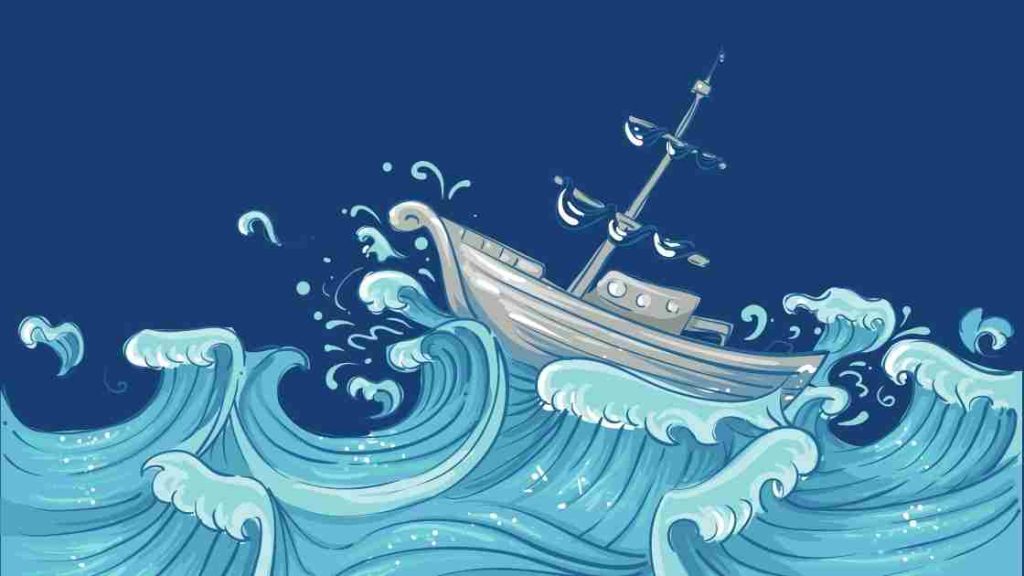
Joseph Campbell first introduced the Hero’s Journey in 1949. It is based on the idea that we can break down most stories into one basic story structure.
The plot structure of the Hero’s Journey is made up of 17 steps, all of which can be excellent guideposts for you when plotting your novel and planning your chapters.
To simplify the 17 steps of the Hero’s Journey, there are 3 main acts of the story: The Departure, The Initiation, and The Return.
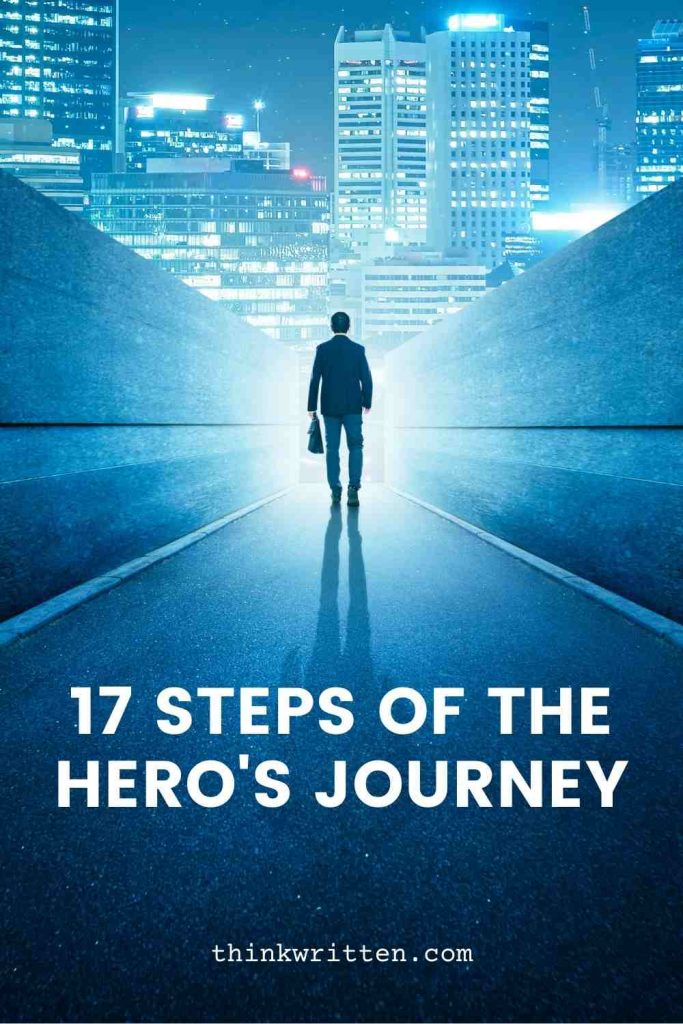
Here’s an overview of all of the 17 steps of Joseph Campbell’s Hero’s Journey:
Act One: The Departure
The Call to Adventure
Refusal of the call, supernatural aid.
- The Crossing of the First Threshold
Belly of the Whale
Act 2: The Initiation :
The Road of Trials
The meeting with the goddess, woman as the temptress, atonement with the father/abyss, the ultimate boon.
Act 3: The Return:
Refusal of the Return
The magic flight, rescue from without, the crossing of the return threshold, master of the two worlds, freedom to live.
In this post, we will cover each step of the Hero’s Journey and what it includes. If you are writing a novel , think of this as the ultimate beat sheet to help you plan and plot your novel !
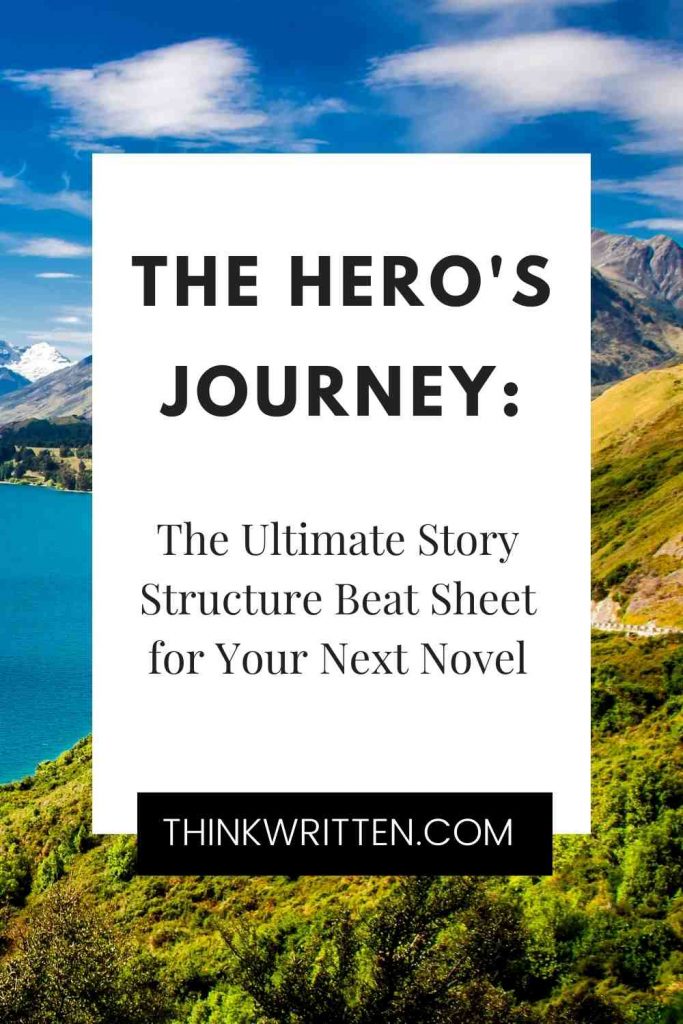
To understand the 17 steps of the hero’s journey, we will share with you exactly what happens in each step and what it should include. We’ve divided the 17 steps into the three main acts: The Departure, The Initiation, and the Return.
Let’s dive on in, shall we?
The Departure

The Departure (Act 1) of the Hero’s Journey is all about your novel’s main characters and their ordinary lives. You want to show how they live before something happens that throws them into a world outside of what was normal for them.
In a nutshell, The Departure is when we see our heroes start in their current environment and set out on an adventure where they leave their comfort zone.
There are 5 steps of the Departure, each of which can help you base your chapters for your novel. Let’s look at these 5 steps in detail.
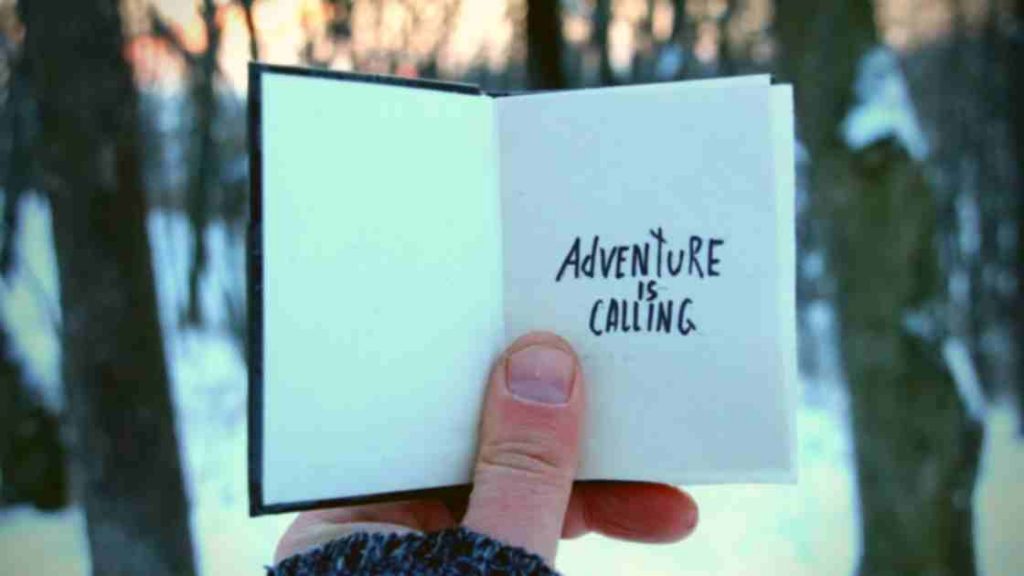
In the first 1 or 2 chapters of our book, our character is introduced and is given the call to adventure. Of course, the call to adventure is what sets our character on their journey. There is a moment when our hero realizes something isn’t right, and it’s time for them to become the hero of their own story.
The Call to Adventure should introduce your main characters and what part of life they are living before things start changing for them. You want this to be a scene that you can use to give your reader an idea of who they are and what their life is like.
The call to adventure is sometimes also called the inciting incident because it often comes from another character or situation in which our hero feels compelled to do something. This could come in the form of a problem or something that they’ve always wanted to accomplish.
Once we understand the character’s life and why they must go on their journey, we move onto the next crucial element: Refusal of the Call.

The Refusal of the Call sounds like it’s a bad thing, but in reality, it can help the hero grow and become more self-sufficient. In this step of the Departure, we see that our character isn’t sure if they are ready for such an adventure.
The refusal of the call is often used as a way for your reader to get more insight into some of your character’s weaknesses. It can also open up the character to seeing what they are missing in their life and get them a little more excited about going after it.
When writing your story, you will show your readers why your hero is reluctant to go on the journey. Why don’t they want to change? What are their fears? This step helps build your character arc, as well as builds some suspense in the story.
You also want to make sure in this step that the refusal of the call is resolved in some way. This can be through another character encouraging your hero or by realizing what they are missing out on if they don’t go on the journey.
Either way, you need to ensure this scene or chapter ends with the hero deciding to accept the challenge.
After your main character decides whether or not they want to go on this journey, we move onto Supernatural Aid.
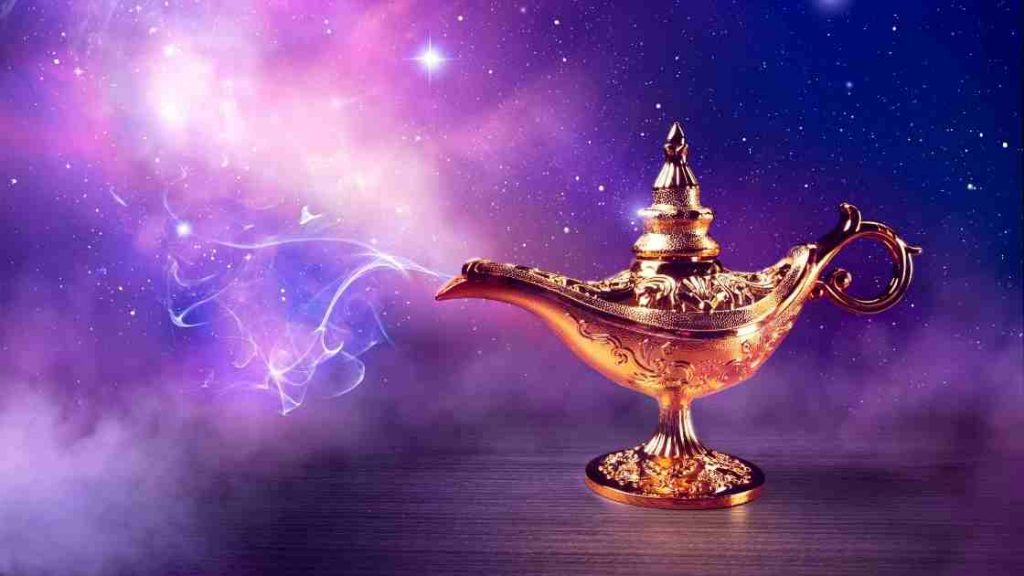
Supernatural aid is the hero’s first experience with a mentor or teacher. While we use the term supernatural here, it does not necessarily have to be some mystical being.
It could be a random stranger giving our hero advice or someone who has been to this magical place before and knows the path. The important thing is this character is someone who will help your protagonist in their journey.
Supernatural aid helps your audience understand there will be obstacles along the way. The hero will need help. You will need a strong supporting character willing to give our main character advice on how they should proceed through their journey.
In this scene, you want to show us why you chose these characters for mentors. What qualities do they possess? Do they have experience with adventures like this? Why can they help the hero, and more importantly, why do they want to help the hero?
Once this person is introduced, we are ready for the next stage of the Hero’s Journey: Crossing the First Threshold.
Crossing the First Threshold
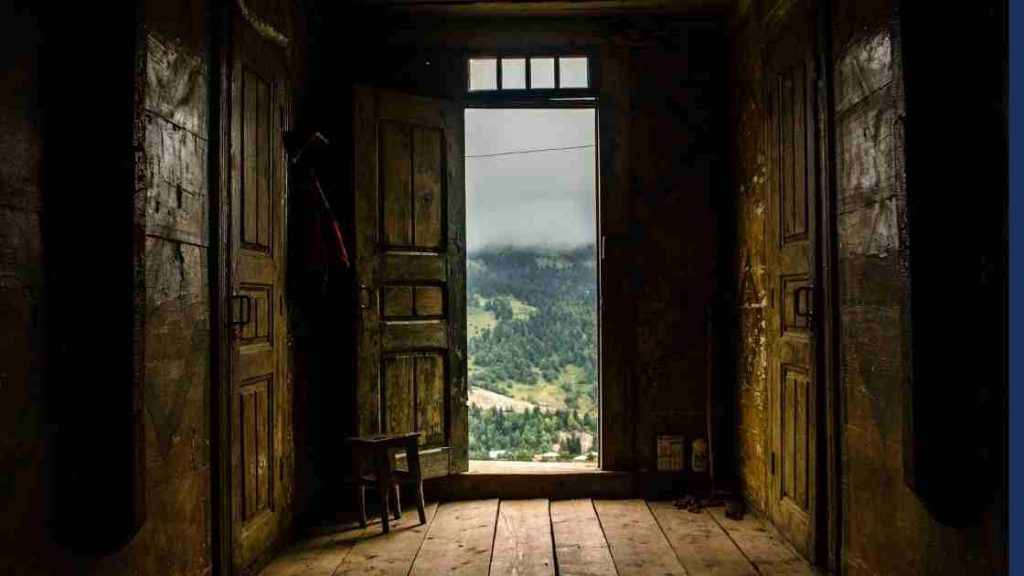
Crossing the first threshold is where your hero commits to going on the journey. They may have made some attempts at it before, but now they are fully committed and ready to go, even if that means leaving their comfort zone behind.
Your character will be doing something different than what they’ve done in the past, or perhaps this act will lead them into a dark and dangerous place.
For example, your hero may leave their home for the first time to go on this journey, or they are finally ready to go and confront someone who has been standing in their way of happiness.
In this 4th step of the Hero’s Journey, you want to show your reader why this is such a big change for the character.
You want to show your character scared and uncertain of what lies ahead for them while still being brave enough to continue on their journey! You don’t need to make this scene too long or spend time explaining every little detail; just put us in the headspace of your hero so we can understand what unknown dangers and fears are ahead.
Once our hero takes their first steps towards danger, we find ourselves in the Belly of the Whale.
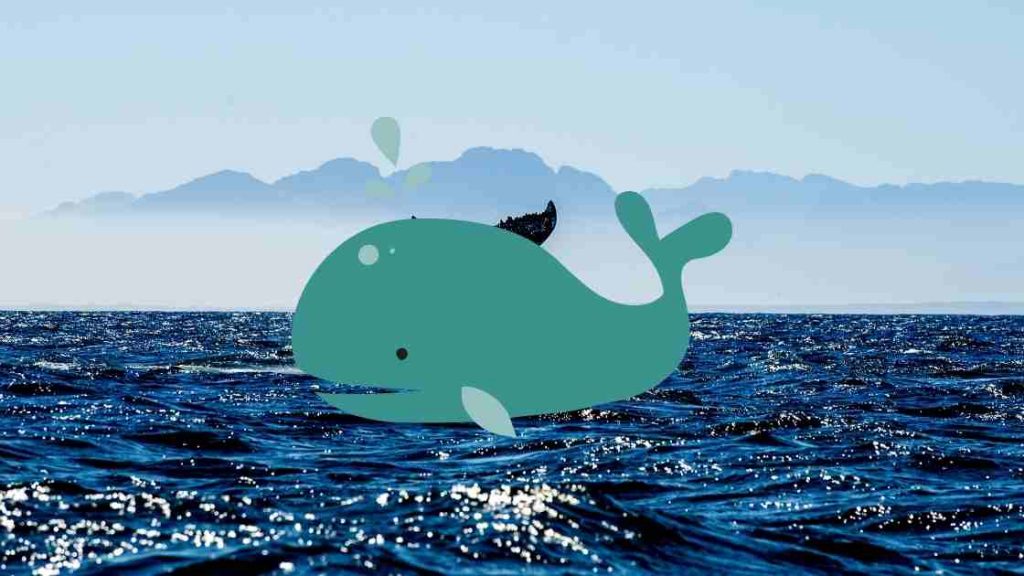
The Belly of the Whale is the last step before the hero breaks away from their normal existence and sense of self. When someone enters this stage, they are showing that they want to change.
A typical element of the Belly of the Whale Scene is displaying a small problem or threat. These problems aren’t the major conflict of the story, but it is enough of an obstacle that we see the hero absolutely cannot go back to where they used to be and must change.
In this scene, it’s common to show a “dark night of the soul.” This is where they feel like everything in their life has been turned upside down, and things seem hopeless. Yet, they must commit to making a change and continuing on their journey in this final step of the Departure stage.
Now that we’ve covered all the steps of the Departure state let’s move onto Act 2: The Initiation.
The Initiation
The second act of our story, the Initiation, is the part where things get interesting. The character is now deeper into their journey and facing new challenges that they must overcome.
Not only are we focusing on our hero’s personal development, but our protagonist’s character traits start to change. They will be showing how they’ve become different from who they were in Act One and developing the traits needed for a successful journey.

The first scene or chapter of the Initiation stage of the Hero’s Journey is The Road of Trials. The Road of Trials is where the protagonist faces a series of tests that your hero must pass to move onto the next stage.
These trials will continue until our hero has shown they are ready for whatever is waiting ahead on their journey and have discovered what lessons they needed to learn along the way.
Usually, there is a series of 3 tests, and your hero will not ace all of them immediately. Sometimes, we will revisit the person introduced as a mentor or guiding force from Act One in these scenes, as the hero will certainly need some support in going through these trials.
In this scene, you want to make sure your reader sees how the hero experiences growth and changes. You want your reader to appreciate how far our hero has come along their journey, but there are still more experiences ahead for them!
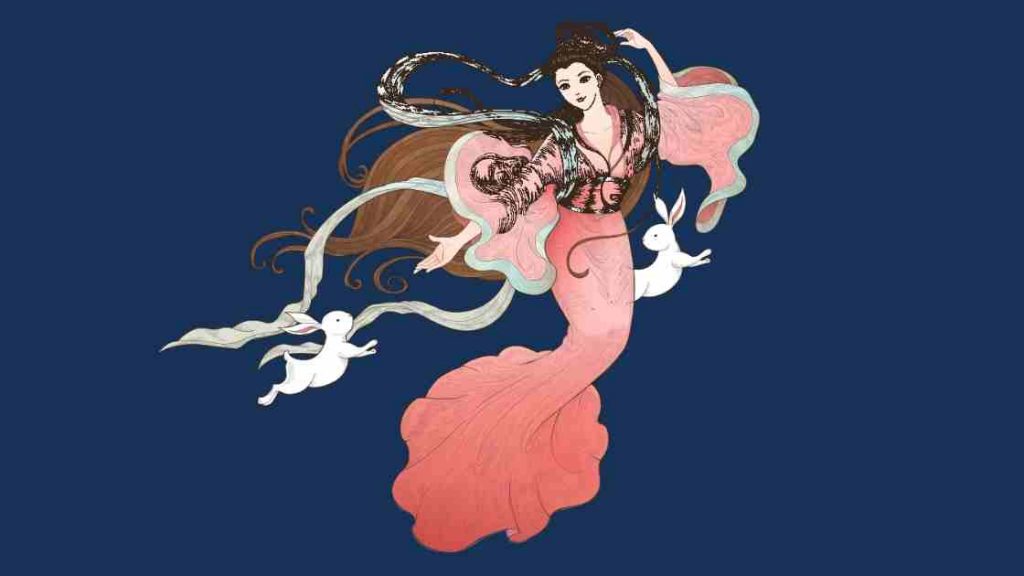
The next step of the Initiation stage is The Meeting with the Goddess/Saviour. This is where we are introduced to someone who will give our protagonist a sense of love, peace, safety, and unity.
This character is essential because they offer our protagonist something he didn’t have before and will be the support that helps them through whatever journey lies ahead. Sometimes they appear as a love interest, but not always.
The Goddess figure is often human but could also be an animal or nature spirit. They are someone who will help your hero become whole again. They are an equal opposite of your hero.
In this scene, we want our hero to feel everything is going to be okay now. They will learn that they don’t need to face their problems alone; someone here with them understands what they are going through.
Of course, this doesn’t last forever as we move into the next chapter: Woman as the Temptress.
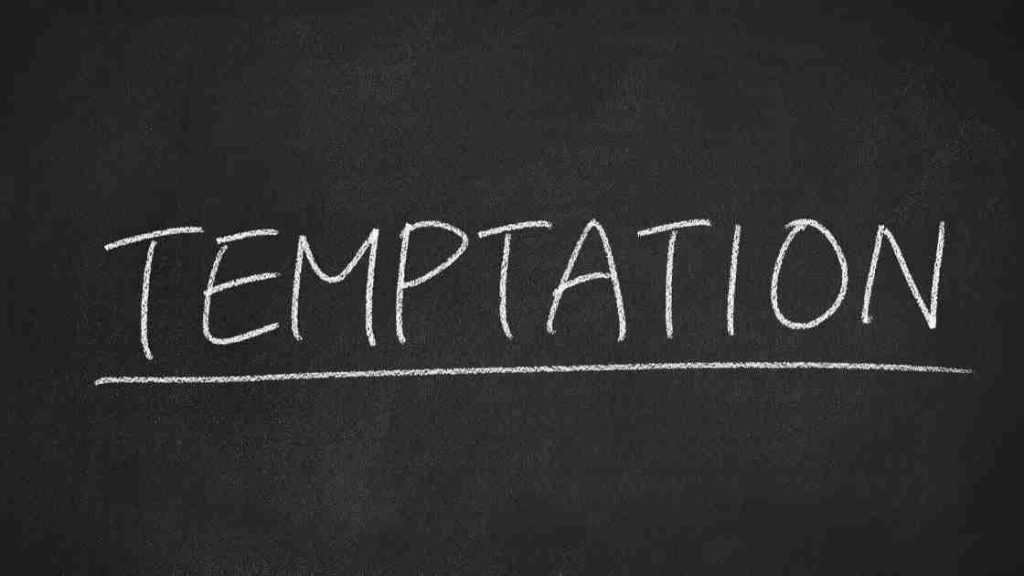
In this next step, the hero faces physical temptations that might cause them to be distracted from their quest. Again, it’s important to understand this does not mean you need to introduce a female character in this scene – the woman is only a metaphorical symbol.
Many things can tempt our heroes to stray from their path. It might be money, power, or fame. It could even be something as simple as food and drink. But, of course, these temptations are not meant actually to distract the protagonist from their path. Our hero must resist them to gain a greater reward at the end of this stage.
Throughout this scene, they may face several such temptations until our hero learns how to resist them and stay focused on what they really want.
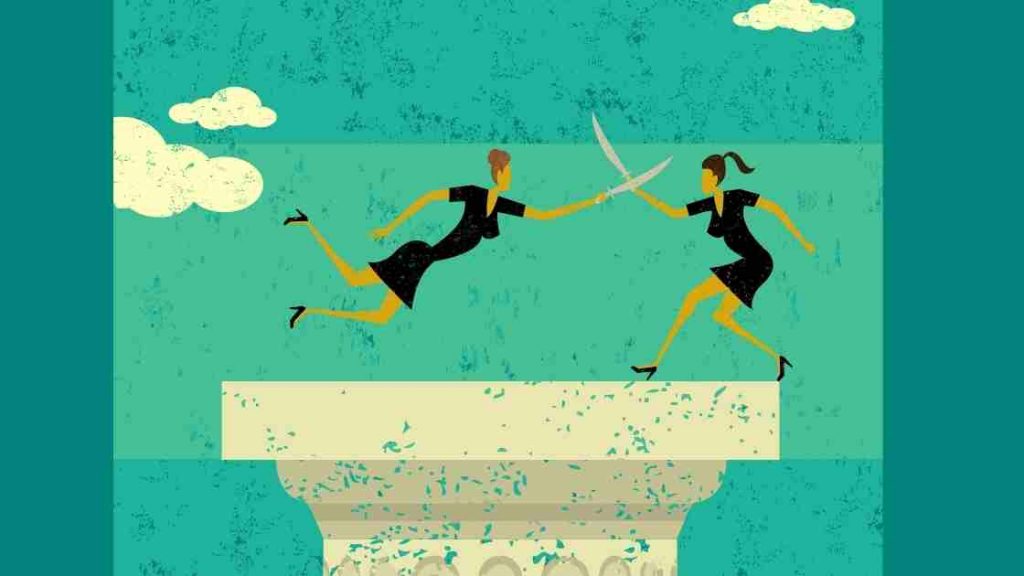
The word Atonement means “reparations for a wrong or injury,” and the Father is a symbol for an authority figure in the hero’s life. Finally, the Abyss represents death or darkness.
In this scene, the hero must confront whatever it is that holds the most power over them. This could be another character or it could even be internal conflict where the hero must come face-to-face with the dark side of their personality and be willing to embrace it.
The goal of this step in the Hero’s Journey is to make your protagonist question their entire being. Only when they confront the most powerful obstacle in their path and reconcile with it can they move forward on their journey.
As with most characters, the father does not have to be an actual father or even a male figure. The important thing is this figure is a person of power and authority over the hero.
There are many ways the hero can reconcile with the father figure – they can defeat this person, win this person’s approval, or reconcile with a part of themselves that is related to the father.
This step is important because it forces your protagonist to face their biggest fears and insecurities. It gives them the opportunity and confidence boost to overcome these obstacles once and for all.
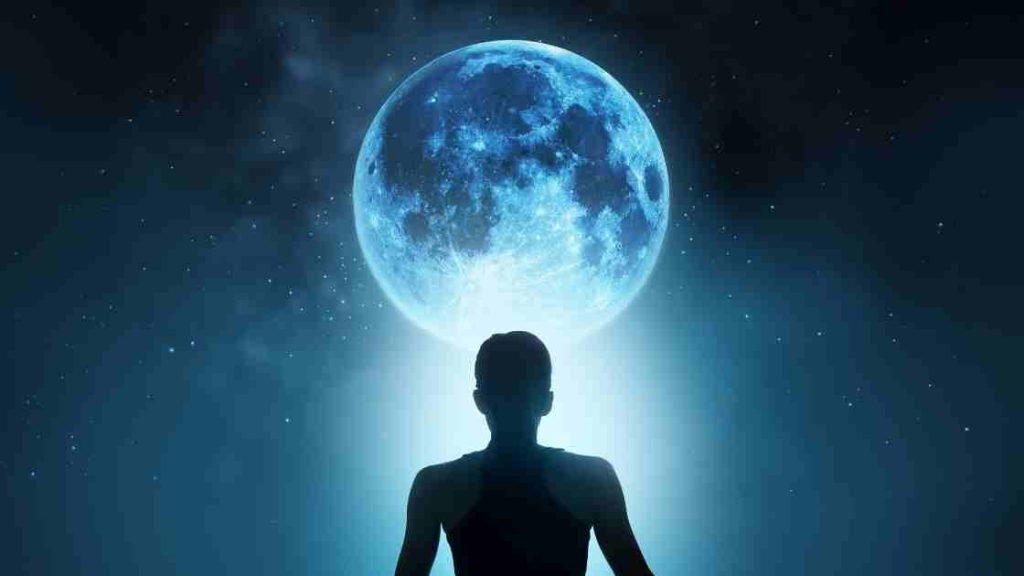
Apotheosis is another word for “the highest point of a person’s spiritual, moral or intellectual development.” It is when the protagonist transcends their humanity and becomes something more than they were before.
In this step of The Hero’s Journey, your protagonist will undergo an important change that brings them closer to being the ideal self they set out to be at the beginning.
In this stage of the Hero’s Journey, our hero learns something new about themselves that prepares them for the hardest part of their journey. This revelation gives them the necessary knowledge to complete their quest.
This step is often referred to as “the answer.” The protagonist will usually gain this new insight from a character who embodies wisdom or spiritual power, such as their mentor figure.
Now that our character has finally grown to where they need to be to accomplish their quest, they are ready for The Ultimate Boon’s next step.

The ultimate boon is the fulfillment of the purpose of the journey. This is when the hero finally achieves what they set out to accomplish.
All of the previous steps of the journey worked to this point to help the hero finally reach their goal.
In mythology, the “boon” is often something otherworldly. It could be the fountain of youth, an ancient scroll with sacred information, or a magical potion.
There are many ways to play out this step of The Hero’s Journey, so your character’s end goal will determine what the boon is.
This step of The Hero’s Journey often includes a battle with something that opposes your protagonist, such as an enemy or villain.
Our heroes might have to face their own dark side to achieve this final prize and complete their journey successfully. This could cause them to question whether or not they even want what the boon is.
When your protagonist achieves this final goal, it marks a major change in their life. Now we are ready to proceed to Act 3: The Return.
Act 3: The Return
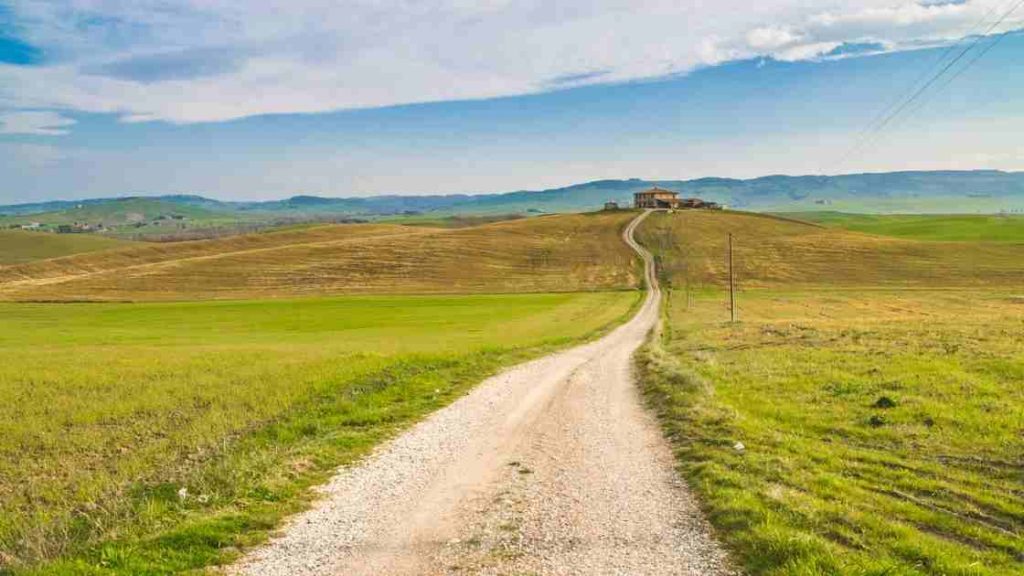
Act Three of the Hero’s Journey often moves faster than the other acts of our story. In The Return, we see how the protagonist’s newfound knowledge and achievement of their goal affect their life and world.
This step of The Hero’s Journey is crucial because it gives us a glimpse as to what our character has learned from this journey, which is the ultimate test of whether they have truly successfully achieved their quest or not.
Let’s dive into the remaining scenes of our story.
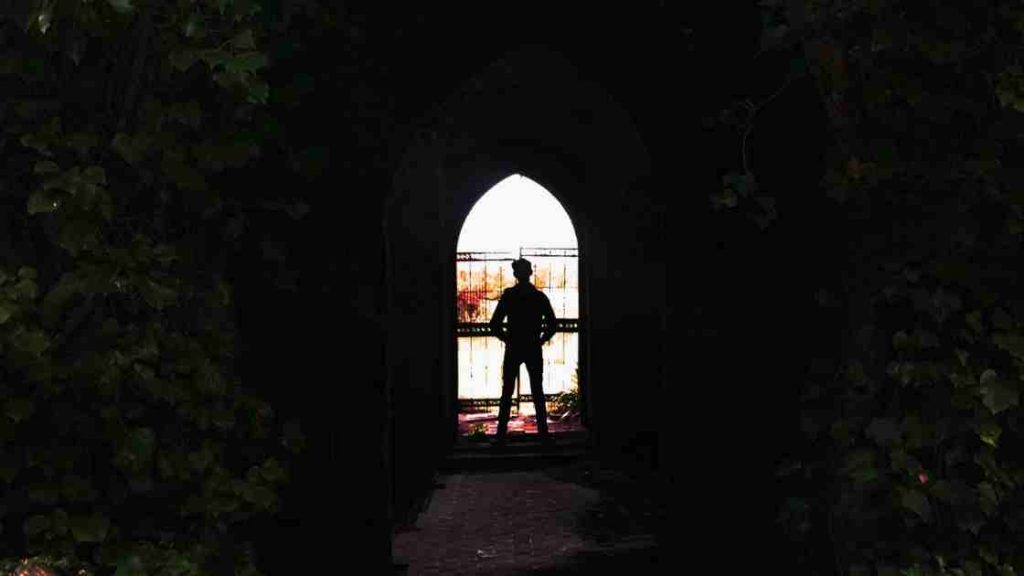
The Refusal of the Return is when our protagonist does not want to return home after achieving their goal. They may be too frightened of what awaits them, or they may not want to give up the new life and world they have found themselves in.
Just as they were hesitant to go on the adventure in the beginning, they are also hesitant to go back.
They may be concerned with how their “boon” might affect the world – such as a magic potion or secret power that could get into the wrong hands. They may worry about what consequences they may face when they go back, or they may be afraid nothing is left for them to return to.
In some cases, our hero doesn’t want to leave because they have become comfortable with their new world and who they have become.
However, to truly finish the quest, our hero must return home. This refusal of return helps build up the tension to the final resolution of the story. This is when the reader questions whether the hero will return home – and wonders with great anticipation of what might happen when it happens.

The Magic Flight is the final conflict to the story where our protagonist must escape danger, sometimes using their newfound knowledge or boon. This is a way of symbolically proving that they have truly learned from this journey and are ready to bring it back home with them.
This part of The Hero’s Journey often involves a chase scene or battle against an opposing force. However, this is the final push necessary push they need to realize they must make the journey home because it becomes apparent they cannot stay where they are.

The Rescue From Without step of the Hero’s Journey is when the protagonist is rescued from danger by an outside source.
This outside source may be an ordinary person, or it might resemble deus ex machina, or god-like intervention, where something rescues our hero from an impossible situation, such as lightning striking that saves the day for our hero.
When you are writing the rescue scene, the circumstances of the rescue must be believable. Most people do not like the deus ex machina in writing simply because it’s too easy.
Those of us who have lived life long enough all know that a magic fairy godmother isn’t going to swoop us in, wave her wand and make all our problems disappear.
After being rescued, the hero truly has no other choice except to return home.

The Crossing of the Return Threshold is when our protagonist finally returns home after completing their adventure and achieving their goal.
This is the part of The Hero’s Journey where we see what they have learned from this journey and how it affects them.
In this story scene, you will want to answer the following questions: How has the hero changed from their journey? How is their old world different from when they left? How do they acclimate to being back home? Finally, how do others react to their return?

This is the part of The Hero’s Journey where our protagonist has reached their full potential. They have overcome their fears and grown in ways they could never have imagined.
They are a new person and have been forever changed by what they’ve experienced. Yet, it allows them to go back into society with heightened wisdom, power, skills, or resources that will help others in need when called upon again.
In this scene, we see the hero apply their knowledge and share it with the world.

After our hero has conquered all of their fears and has put their wisdom to good use, the hero finally has the freedom to do anything they want.
This is the resolution of our story – we see our heroes accomplish their “happily ever after.” Their fears or concerns no longer control them, and nothing exists between them and what they want.
More often than not, this closing chapter of the story gives the reader some closure. We want some type of affirmation that the story is truly complete. We get a glimpse of what our protagonist will do with their life now that they are free to live it.
If you’re looking for a story structure that is proven and effective, the Hero’s Journey might be perfect for you. With 17 stages of development, it will help you create an engaging plot with your readers and develop strong characters .
And of course, while the Hero’s Journey is the classic beat sheet for writers, remember you don’t always have to dedicate one chapter to each step. Sometimes you can combine 2-3 steps in one scene, while other steps might take several chapters to cover.
The important thing is you now know the Hero’s Journey! We hope this is helpful for you – whether you are writing your own novel or studying the Hero’s Journey arc in literature. Most of all, we hope that by breaking down each step of the Hero’s Journey, you can better understand all of it.
Do you have any thoughts or questions on the Hero’s Journey? We’d love to hear from you in the comments section below!
Chelle Stein wrote her first embarrassingly bad novel at the age of 14 and hasn't stopped writing since. As the founder of ThinkWritten, she enjoys encouraging writers and creatives of all types.
Similar Posts

How to Outline a Novel Plot in 5 Easy Steps

How to Avoid Over Planning Your Novel
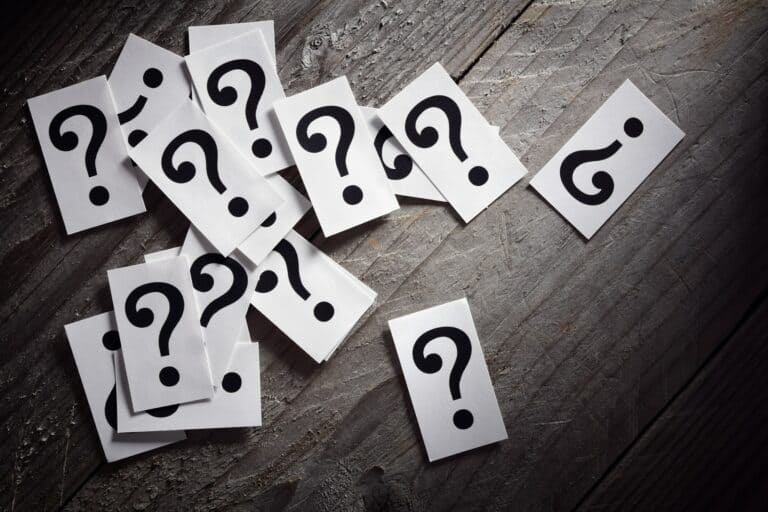
160+ Character Development Questions & Free Printable Worksheet
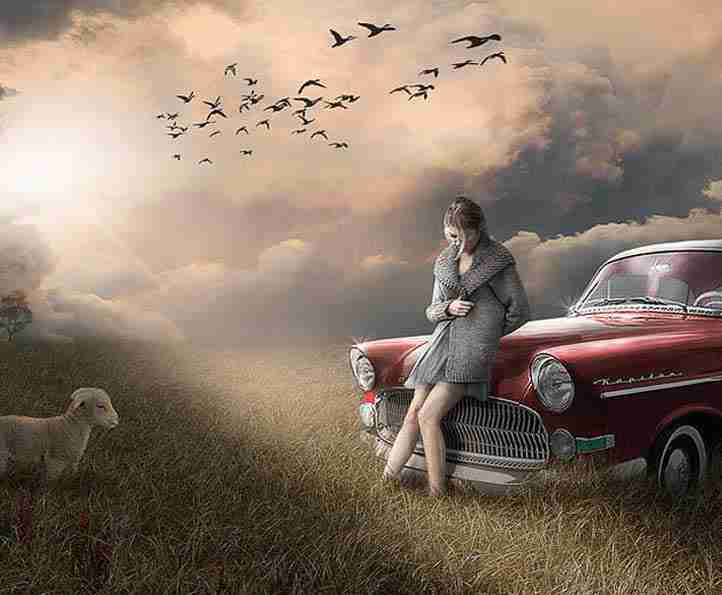
Character Development: How to Write Strong Characters in Your Novel

Main Character vs. Supporting Characters in Story Development
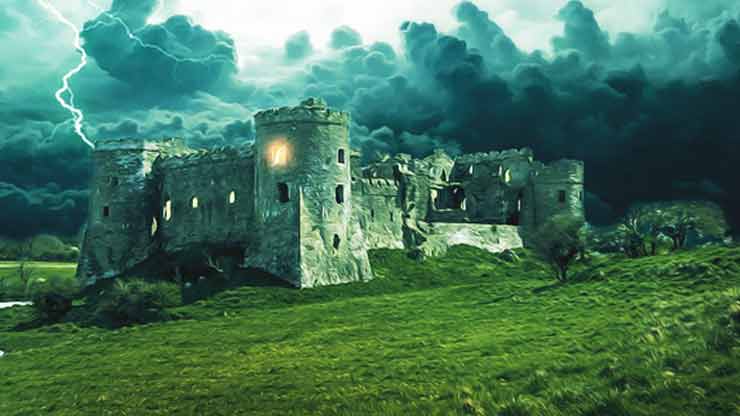
5 Signs of a Strong Novel Plot
So if you’re writing an epic fantasy that will be a series, are these 17 steps strung out across the entire series, or redone in each book?
Thank you for such a helpful article. This has helped me fill in a glaring hole in my novel outline and shown me what was missing. I’m really grateful for this advice.
Glad it was helpful for you Laura!
Leave a Reply Cancel reply
Your email address will not be published. Required fields are marked *
Save my name, email, and website in this browser for the next time I comment.
Kindlepreneur
Book Marketing for Self-Publishing Authors
Home / Book Writing / The Hero’s Journey: The 12 Steps of Mythic Structure
The Hero’s Journey: The 12 Steps of Mythic Structure
The Hero’s Journey plot structure is a common template for writing a compelling story. It also has a built-in character arc for the hero or heroine. Whether you write detailed outlines before getting into any prose, or you think writing is best done without an outline, the Hero’s Journey can help. Many writers fall somewhere in between, keeping in mind the broad strokes of a plot structure like the Hero’s Journey as they write.
Now, before you roll up your sleeves and get started with plotting your brand new idea, make sure it's viable to become a bestseller. Take just a few minutes to use book idea validation – without it, your book risks obscurity after it's published. If you have already written your book with a structure like the Hero's Journey and are looking to increase your sales, read how to make your book #1 on Amazon so you don't miss out on new readers.
One thing’s for sure: learning the twelve steps of the Hero’s Journey can only help your writing. This is why I recommend Plottr as an excellent tool to strengthen your writing. They have the Hero’s Journey and other well-known story archetypes to choose from so you can find one that best fits your particular story.
More on Plottr later. For now, let’s go on an adventure through the Hero’s Journey!
- The origins of the Hero’s Journey
- The 12 Steps of the Journey
- Examples of the Hero’s Journey
- How to incorporate this story structure into your writing
Table of contents
- What is the Hero’s Journey?
- The Hero’s Journey: An Overview
- 1. The Ordinary World
- 2. The Call to Adventure
- 3. Refusing the Call to Adventure
- 4. Meeting the Mentor
- 5. Crossing the Threshold
- 6. Test, Allies, and Enemies
- 7. Approach to the Inmost Cave
- 8. The Ordeal
- 9. The Reward
- 10. The Road Back
- 11. Resurrection
- 12. Return With the Elixir
- Star Wars: A New Hope
- The Lord of the Rings: The Fellowship of the Ring
- The Hunger Games
- Bonus Option: Use the Hero's Journey in a Series
- What Stories Work With the Hero’s Journey?
Get it for FREE here: Get the PDF Here
Popularized by mythologist Joseph Campbell in his book The Hero With a Thousand Faces , the Hero’s Journey is a story structure that has been used to tell exciting and captivating stories for centuries. Campbell, a literature professor, found that this was a common mythic structure. It’s widely known by the moniker the Hero’s Journey, but this name didn’t come around until well after Campbell’s 1949 book.
Campbell’s name for it was the monomyth.
Other scholars and storytellers have made tweaks to Campbell’s original monomyth structure, which has seventeen steps instead of the twelve I’ll be discussing today. The version of the Hero’s Journey widely used by screenwriters, authors, and playwrights today was popularized by screenwriter and producer Christopher Vogler .
You can apply this story structure to mythology, films, books, and even short stories.
There are three overall stages to the Hero’s Journey, each with individual story beats. These are 1) Departure, 2) Initiation, and 3) Return.
- The Ordinary World
- The Call to Adventure
- Refusing the Call to Adventure
- Meeting the Mentor
- Crossing the Threshold
- Test, Allies, and Enemies
- Approach to the Inmost Cave
- The Road Back
- Resurrection
- Return With the Elixir
Format Beautiful Professional Books
Easy to use, and and full of amazing features, you can quickly turn your book into a professional book.
The Twelve Stages of the Hero’s Journey
Each of the twelve steps has its own story beats that happen. As we finish each stage, we’ll reflect on each story beat with an example from a famous movie.
The first step in the Hero’s Journey is your chance to familiarize the reader with the known world in which your story happens. This means giving the reader what they need to know to make sense of the world (otherwise known as exposition ). If your story takes place in a reality much like our own, you won’t have a lot to do. But if magic and mythical beasts are normal, or it’s far into the future and interstellar travel is possible, you’ll have a bit more work to do here. If you're having trouble picking which type of world is best for your book, research popular keywords in your genre to reveal settings that readers find interesting.
While you introduce the world, you’ll want to introduce the main character(s) as well. And in doing so, it’s important to give the reader a reason to like him, her, or them . While the protagonist is in their normal, ordinary world, they should want something more or different. And this want or need should dovetail nicely with the primary conflict of the story.
- Introduce the world and the character in an interesting way. Readers will give you some leeway at the beginning of the book, but if it reads like a textbook, you’ll lose them pretty quickly!
- Give the character personality and dimension . Needs, wants, flaws, and characteristics don’t all have to come out right away, but there should be enough for the reader to want to follow the hero through the story.
Tip: This first step should take the first 10-12% of the story.
Step two, the call to adventure, is also called the inciting incident. This is something disruptive that pulls the hero out of their ordinary world and toward a journey that will ultimately change their life . . . if they survive.
This call propels the rest of the story forward , so it should be exciting enough for the reader to want to continue with the story. This will change from genre to genre, so it’s important to know the tropes of whatever genre you’re writing in. On Amazon, there are thousands of genre categories to choose from, so research potential category options to better understand your market.
- Most heroes will resist this initial call to action. The stakes should be very real and clear to the reader at this point. In many stories, the stakes will be life or death.
- Remember that your story needs to grow in intensity until it peaks at the climax. So the call to action should be dramatic, but things will get worse for the protagonist from here.
Tip: The Call To Adventure should happen around the 12% mark.
Not every protagonist will refuse the call. Some may be ready to go. But if you pay attention to some of your favorite stories, you’ll likely see that most heroes resist initially until they have no choice.
Something should happen to make a refusing hero realize that they have no choice but to take on the challenge presented to them. For every refusal, some incident or information should come out that will raise the stakes and make the hero realize they must face the challenge . The hero ventures forth at the end of this section.
- It’s good to have the character refuse the call for a reason that ties in with the need or want established in the first step of the Hero’s Journey.
- Give them a good reason to refuse — and an even better reason to finally heed the call to adventure.
Tip: The refusal section starts around the 15% mark of the story.
At this point in the story, the protagonist has responded to the call to adventure. But their initial unease is still there. They don’t yet have the skills, items, or knowledge to succeed against such a challenge. This is where the mentor comes in.
The mentor helps the protagonist gain the confidence needed to continue on the journey. This is usually done in a multifaceted manner, with both physical and mental help. Much of the time, the mentor provides tough love, kicking the protagonist’s butt into action, so to speak. While mentors are often people, they can also take the form of information, like a map, a magic scepter, or any other number of things that help the hero along.
- Make it clear that, without the mentor, the protagonist would likely fall flat were they to continue on unaided.
- The hero’s time with the mentor should ultimately result in a revelation , giving the hero exactly what they need (or at least what they think they need) to face the antagonist or challenge.
Tip: Have this section start around the 20% mark of the story.
Step five of the Hero’s Journey is often called the point of no return. While the protagonist has learned from the mentor and gained confidence, this story beat forces them to engage fully with the challenge. Usually, this dramatic turning point is orchestrated by the antagonist, giving both the reader and the protagonist an idea of how powerful the villain really is.
One common tactic is to have the mentor killed in this section. Whatever you choose to do, make it pivotal and have it reinforce the central theme and conflict of the story . This is also the end of the Departure section, otherwise known as the first act.
- Until this point, the hero has had one foot in their ordinary world. Now, there’s no choice but to go forward into unknown territory, otherwise called the special world.
- The hero’s reaction to this pivotal story beat should be in line with what the reader knows about them. They need to work for any major changes that come about in this section.
Tip: Crossing the Threshold usually starts around the 25% mark.
This section marks the beginning of the second act. Building on everything that has come before, the protagonist should be challenged, putting their new abilities and knowledge to the test. It will become clear that the hero still needs help to resolve the main conflict of the story. This is where allies come into play. By teaming up with allies, the hero should continue to grow, playing off the other characters and working to overcome the tests or setbacks in the Special World.
Enemies are those that put the tests in their place, working actively against the hero and allies. The reader should learn to care about the allies, which means making them multifaceted characters. By the time this section is done, not all allies will have made it. Some may have even betrayed the hero. Likewise, enemies can also transform in this section, turning into allies.
- While the allies may want the same thing as the hero, they may have conflicting views on how to get it. Everyone in agreement all the time makes for a boring story.
- The hero’s abilities should be in doubt — both by the hero and the reader.
Tip: This section occurs around the 30% mark.
The approach to the inmost cave section gives the characters (and reader) a chance to reflect on the challenges of the previous section. Remember that the stakes and tension need to continue rising, so the previous section should have been the hardest challenge yet. The hero and allies are beaten and bruised — maybe one or more has died along the way — but the protagonist is still alive. The journey continues.
The group is closer to the goal — and to the place or time of ultimate danger. They’re regrouping and gathering their wits as they prepare to face the antagonist or some of the villain’s formidable forces.
- This is a good place for the characters to formulate a plan of attack, clarifying the price of failure and the prize for success.
- At this point, the hero has redoubled his effort and believes he is ready to face the challenge, despite his setbacks. The ordinary world is now far behind and impossible to get back to. The only way out is through.
Tip: This section happens around the 40% mark.
The ordeal is the biggest test yet and a transformative event that affects how the hero goes forward on their journey. This confrontation has the highest stakes so far, and it’s part of the central conflict. It brings the hero to their darkest point yet, and results in a metamorphosis of sorts that allows them to push through to the other side.
Campbell spoke of the ordeal in terms of death and rebirth for the protagonist. The hero uses all they have learned up to this point to push through the ordeal. A character close to the hero is often killed in this section, whether it be the mentor, a close ally, or a loved one. However, it’s not always a death. It could involve facing fears, going up against the biggest foe, or breaking through some seemingly insurmountable mental barrier. Whatever form the ordeal takes, the hero is broken down and comes out the other side stronger than before .
- This section is a long one, taking nearly a fifth of the story. It should be dramatic, compelling, and speak directly to the heart of both the external and internal conflicts of the story.
- Don’t be afraid to make things hard on your characters in this section. Even though the reader knows the hero will prevail, they should be left wondering in this section.
Tip: The Ordeal takes place from around the 50% mark.
Also called seizing the sword, this is the section in which the hero gets whatever they were searching for during the story. They’ve made it through the ordeal, and this is the reward. It can be an object, clarity, knowledge, or new skills/abilities. Whatever the reward is, it needs to be important in defeating the antagonist at the coming climax .
After the action and emotion of the ordeal, this section is a place for the reader and characters to regroup and catch their breath again. It can be a good place for a celebration of sorts, something to show for the sacrifices made so far. The hero may even reflect on all it took to get here.
- It should be clear to the reader how the reward will help the hero to finish the journey.
- This is a major milestone in the journey and should be treated as such. It also marks the end of act two.
Tip: The Reward section takes place around the 70% mark of the story.
Reward firmly in hand, the hero starts the journey back to the ordinary world. But every action has consequences, and those of claiming the reward block the hero’s road back. It becomes clear that things aren’t so simple, and the hero’s tribulations aren’t yet over.
The unforeseen consequences of claiming the reward make the hero realize they’re in more danger than ever before, and they must face the antagonist head-on before returning to the ordinary world. The hero prepares for the ultimate battle — the climax.
- It should be clear to the reader why the hero must face the antagonist once and for all. There should be no choice, given who the hero has become and the stakes they now face.
- This is a good place to re-establish the central conflict of the story and make clear the results of failure.
Tip: This section happens around the 75% mark.
This is the climax of the story — the ultimate showdown between hero and villain . The tension and the stakes are higher than they’ve been throughout the story. If the hero fails, the world as they know it will be forever changed for the worst. The hero uses all they have learned on the journey to defeat the antagonist.
The hero comes out of the confrontation changed, transformed into a true hero. This should be a dramatic transformation, completing the resurrection started earlier in the story.
- Like every other challenge, the hero needs to earn this victory by sacrificing something for it. In some stories, the hero may even sacrifice him or herself.
- By vanquishing the antagonist, the hero should find the strength or gain the knowledge to address their internal conflict in a satisfactory manner.
Tip: This section happens around the 85% mark .
The last section of the story details the hero’s return from the special world to the ordinary world. Sometimes called the magic flight, the hero now has changed for the better. Show what new skills, items, knowledge, or understanding of the world the hero brings with them (the elixir). This “elixir” can often be used to help those the hero left behind in the ordinary world.
In most stories, the hero will return to celebration. They’ve risked it all, saved lives, and learned important lessons. The people in the ordinary world are happy to have them back. The hero may decide to settle back into this world to use their newfound abilities. Or they may find they’ve outgrown it and have a taste for adventure.
- Re-establish the hero’s internal conflict and show how solving it has changed their view and life, completing the character arc .
- If you’re writing a series, provide a hook for the next story here by hinting at another conflict the hero will need to deal with.
Tip: This section happens around the 95% mark and finishes out the story!
Examples of the Hero’s Journey from Famous Works
In George Lucas's Star Wars Episode IV: A New Hope , we can see the Hero's Journey in action. We also see it in The Lord of the Rings: The Fellowship of the Ring and The Hunger Games . Let’s take a look now.
- Luke Skywalker — an archetypal hero — in his Ordinary World, living with his aunt and uncle, hoping for adventure.
- Luke’s Call to Adventure comes when he activates a hidden message from Princess Leia that R2D2 is carrying for Obi-Wan Kenobi.
- Luke initially Refuses the Call — until he returns home to discover his aunt and uncle have been killed by Imperial forces.
- While Luke has already met his Mentor (Obi-Wan), the active mentoring really starts after Luke's home has been destroyed and the only family he's ever known killed.
- When Luke, Obi-Wan, and the droids step into the dangerous Mos Eisley Spaceport, it signifies the beginning of Luke's heroic journey and the Crossing of the Threshold.
- Luke and Obi-Wan hire a couple of Allies, Han Solo and Chewbacca, to transport them off the planet. Once on the Millennium Falcon, Luke's Tests begin.
- The Approach to the Inmost Cave happens when the Death Star captures the Falcon in a tractor beam and pulls them in.
- The Ordeal happens while Obi-Wan goes off to try and disengage the tractor beam. Luke, Han, and the others rescue Princess Leia. Obi-Wan confronts Darth Vader and sacrifices himself so the others can get away.
- With the Rewards (the Death Star plans and the princess), Luke thinks he should be able to defeat the Empire. And while Obi-Wan's death weighs on him, he can see success ahead.
- The Road Back is interrupted as the Falcon is attacked. They have no choice but to go to the Rebel base to deliver the Death Star plans, even though they’re being tracked.
- As the Rebels are attacking the Death Star, Obi-Wan's voice speaks to Luke, telling him to use the Force. Luke does, using all that he's learned and finally “sacrificing” his old self, embracing the Force and “Resurrecting” as a true hero. He fires and blows up the Death Star.
- Luke Returns to the Rebel base triumphant. Both he and Han Solo receive medals and accolades for delivering the (temporary) blow to the evil Empire.
- We get to see Frodo’s idyllic Ordinary World in the Shire. The idea of adventure is attractive to him, but not overly so.
- Frodo’s Call to Adventure begins after Bilbo disappears, leaving behind the Ring, which Gandalf entrusts to young Frodo.
- Frodo Refuses the Call not just once, but repeatedly throughout the story. He feels he is not the one to be entrusted with such a job of carrying and disposing of the Ring.
- Gandalf acts as Frodo’s Mentor, instructing him on what he must do to protect the Ring and, in so doing, protecting the Shire.
- Frodo and Sam quite literally Cross the Threshold as they leave the Shire after splitting from Gandalf.
- Frodo and Sam run into Allies Merry and Pippin on their way toward Bree. They are also Tested by Enemies as they’re pursued by the Nazgûl. These tests continue until the group gets to Rivendell.
- The Approach to the Inmost Cave is the group’s approach to the Mines of Moria — literal caves.
- The Ordeal happens inside the Mines of Moria as the group is attacked by orcs and then Balrog, which Gandalf fights off, falling down into the depths and presumed dead.
- The Reward is sparse in The Fellowship of the Rings. Gandalf is gone, and the group escapes with their lives.
- The Road Back isn’t signified in this story by a turn back to the Ordinary World. Instead, it’s Frodo’s stay in Lothlórien, where he sees the stakes of his failure in a vision.
- The Resurrection is the climax of the story, where the Uruk-hai catch up with the group and Boromir betrays Frodo, trying to take the ring from him. Frodo realizes he must travel alone to Mordor.
- The Return with the Elixir portion is Sam’s refusal to let Frodo journey alone. Frodo pulls him into the boat and they cross the river together. Meanwhile, the rest of the Fellowship are determined to save Merry and Pippin. To be continued . . .
- We see Katniss Everdeen living in her Ordinary World (District 12) with her mother and sister. It’s a bleak, depressing world, but it’s her Ordinary World nonetheless.
- After Prim, Katniss’s sister is called for Tribute, Katniss volunteers in her stead. This is the Call to Adventure.
- This is one example of a story with no real Refusal of the Call. She may not want to take part in the Hunger Games, but she makes the decision and sticks with it to save her sister.
- Katniss meets Haymitch, her Mentor. Though a drunk, he guides her on the politics and gives her tips on surviving the Games.
- Katniss Crosses the Threshold when she’s put on the train to the capital, leaving her Ordinary World behind.
- The Tests, Enemies, and Allies section starts when she has to navigate the preparation for the Games. She meets Rue and has Peeta as an ally, as well. The Careers are clearly enemies to contend with later.
- Katniss Approaches the Inmost Cave when the Hunger Games begin.
- The Ordeal is plain to see as the Games commence, and Katniss struggles to stay alive amid the chaos.
- The Reward comes when only Katniss and Peeta are left alive in the arena. They don’t have to fight, thanks to a rule change; they can both claim victory.
- It looks good for Katniss and Peeta until the Capital changes the rules again, putting an obstacle in the path of the Road Back. Suddenly, they’re forced to decide which of them gets to live.
- The Resurrection portion of the story plays out as Katniss and Peeta threaten to kill themselves, leaving no winner and possibly sowing the seeds of revolution. The Capital changes the rules again, allowing both of them to claim victory.
- Katniss gets to live, Returning from the Games as a hero. One who just may be able to make some real change to her Ordinary World.
Let's say you want to think big. Like a 12 book series big. One little fun way that I use the Hero's Journey is to use each of the 12 steps to represent an entire book as a whole. You could also condense this into 6 books, 3 books, etc.
For example, the original Star Wars trilogy does a fantastic job of fitting the hero's journey not only into the first movie (A New Hope) but also into the trilogy as a whole. The first movie could easily represent the first four steps of the hero's journey from a macro-perspective (as well as covering all 12 within its self-contained plot), with The Empire Strikes Back covering steps 5-8, and Return of the Jedi covering steps 9-12.
Seriously though, the OG Star Wars trilogy is a masterclass in plotting, you guys.
In other words, the Hero's Journey doesn't have to be used just for a single novel, it can be a great way to progress your character from a more zoomed out perspective through an entire series.
Now that you know what to look for, think about some of your favorite stories. See if you can see the beats of the Hero's Journey in them. From Harry Potter and Toy Story to the Lion King and The Hunger Games , you'll find evidence of this story structure.
Its uses aren't just for adventure stories, though. With a little tweaking, a sweet romance story could also follow this template pretty closely. The point of the Hero’s Journey plot template isn’t to lock you into a formula that you can’t deviate from. Instead, it’s a tool that can guide you along. When you know the tropes of your genre, you can marry them with the major beats of the Hero’s Journey to come up with a novel readers will love . Remember, however, that writing an incredible novel is only part of the battle to find loyal readers- it's also important to have a strong marketing strategy so people can actually discover your book, as outlined in my free e-book on how to become an Amazon bestseller.
To make story beats easier, I recommend giving Plottr a try. It’s a great storytelling tool for writers that can help keep you on track using structures like the Hero’s Journey, Dan Harmon’s Story Circle , the Three Act Structure , and more.
Dave Chesson
When I’m not sipping tea with princesses or lightsaber dueling with little Jedi, I’m a book marketing nut. Having consulted multiple publishing companies and NYT best-selling authors, I created Kindlepreneur to help authors sell more books. I’ve even been called “The Kindlepreneur” by Amazon publicly, and I’m here to help you with your author journey.
Related Posts
Parts of a book [from cover to cover], how to write a whodunit, top 8 best scrivener alternatives for writers (+ the only one that matters), sell more books on amazon, amazon kindle rankings e-book.
Learn how to rank your Kindle book #1 on Amazon with our collection of time-tested tips and tricks.
Join the community
Join 111,585 other authors who receive weekly emails from us to help them make more money selling books.

Teaching the Hero’s Journey

To introduce the Hero’s Journey, I first teach my students about the Hero’s Journey. Then, I show the Ted Ed video “What Makes a Hero?” by Matthew Winkler. This video is spectacular for a couple reasons. First, I love how it presents the Hero’s Journey in relation to a clock and a cycle. This visual sticks with the students. I also like how this video relates to the notion of the Hero’s Journey to students in their everyday lives.
Once we go over the video, we then read a short story and track the protagonist’s journey as a hero. Together, we identify each element of the Hero’s Journey cycle as outlined in the video and then discuss the qualities that make the character a hero. This helps me gauge whether or not my students are ready for the Hero’s Journey project. I have a graphic organizer in my Sticky Note Literary Analysis Unit.
The Hero’s Journey poster project is one of my favorite projects of the year. Students form groups of 2-3 and select a movie or book that they feel is a quintessential representation of the Hero’s Journey. Together, they discuss the movie and create a poster that represents all of the elements of the Hero’s Journey. I provide my students with a tabloid size piece of paper (affiliate link) for the project so they have more space to create.

To conclude the assignment, I have students present their findings to the class so that they can practice their presentation and public speaking skills.
I usually give my students 2-3 days of class time to work in their groups.
Teaching the Hero’s Journey: the 12 Stages
Joseph Campbell’s Hero’s Journey is a narrative structure that describes the typical stages that a hero undergoes in a story. Following along with the arch, these are the 12 stages of the hero’s journey.
- The Ordinary World: The hero begins in a normal, mundane world, often unaware of the adventure that awaits.
- The Call to Adventure: The hero receives a call to leave their ordinary world and embark on a journey.
- Refusal of the Call: The hero initially hesitates or refuses the call, often due to fear or a sense of inadequacy.
- Meeting the Mentor: The hero encounters a mentor or guide who provides guidance, advice, or tools for the journey.
- Crossing the First Threshold: The hero commits to the adventure and crosses into the unknown, leaving their ordinary world behind.
- Tests, Allies, and Enemies: The hero faces a series of challenges, makes new friends, and encounters adversaries on the journey.
- Approach to the Inmost Cave: The hero approaches a critical point in the journey, often facing their greatest fear or confronting a powerful enemy.
- Ordeal: The hero undergoes a significant trial or ordeal that tests their abilities and resolve.
- Reward (Seizing the Sword): After overcoming the ordeal, the hero earns a reward or gains a valuable insight that propels them forward.
- The Road Back: The hero begins the journey back to their ordinary world, often pursued by enemies or facing additional challenges.
- Resurrection: The hero faces a final, often life-threatening challenge that transforms them and solidifies their hero status.
- Return with the Elixir: The hero returns to their ordinary world with newfound knowledge, a treasure, or a boon that benefits themselves and others.
This is the first of two blog posts that outlines how I teach the Hero’s Journey. The next post will be about short stories and poems that you can use in your classroom when teaching the Hero’s Journey.

12 Comments
I love the idea of this project. Students are making connections between their favorite movies or tv shows and the concept they are learning. I want to revisit this blog post once I am a teacher and see if I can create something similar based on my curriculum.
Hi Angel, Thank you for reading.
Hi! This is great!
What were the texts (poems and short stories) that you would use to teach the hero's journey?
Hi Yinka, Thank you for reading. I will be publishing a blog post this weekend about the literature I use when teaching hero's journey.
I did a long unit with my high school students where we watched the cartoon mini Series Over the Garden Wall then plotted the moments of the Hero’s Journey together.
This comment has been removed by the author.
I love this project. I would like to try it with my grade 11 ESL students.
I forget to ask: Which short story do you use with your graphic organizer?
One of my favorite stories to use is Contents of a Dead Man's Pockets.
I so love this project. Will the project guidelines and rubric be available for purchase on your TPT store? Thanks so much for sharing this great idea!
I don't have a rubric for this assignment right now. It is one that I give mostly full credit on as long as students mostly get the concept.
I have been tinkering with adjusting my units for next year so that there is a cohesive, year-long focus. I never thought about teaching The Hero's Journey first thing, but I like the sound of this! Coincidentally, my first short story is "Thank You, M'am" which you mentioned in the second post. Thanks yet again for making me a better teacher!
Leave a Reply Cancel reply
Your email address will not be published. Required fields are marked *
Save my name, email, and website in this browser for the next time I comment.

SUBSCRIBE NOW
25 Hero’s Journey Story Ideas to Start an Epic Adventure
by Sue Weems | 0 comments
Free Book Planning Course! Sign up for our 3-part book planning course and make your book writing easy . It expires soon, though, so don’t wait. Sign up here before the deadline!
The hero's journey is one of the most beloved and popular story frameworks in books and film. Today we have 25 prompts with hero's journey story ideas, so you can write your own epic adventure tale!
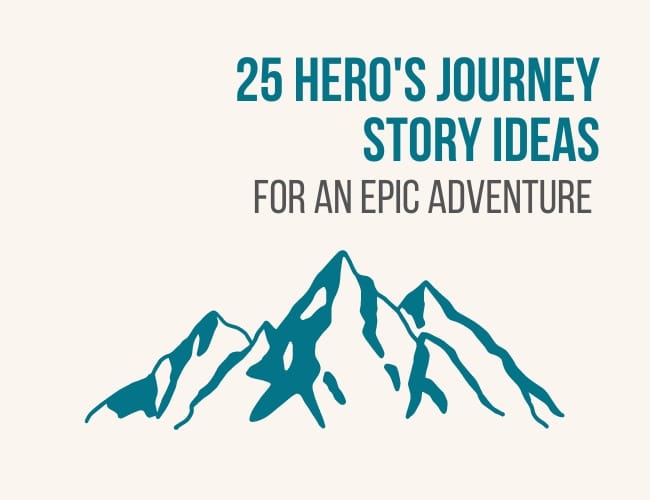
If you've watched any one of George Lucas's Star Wars films, read or watched any of J.R.R. Tolkien's The Lord of the Rings books or films then you've experienced the hero's journey. I've walked my creative writing classes through these stories numerous times, helping them identify and emulate the story principles.
Part of what makes these stories so compelling is that they follow a character from their ordinary life into an adventure they couldn't have imagined, leading to personal transformation.
You can see David Stafford's (our resident expert on Joseph Campbell's Hero's Journey Story Structure) Ultimate Guide to the Hero's Journey here if you want to see a complete breakdown of the heroic journey that creates these character arcs.
While there are twelve stages or phases in a traditional hero's journey story, I've organized these prompts in the three essential stages: the departure, the initiation, and the return. You can combine these into a story or use them individually to fuel just one section of your larger story.
Try one and see how it pushes your character out of their normal life and into a hero venture!
Hero's Journey Story Ideas for the Departure
This opening stage is all about establishing a would-be hero's everyday life, revealing the status quo, and then disrupting it. What's expected of this character in their current state? What do they believe about themselves?
The departure stage requires the hero to leave that mundane life, that familiar world behind to begin their adventure that will happen in a series of stages. The departure includes: the Ordinary World , the Call to Adventure and Refusal of the Call , Meet the Mentor , and the Crossing of the Threshold .
1. Create a scene where your character is frustrated or in trouble at their current workplace or home. Avoid a wake-up scene unless you can make it compelling.
2. Show your character doing their favorite activity when it gets interrupted with something inconsequential.
3. Show your character interacting with a pesky sibling, challenging family member, or sometimes friend.
4. What problem will arise in your character's community that will necessitate them leaving home to solve it?
5. Create a major threat to your character's favorite place or person , preferably one that could be extended to the entire community.
6. Describe the insecurities that plague your character, focusing on ones that will inform their refusal of the call to adventure.
7. Create a mentor (or two or three!) that will inspire your character to think beyond their current limitations and plant a seed of inspiration. What kind of person or being will best speak into your character's specific fears?
8. Write the scene where the character accepts the call and leaves home to begin the adventure.
Hero's Journey Story Ideas for the Initiation Stage
The initiation stage includes Trials, Allies, and Enemies ; Approach to the Inmost Cave ; The Ordeal ; and The Reward .
This next part, the initiation, is usually the longest in a story, loosely from the inciting incident to the end of the climax (and immediate repercussions). This is a place to play—get creative with the trials, the complications, and the ultimate battle.
9. Make a list of your hero's strengths and weaknesses. Now, create a trial or an antagonist that can challenge each of those traits.
10. Write a scene where your hero meets an unexpected ally on their journey .
11. Create a fantastical challenge or physical obstacle in the world where your story is set. Drop your hero and one other character into the situation and force them to fight their way through it.
12. Write a scene where the hero faces something they think will be easy, but it challenges them in an unexpected (and humbling way).
13. How will your character take on a new physical look during the initiation phase? How will their build, clothing, features change? Write the description , including an outline of how it happens.
14. Create a creature who the hero will approach as a threat. What happens in the face-off? Will the creature remain foe? or become a friend?
15. The character archetype of the shadow (sometimes called the villain) appears during the approach to the inmost cave. The villain is the dark side of the hero. Write a scene where the hero misuses their power and prowess—then see if you can adapt it for the shadow OR use it to help the hero grow.
16. Write a scene where the hero faces their toughest foe, the scene where they are not sure they can beat evil.
17. Consider how the fight has become even more personal for the hero. Write about what they believe they are fighting for now. Make sure the stakes are high.
Hero's Journey Story Ideas for the Return
Finally, the Return stage shows off how our hero has changed, how the internal transformation has now manifested as an external change as the hero fully embraces their new status and learning.
It includes the final stages of the journey structure: The Road Back , The Resurrection , and the Return with the Elixir .
18. Write a scene (or a list!) where the hero recounts what they have lost on the journey.
19. Write a scene where the hero has achieved what they hoped, but somehow it falls short of what they thought it would be to them.
20. Write out the worst thing that could happen on the hero's way back home. How will they face it?
21. Describe (or draw!) a map of the hero's way home. Will they return the same way or go a new direction? What have they learned?
22. Write a scene where your hero makes a significant sacrifice to defeat evil, preferably on behalf of their community.
23. Write a scene where the hero encounters a setback on their way home, either physical or relational. Make sure they are using their newfound confidence to solve the problem.
24. Make a list of possible “elixirs” or rewards your hero could bring back from their adventure. Think about what is broken or important to their community and what that physical object will mean to them. Choose one elixir and write the moment the hero presents it.
25. Write a hero's celebration feast scene.
Now you try!
The hero's journey structure can push you as a writer to focus on character development in addition to its opportunities for action and world building. Try one of these prompts today in your writing time and see where it leads!
Choose one of the prompts above. Set your timer for fifteen minutes and write. When finished, post your practice in the Pro Practice Workshop here , and I hope you'll share feedback and encouragement with a few other writers. Help those heroes shine!
Sue Weems is a writer, teacher, and traveler with an advanced degree in (mostly fictional) revenge. When she’s not rationalizing her love for parentheses (and dramatic asides), she follows a sailor around the globe with their four children, two dogs, and an impossibly tall stack of books to read. You can read more of her writing tips on her website .

Submit a Comment Cancel reply
Your email address will not be published. Required fields are marked *
Submit Comment
Join over 450,000 readers who are saying YES to practice. You’ll also get a free copy of our eBook 14 Prompts :
Popular Resources
Book Writing Tips & Guides Creativity & Inspiration Tips Writing Prompts Grammar & Vocab Resources Best Book Writing Software ProWritingAid Review Writing Teacher Resources Publisher Rocket Review Scrivener Review Gifts for Writers
Books By Our Writers

You've got it! Just us where to send your guide.
Enter your email to get our free 10-step guide to becoming a writer.
You've got it! Just us where to send your book.
Enter your first name and email to get our free book, 14 Prompts.
Want to Get Published?
Enter your email to get our free interactive checklist to writing and publishing a book.
Short Films and the Hero’s Journey
Scott Myers
Go Into The Story
Pixar shows it’s possible to adapt the Hero’s Journey in short form storytelling.
In response to a recent post on Joseph Campbell — ”Every myth is psychologically symbolic” — Carlton Bell posted this :
I’m curious. How would you go about incorporating the hero’s journey into a short film? 15 minutes is hardly enough time I think to go through all the stages. I want to make a short film and having all the elements of traditional stories comes off as elusive when making a 15 minute film.
This is an example of how the conversation about the Hero’s Journey has gone off the rails — through no fault of Carlton’s. It’s just that over the years, a kind of belief has settled into screenwriting consciousness that the Hero’s Journey is comprised of 12 “stages” as if this is a mandatory type of thing, even some sort of predetermined paradigm.
In fact, Joseph Campbell never intended for writers to use the Hero’s Journey as a blueprint for storytelling. Rather he came at it from the other direction: through a lifetime of reading tens of thousands of stories from around the world, he found this organic underlying nature of Story (in fact in his book “The Hero With a Thousand Faces,” Campbell details 17 narrative elements common to the Hero’s Journey).
Like Carl Jung, who was a huge influence on Campbell, he believed in the power of archetypes and how creative expression best derives from an artist’s unconscious self — dreams, fantasies, senses, feelings. Stories which reflect the Hero’s Journey do so organically because they reflect the innate nature of Story which people experience worldwide through their upbringing and the collective unconscious .
As far as I’m concerned, it’s more helpful for writers to think of the Hero’s Journey in terms of the meta take Campbell provides. Three movements:
Separation. Initiation. Return.
That not only completely aligns with Three Act Structure, it sets aside this notion which — again — has somehow taken root in Hollywood that we HAVE to use 12 stages in order to qualify as a Hero’s Journey.
This is ESPECIALLY true when it comes to short form storytelling as in the case of Carlton’s question: short movies.
When it comes to short form storytelling, nobody is better than Pixar (in my humble opinion). They produce a short film to accompany each of their feature length movies and that collection of movies ( Vol. 1 , Vol. 2 ) offers a wonderful education in storytelling.
Consider their 2016 short film Piper :
This is a classic Hero’s Journey in three movements:
Separation: Piper’s mother compels Piper to leave the comfort of home — where he is fed by his mother — to test out how to feed himself. Like many Hero’s Journey tales, this is a story about a youth transitioning into adulthood.
Initiation: Piper gets wiped out by a wave. His fears and anxieties are now elevated, making it harder for him to move forward. Then a Mentor figure shows up: A sand crab. Curious, Piper follows the crab, then gains ‘wisdom’: Piper can burrow himself into the sand when the wave comes and as a result see the world in a new light, opening up a new way to forage for food.
Return: Piper reconnects with his ‘tribe’ of birds, demonstrating his wisdom in action, embracing his inner sense of confidence as he’s armed with his newfound capability — he doesn’t have to run away from the waves (the tribe’s Old Way of Being, rather he brings back the ‘booty’ of what he’s learned, burrowing into the sand when the waves come). Everybody benefits and Piper is a transformed individual.
All of THAT in 4:15 (before credits).
That is a Hero’s Journey! Separation. Initiation. Return.
So Carlton, it’s not only possible to craft a Hero’s Journey story in 15 minutes, you can do it in 4 minutes!
Free yourself from this rigid notion that we HAVE to structure scripts according to 12 “stages” of the Hero’s Journey or, frankly, ANY other sort of paradigm.
If your story follows three movements as first detailed by Aristotle — Beginning / Middle / End — or articulated in his own way by Campbell — Separation / Initiation / Return — or Hegel — Thesis / Antithesis / Synthesis — or sonata form — Exposition / Development / Recapitulation — or your own computer keyboard — Ctrl / Alt / Delete — then…
You’re probably telling a Hero’s Journey story, even in a short film.

Written by Scott Myers
More from scott myers and go into the story.
Daily Dialogue —March 1, 2017
Harry: wait a minute ron: you understand why, harry once i make my move, the queen will take me. then you’re free to check the king….

100 Scene-Writing Prompts
At a fundamental level, screenwriting is scene-writing. use these prompts to improve your scene-writing chops., movie analysis: “her”.

Script Download Links
100+ scripts made available by studios and production companies., recommended from medium.
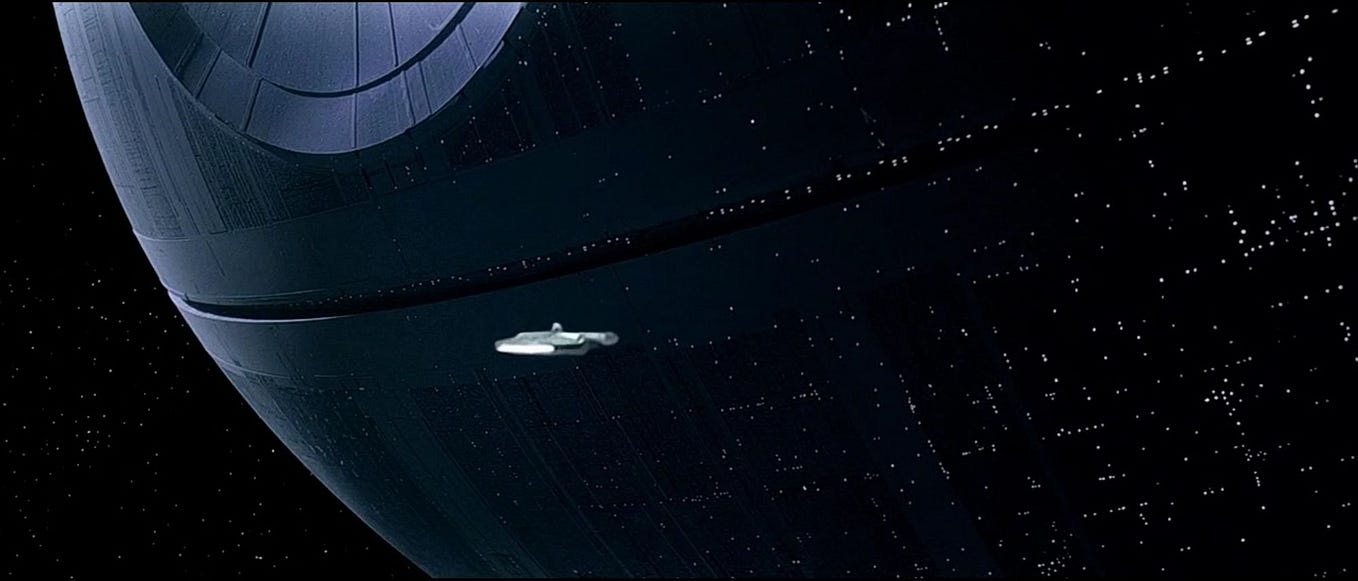
Story and Plot
The Midpoint
While medium is a monthly blog for me, i publish a free screenwriting lesson every tuesday morning at storyandplot.com..
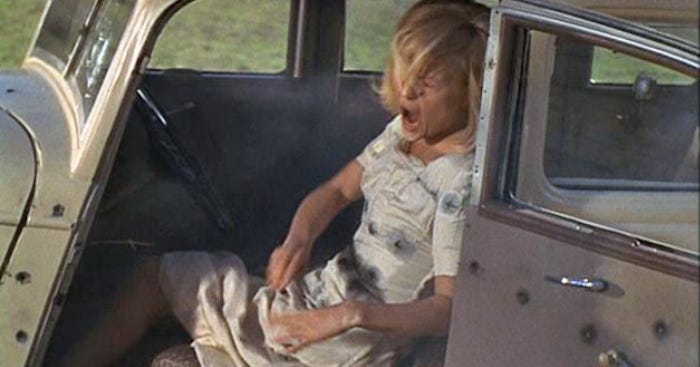
Script To Screen: “Bonnie and Clyde”
The ending sequence from the 1967 movie bonnie and clyde, written by david newman & robert benton..
My Favorite Writing Advice & Inspo
Our favorite writing prompts and inspiration
Stories To Help You Overcome Writer's Block
Best of The Writing Cooperative

Richard Walter
Moving Pictures
If You Want to Write a Screenplay That Sells, Stop Trying
If at first you don’t succeed….
Rob Hestand
Writing for Animation: Storytelling in Pixar’s ‘Up’
In the realm of storytelling, animation holds a special place. it’s a medium that blends visual artistry, imaginative worlds, and….
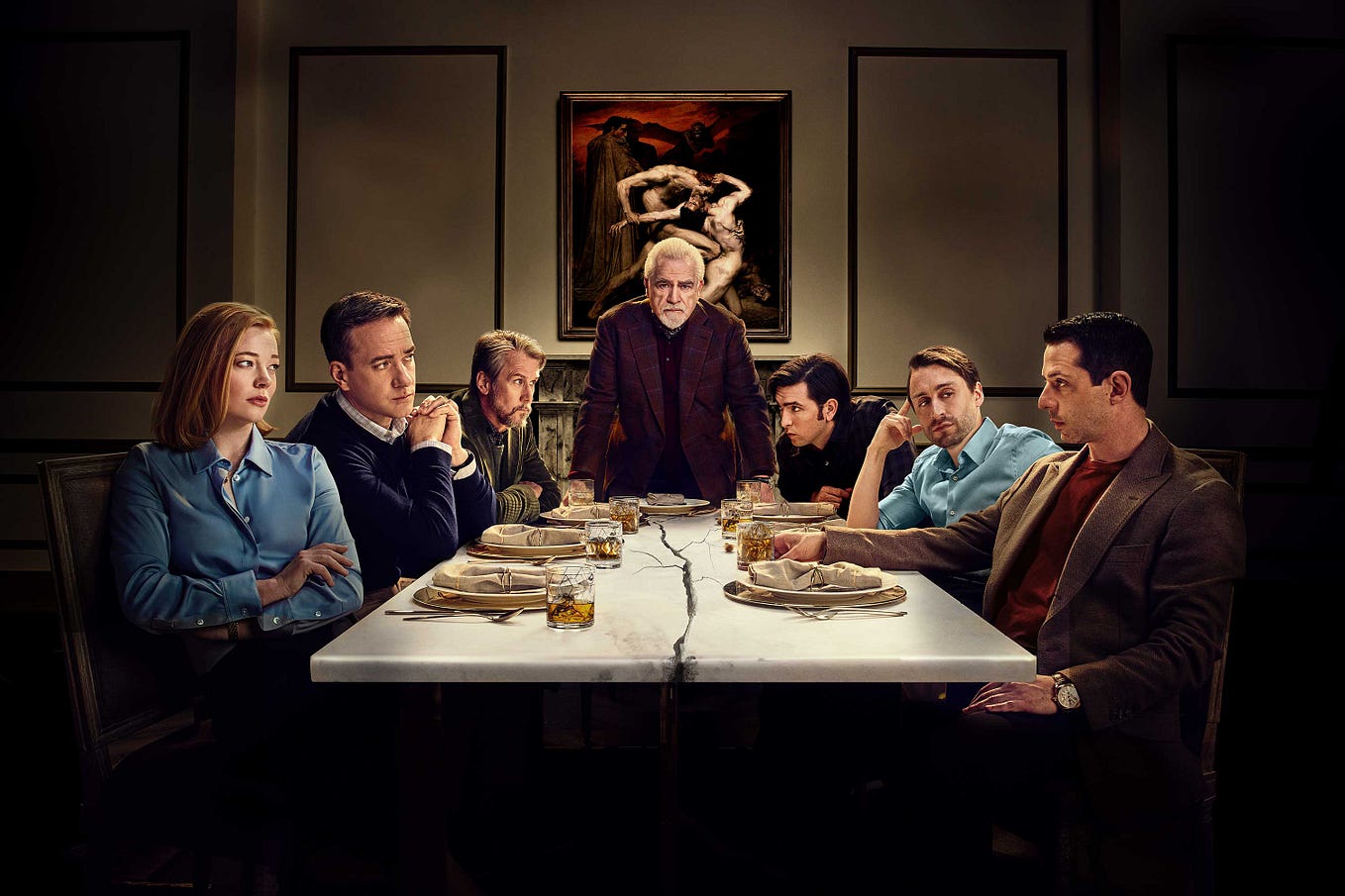
Filmarket Hub
Unlocking Succession: 7 Powerful Scripting Lessons from Creator Jesse Armstrong
In 2010, jesse armstrong earned an oscar nomination for ‘best adapted screenplay’ for his exceptional work on “in the loop,” a cinematic….
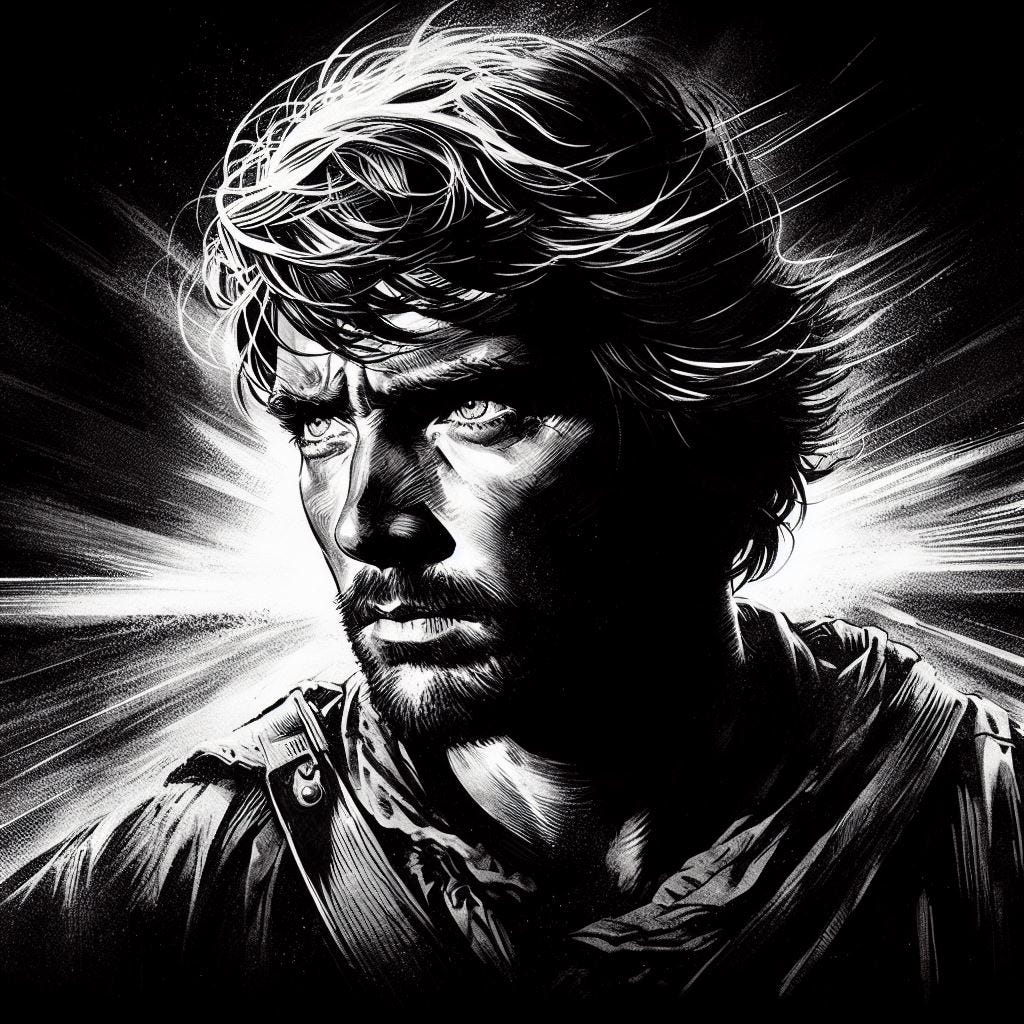
Andrea Feccomandi
ILLUMINATION
What is the Hero’s Journey?
Discover a solid narrative structure for your story.
Text to speech
31 Best Hero’s Journey Books to Add to Your Reading List
Interested in learning more about the hero’s journey stories? Discover the best hero’s journey books to begin your reading adventure!
Writers and readers love hero’s journey stories . From the origin stories of cultures to the twelfth-century poems that make up The Mabinogion (themselves derived from earlier oral traditions) to today’s blockbuster SF-laden movies, the monomyth is a part of our collective, subconscious experience.
These stories feature certain archetypes and follow a set pattern. The hero sets off on a quest from his/her ordinary world (The Departure), subsequently learns a lesson or obtains new knowledge, and uses this to triumph over something, someone, or a set of circumstances (The Initiation).
The hero then returns to his/her own world, transformed or with the tools needed to enact positive change (The Return). Below, we take a look at the 31 best books to add to your reading list if you’re a fan of the genre. This list pairs nicely with our roundup of movies that follow the hero’s journey .
Here Are The Best Hero’s Journey Books
1. the hobbit by jrr tolkien, 2. the odyssey by homer, 3. harry potter and the sorcerer’s stone by jk rowling, 4. the alchemist by paulo coelho, 5. the inferno by dante alighieri, 6. the goose girl by shannon hale, 7. the wizard of oz by l frank baum, 8. the hunger games by suzanne collins, 9. to kill a mockingbird by harper lee, 10. where the mountain meets the moon by grace lin, 11. don quixote by miguel de cervantes, 12. the 5th wave by rick yancey, 13. beowulf, 14. siddhartha: an indian novel by hermann hesse, 15. a separate reality by carlos castaneda, 16. across the universe by beth revis, 17. american gods by neil gaiman, 18. little briar rose (sleeping beauty) by the brothers grimm, 19. jane eyre by charlotte bronte, 20. the pilgrim’s progress by john bunyan, 21. the hound of the baskervilles by arthur conan doyle, 22. treasure island by robert louis stevenson, 23. argonautica by apollonius, 24. the fault in our stars by john green, 25. holes by louis sachar, 26. interstellar by greg keyes, 27. divergent by veronica roth, 28. the buried giant by kazuo ishiguro, 29. alice in wonderland by lewis carroll, 30. the lion, the witch and the wardrobe by c.s. lewis, 31. fight club by chuck palahniuk.

This classic book by J.R.R. Tolkien has featured regularly on best-seller lists since its first publication in 1937 and is widely cited as one of the twentieth century’s most beloved and influential novels. It’s a classic hero’s journey genre tale, too – featuring an unlikely hero in the form of Bilbo Baggins.
This unassuming hobbit is swept off on an adventure when Gandalf the wizard and a company of dwarves appear on his doorstep. He finds himself part of a mission to reclaim a fabulous horde of treasure from under the very nose of the fearsome dragon Smaug the Magnificent. For more, check out our guide to the best fantasy authors. You can also check out our guide on hero’s journey archetypes .
“This is a story of how a Baggins had an adventure, and found himself doing and saying things altogether unexpected.” JRR Tolkien
- Tolkien, J.R.R. (Author)
- English (Publication Language)
- 320 Pages - 08/15/2002 (Publication Date) - Clarion Books (Publisher)

Homer’s story of Odysseus is one of the oldest surviving works of literature that’s still being read by audiences today. This epic story tells the tale of the wandering king, trying to get home to his wife Penelope following the end of the Trojan War . The tale features all the tropes of a hero’s journey story, from its opening.
Odysseus is portrayed in his ordinary life, through to the Crossing the Threshold section, where the Gods become enraged with the hero and his company, summoning a storm to throw their boat off course, to The Return, whereby after completing a final challenge, Odysseus is returned to his royal life with Penelope.
“A man who has been through bitter experiences and traveled far enjoys even his sufferings after a time.” Homer
No products found.

JK Rowling’s worldwide best-seller Harry Potter is a prime example of the hero’s journey tale. The book starts with Harry in the ordinary world before moving through all of the typical hero’s journey stages, as detailed by Joseph Campbell in his book The Hero with a Thousand Faces. Harry receives the invitation letter to Hogwarts (The Call to Adventure), struggles to accept this sudden turn of events (Refusal of the Call), and Meets the Mentor – in the first book, this is Hagrid.
The Crossing the Threshold stage is his literal passing through the wall to access Platform 9 3/4 at the station. The Ordeal is represented by the various challenges the young wizard encounters at his new school, culminating in his temporary triumph over Voldemort. At the end of the book, he returns to the world of the muggles for the summer vacation, happy that he’ll be returning to Hogwarts soon (The Return).
“A breeze ruffled the neat hedges of Privet Drive, which lay silent and tidy under an inky sky, the very last place you would expect astonishing things to happen.” JK Rowling

The hero’s journey takes many different forms: it’s not always about defeating villains or finding lost treasure. The genre can also be powerfully deployed in the service of a spiritual quest tale, as in this novel. While the young protagonist, who is a perfect example of the Innocent/Orphan hero archetype, might start his journey looking for real-world riches, what unfolds is a beautiful story of self-discovery. Ultimately, the book is about the importance of heeding our hearts and the transformative power of dreams.
“Remember that wherever your heart is, there you will find your treasure.” Paulo Coelho
- Note: Item has rough Cut edges(Edges are cut improperly intentionally by the manufacturer)
- A special 25th anniversary edition of the extraordinary international bestseller, including a new Foreword by Paulo Coelho.
- Combining magic, mysticism, wisdom and wonder into an inspiring tale of self-discovery,
- Coelho, Paulo (Author)

The first volume of The Divine Comedy is considered a literary masterpiece, following the hero’s journey on a quest through the various Circles of Hell. After meeting Virgil (the Mentor), our narrator progresses, facing numerous trials and tests, always seeking his beloved Beatrice. Although he sometimes has ‘weapons’ with which to face his adversaries, his most potent weapon is his faith in his journey, which is a blend of both a spiritual and a physical mission.
“Soon you will be where your own eyes will see the source and cause and give you their own answer to the mystery.” Dante Alighieri
- Alighieri, Dante (Author)
- 108 Pages - 05/30/2013 (Publication Date) - CreateSpace Independent Publishing Platform (Publisher)

New York Times bestselling author Shannon Hale has written a book that, although aimed at middle-schoolers, has become much loved by kids and adults alike. Drawing on the tradition of folktales, it’s a heroine’s journey story, recounting the tale of Ani, who’s uncomfortable around people but able to communicate easily with animals. She leaves her world behind. However, when she’s sent away to marry. Despite disaster striking, she finds herself in a job where she can use her unique talents and give voice to her inner self.
If we don’t tell strange stories, when something strange happens we won’t believe it.” Shannon Hale
- Hardcover Book
- Shannon Hale (Author)
- 400 Pages - 04/13/2024 (Publication Date) - Bloomsbury Childrens Books (Publisher)

A key element of the heroine’s journey is, while it maintains recognizable archetype qualities, there is an overcoming or subversion of society’s expectations regarding women. Rather than staying at home in Kanas, Dorothy has the adventure she longs for.
While the hero’s journey stories tend to move from the inner world to the outer (from the darkness to the light), the heroine’s journey is usually the inverse of this, with characters moving from the outer world to a deeper communion with their inner selves and desires.
“The true courage is in facing danger when you are afraid, and that kind of courage you have in plenty.’“ L Frank Baum
- Baum, L. Frank (Author)
- 160 Pages - 12/01/2016 (Publication Date) - Sweet Cherry Publishing (Publisher)
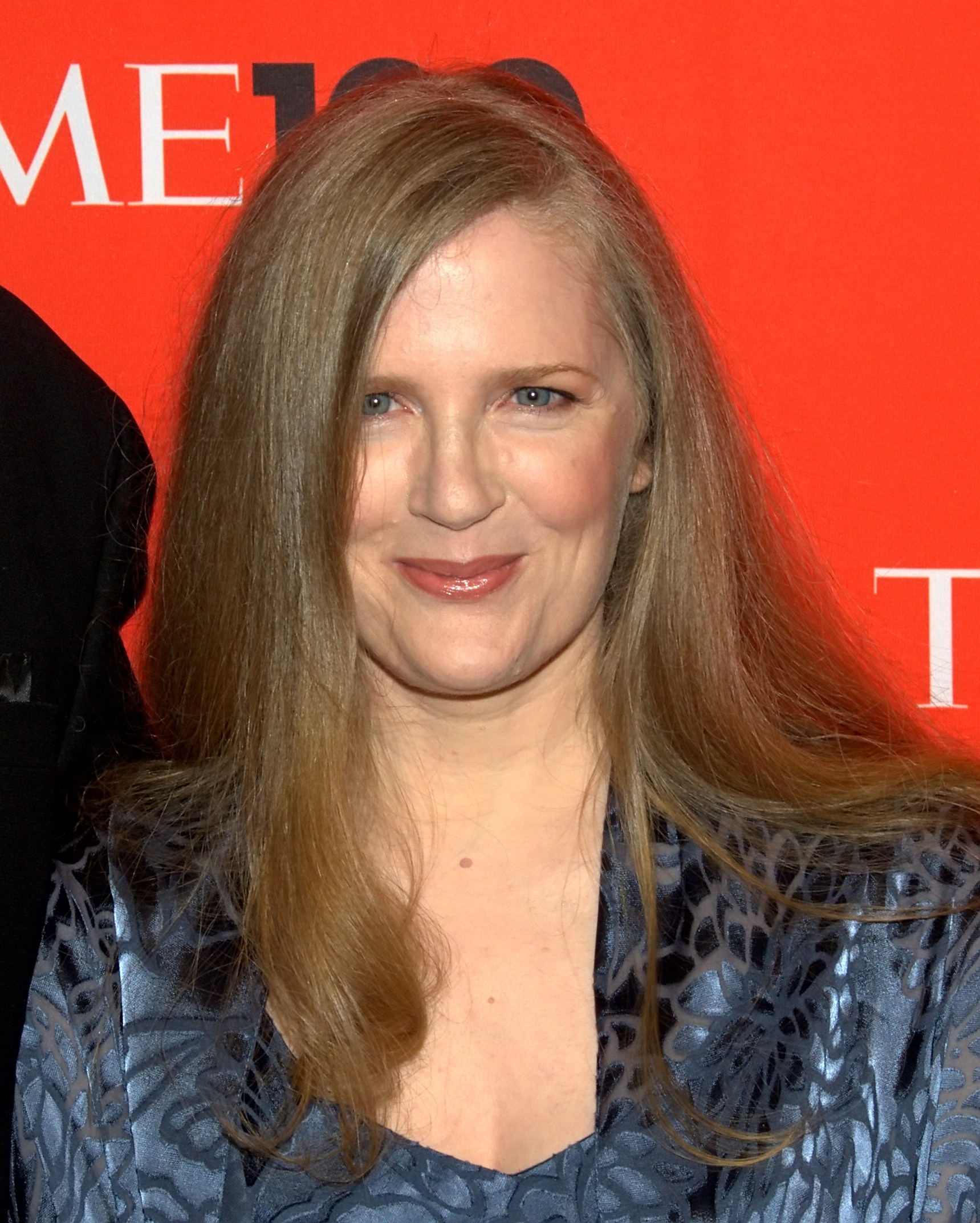
Envisioning a dystopian new world in which each District is compelled to send two children between the ages of twelve and sixteen to compete in the annual Hunger Games, Suzanne Collins’ novels are widely cited as examples of the hero’s journey genre. Now a Hollywood blockbuster series of movies, the story demonstrates how the tropes inherent in Homer’s tale of Odysseus, written nearly 3,000 years ago, are still alive and kicking today. For more, check out our guide to the best books for teenagers .
“I’m more than just a piece in their Games.” Suzanne Collins
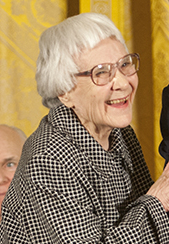
Set in 1930s Alabama, Atticus Finch is a lawyer attempting to defend and prove the innocence of Tom Robinson, a black man wrongly accused of raping a white woman. Atticus’s hero’s journey is largely a psychological one, in which he faces his own innermost beliefs, and is forced to confront morality and prejudice in the south of the US, how this manifests, and its impact on the individual and society – as well as the delivery of justice.
“You never really understand a person until you consider things from his point of view. Until you climb inside of his skin and walk around in it.” Harper Lee
Another bestselling novel adored by adults and children alike, Where the Mountain Meets the Moon chronicles Minli’s quest as she journies to find the Old Man on the Moon. Drawing on Chinese folktales, this rich fantasy, accompanied by the author’s beautiful illustrations, follows Minli as she encounters a range of otherworldly characters in her quest to find the answers to some of life’s biggest questions.
“If you make happy those that are near, those that are far will come.” Grace Lin
- THE SIZE: Spy Camera has the smallest size in the world (0.87in, 0.7oz cube).
- SUPERIOR HD QUALITY: With a 1080P sensor, this camera captures over 12 million pixels (4032x3024), allowing you to see every detail without risk of detection.
- MOTION DETECTION: When detecting the object moving, the mini camera'll be activated, follow the object's trace, and record automatically.
- Lin, Grace (Author)

The Spanish masterpiece, first published in 1605, begins in the ordinary world of Alonso Quijano, a middle-aged man who loves nothing more than reading stories about knights and their adventures. Deciding to leave behind his own life to become a knight errant himself, Alonso changes his name to Don Quixote and sets off on a series of heroic deeds – some more successful than others!
“It is by rugged paths like these they go that scale the heights of immortality, unreached by those that falter here below.” Miguel de Cervantes
- Miguel De Cervantes Saavedra (Author)
- English (Subtitle)
- 800 Pages - 09/03/1997 (Publication Date) - Wordsworth Editions Ltd (Publisher)

This Amazon bestseller by Rick Yancey received the Goodreads Choice award. The Fifth Wave focuses on Cassie and Evan, two of the last human survivors on Earth following an alien invasion, dreading the imminent fourth wave. As a hero’s journey tale, Cassie must tackle both a physical, dangerous quest and attempt to understand the truth of the terrifying new world she’s inhabiting.
“Some things you don’t have to promise, you just do.” Rick Yancey
The hero in this Old English epic poem from an unknown author follows precisely the steps outlined by Joseph Campbell in The Hero with a Thousand Faces. From the Call to Adventure and the Refusal of the Call and all the way through to The Return – otherwise known as The Elixir- in which the hero brings something back from his adventure to benefit society. In the case of Beowulf, it’s the insight he has gained, which will keep his people safe going forward, and his blessing of peace,
“In the time I was given I lived in my own land, ruling my people well, never turning to treachery, or swearing to oaths contrary to right.” Beowulf
- Unknown (Author)
- 142 Pages - 11/20/2020 (Publication Date) - East India Publishing Company (Publisher)

A much-loved novel published in 1951 that follows the classic hero’s journey template, Siddhartha concerns the titular character on his quest for self-discovery. Deciding to leave his home in the ancient Nepalese kingdom of Kapilavastu, Siddhartha sets out as a wandering beggar seeking spiritual enlightenment. Through his journeying, the hero learns the importance of loving the world in its entirety and that a single, fixed belief does not constitute truth.
“Knowledge can be communicated, but not wisdom. One can find it, live it, do wonders through it, but one cannot communicate and teach it.” Hermann Hesse
- Hesse, Hermann (Author)
- 224 Pages - 09/19/2023 (Publication Date) - Wellfleet Press (Publisher)
With its mind-bending perspectives and mythic structure, it’s unclear how much of this book is fictional and how much is based on reality. With its clear mentor character (the Yaqui Indian shaman, Don Juan) and the dangerous journey at its heart that the protagonist is compelled to undertake, it’s a clear example of the hero’s journey story – though possibly one that pushes the boundaries of the genre more than any you’ve come across!
“We are men and our lot in life is to learn and be hurled into inconceivable new worlds.” Carols Castaneda
- Carlos Castaneda (Author)
- 263 Pages - 10/01/1972 (Publication Date) - Pocket Books (Publisher)

Awakening fifty years too soon from cryosleep, Amy finds herself aboard the spaceship Godspeed and in a terrifying situation. Realizing that her awakening didn’t happen by accident (The Call to Action), Amy has to accept the truth that someone else on board wants her dead – and that her parents, still in cryosleep, could be the next victims if she doesn’t figure out what’s going on. But meeting Eldest, the future leader of the ship, changes everything.
“Even when you are silent, even when you block out all noise, your body is still a cacophony of life.” Beth Revis
- Beth Revis (Author)
- 416 Pages - 02/02/2011 (Publication Date) - New York: Razor Bill (Publisher)

Blending fantasy and world mythology (both old and new), this novel widely divides its audience: it falls into the love it or loathe it category. But whatever your views on the plot and the writing, it’s an innovative take on the hero’s journey trope that reimagines the genre. Even its archetype, Shadow, is a vivid and disturbing (yet recognizable) hero figure – although, in typical Neil Gaiman style, the name ‘Shadow’ is also one of the character archetypes set out by Christopher Vogler’s author of the influential book, The Writer’s Journey.
“Even nothing cannot last forever.” Nail Gaiman
Fairy tales are great places to look for the hero’s journey stories being themselves, born from ancient folktales, legends, and myths. There are many versions of this tale, many of which feature very dark and disturbing themes, but the Grimms’ version is relatively tame. While reading, consider the extent to which the story is a hero’s or a heroine’s journey tale – thinking about the journey from outer to inner (and vice versa) and how this relates to the narrative of both the prince and Briar Rose herself.
“The pigeons upon the roof pulled out their heads from under their wings, looked round, and flew into the open country; the flies on the wall crept again; the fire in the kitchen burned up and flickered and cooked the meat; the joint began to turn and fizzle again.” Brothers Grimm
- Brothers Grimm (Author)
- 04/13/2024 (Publication Date) - HarperCollins Publishers (Publisher)
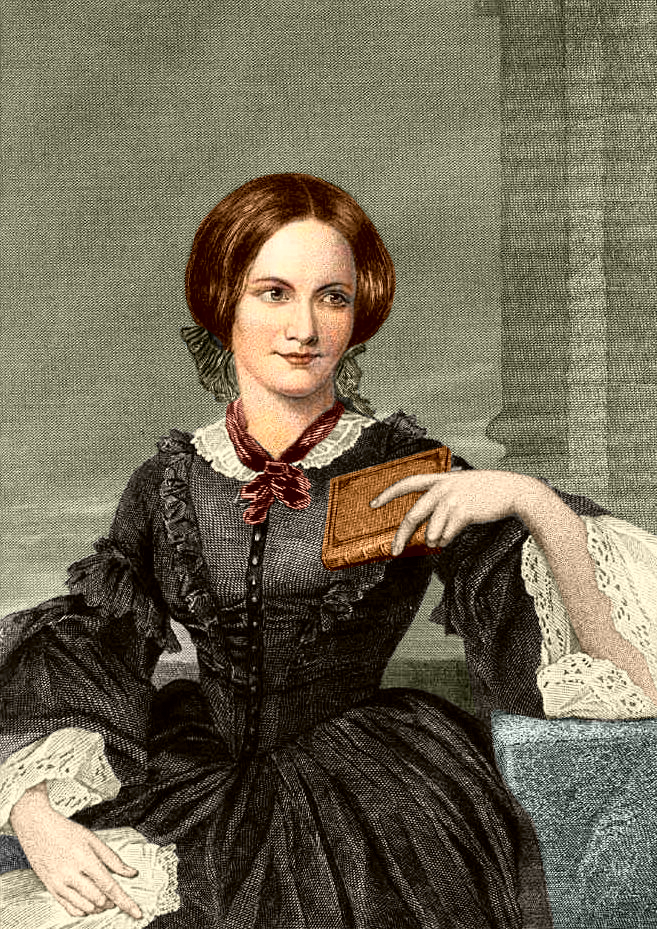
In his writings, the renowned psychiatrist and psychoanalyst Carl Jung outlined his ideas about archetypes, including archetypal journies, contending that humans’ unconscious minds are remarkably similar. This is why the hero’s journey stories have always permeated literature and art and continue to do so.
At its heart, the journey of Jane Eyre is the same as that taken by Luke Skywalker in Star Wars, despite the time and genre divide between the two. Just as Luke’s quest is about discovering truth and recognizing potential, so Jane’s journey is concerned with growth and independence – and there’s a disturbing truth in the attic to confront along the way, too.
Just as with Skywalker, Jane emerges at the end of the tale as a strong, loyal, passionate character who has faced a devastating reality and emerged from the ordeal with even greater reserves of tenacity than before. For more, check out our guide to the best British authors .
“I am no bird; and no net ensnares me: I am a free human being with an independent will.” Charlotte Bronte
- Bronte, Charlotte (Author)
- 400 Pages - 06/01/2015 (Publication Date) - Digireads.com (Publisher)

A classic hero’s journey tale and the, at times, the most widely read book in the world, second only to The Bible, Bunyan’s book is concerned with the importance of learning and reading and the innate value of community. The hero, Christian, leaves his home and must face a series of trials – key to the genre. However, each tribulation or challenge must be thoroughly understood if a pilgrim is to progress. There’s even a final trial – a test of faith – which Christians must pass to access the Celestial City.
“The road of denial leads to the precipice of destruction.” John Bunyan
- Bunyan, John (Author)
- 400 Pages - 12/18/2003 (Publication Date) - Oxford University Press (Publisher)
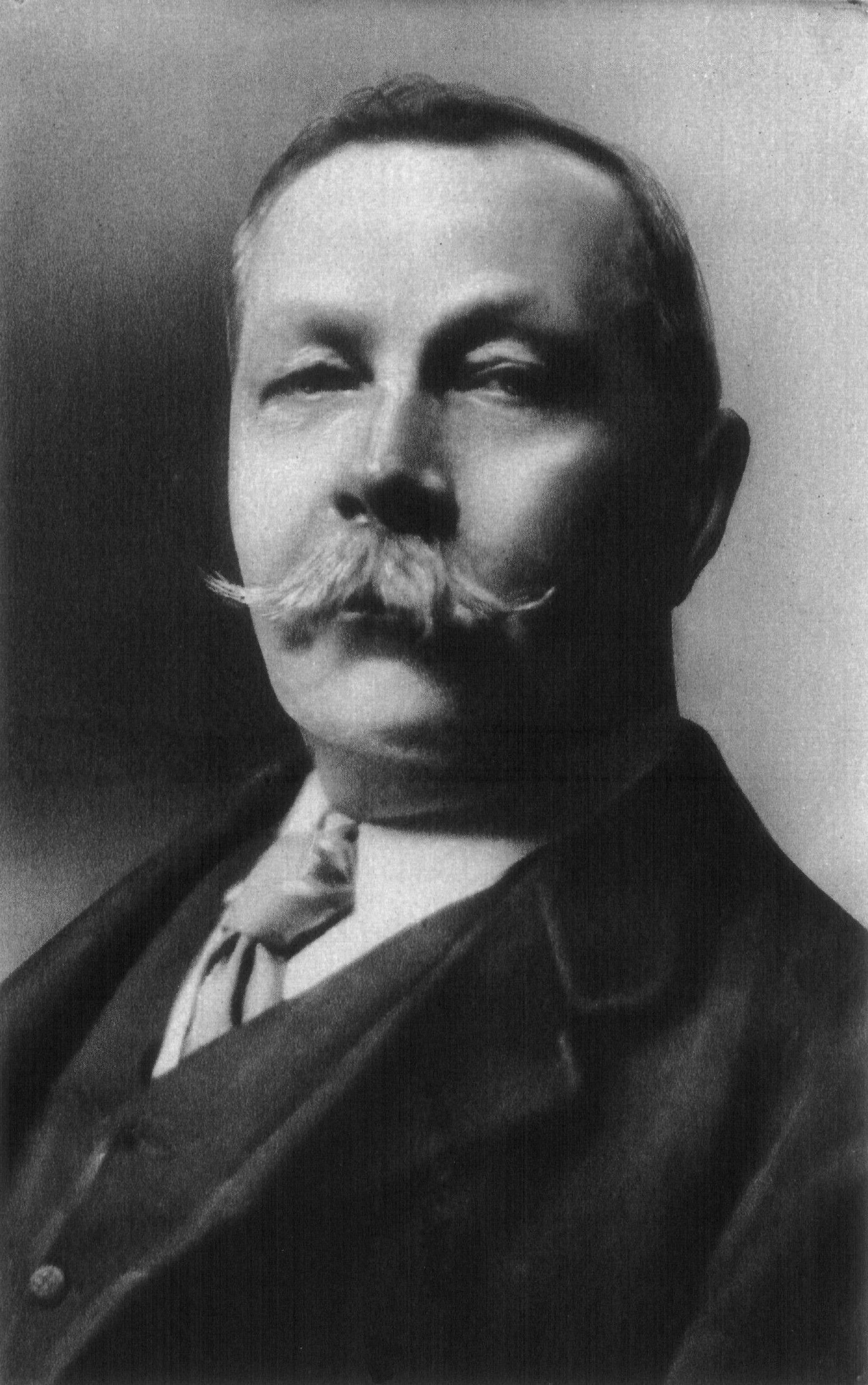
The greatest literary detective of all time, Sherlock Holmes, is a hero archetype: The Researcher (the character of Indiana Jones also falls within this hero category). The Hound of the Baskervilles is one of the most well-known stories featuring Holmes and his trusty sidekick Dr. Watson. This is a great book for those interested in the hero’s journey genre, as the stages are so clearly delineated, from the Call to Action (Holmes’ enlistment to the case) through to The Return, whereby Watson files the case closed.
“The world is full of obvious things which nobody by any chance ever observes.” Arthur Conan Doyle
- Arthur Conan Doyle (Author)
- 174 Pages - 07/02/2007 (Publication Date) - Penguin Books (Publisher)

In this classic by a 19th century author , we meet Jim going about his daily life in the inn that his family owns. Following the Call to Action, where the boy becomes fascinated with the ‘black spot’ presented to the old captain, Billy Bones, who’s staying at the inn, Jim becomes embroiled in an epic adventure on the high seas in search of buried treasure.
“We are all travelers in the wilderness of this world, and the best we can find in our travels is an honest friend.” Robert Louis Stevenson
- Robert Louis Stevenson (author) (Author)
- 336 Pages - 09/14/2018 (Publication Date) - Wordsworth Editions Ltd (Publisher)
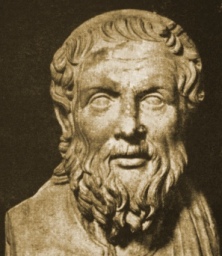
Testament to the power of myth is the enduring popularity of this story, which recounts the adventures of Jason and the Argonauts as they quest for the golden fleece. The epic, written – incredibly – in the third century BC, remains so widely read that there are not only multiple versions available on amazon, but you can listen to it as an audiobook, too! It features all the archetypal stages of the genre, including the Refusal of the Call, whereby Jason initially urges the heroes to elect another leader for the voyage. Once chosen, though, Heracles insists that Jason can take up the mantle, confident he can lead the band to victory.
“But friendly Juno shrouds/Her favorite heroes in a veil of clouds.” Apollonius
- Rhodius, Apollonius (Author)
- 129 Pages - 11/11/2022 (Publication Date) - Independently published (Publisher)

A bestseller that was also received extremely well by critics, this novel is a hero’s journey tale with a difference. Hazel, our protagonist, is sixteen years old and suffering from thyroid cancer that has spread to her lungs. Her parents insist she attends a support group (Crossing the Threshold) where she meets Augustus Walters, a seventeen-year-old osteosarcoma survivor. It’s now a Hollywood blockbuster movie that captures Amy’s journey into love.
“My name is Hazel. Augustus Waters was the great star-crossed love of my life.” John Green
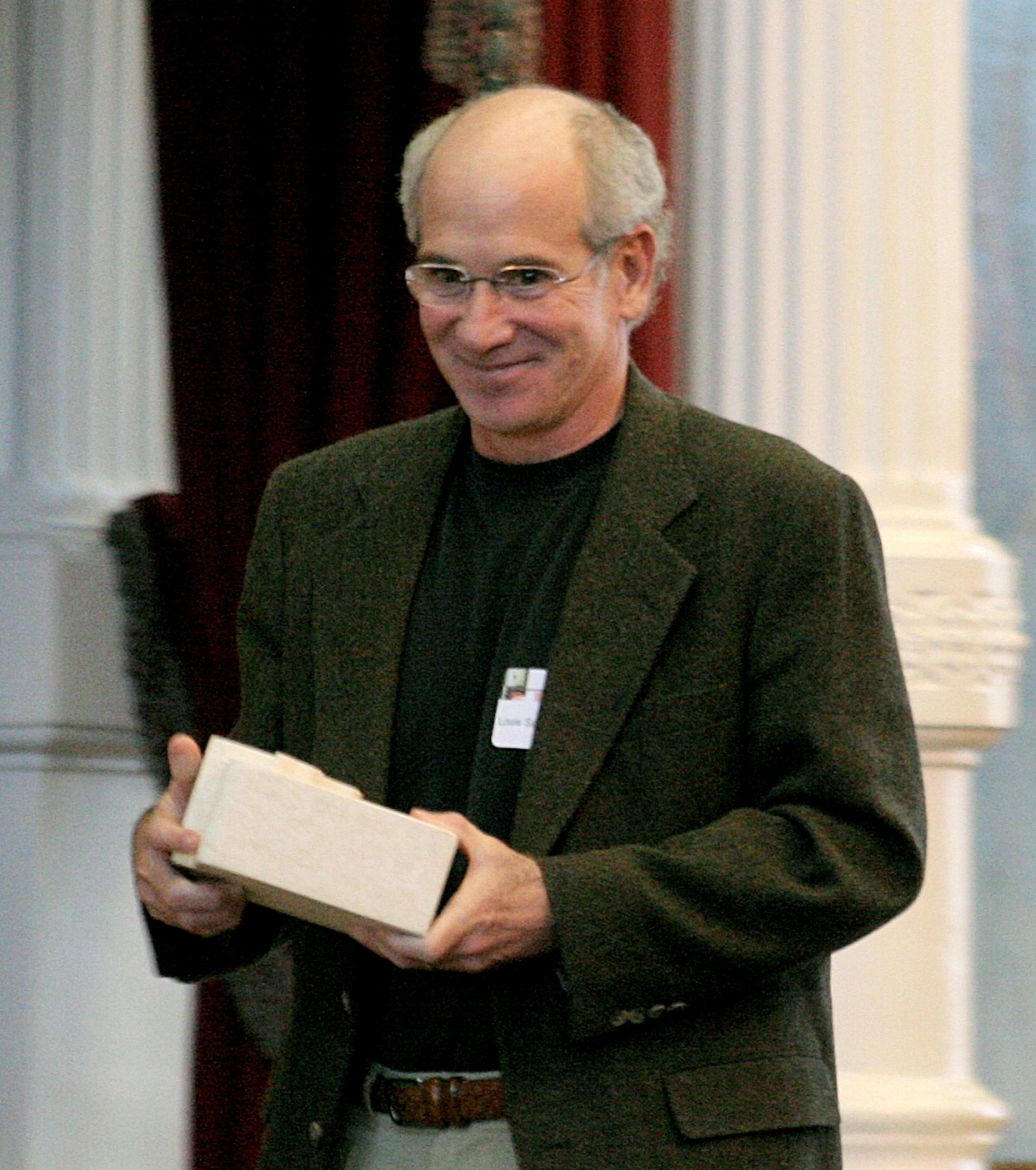
When fourteen-year-old Stanley is wrongly convicted of stealing, he’s sent to a correctional camp where the inmates are forced by the warden to dig holes, seemingly at random. The story is comprised of three individual but interconnected tales. It makes for a fascinating take on the hero’s journey genre, the pattern of which can be seen both in the three stand-alone stories and in the overarching triptych.
“You’re responsible for yourself. You messed up your life, and it’s up to you to fix it.” Louis Sachar
- Sachar, Louis (Author)
- 240 Pages - 04/13/2024 (Publication Date) - Bloomsbury (Publisher)
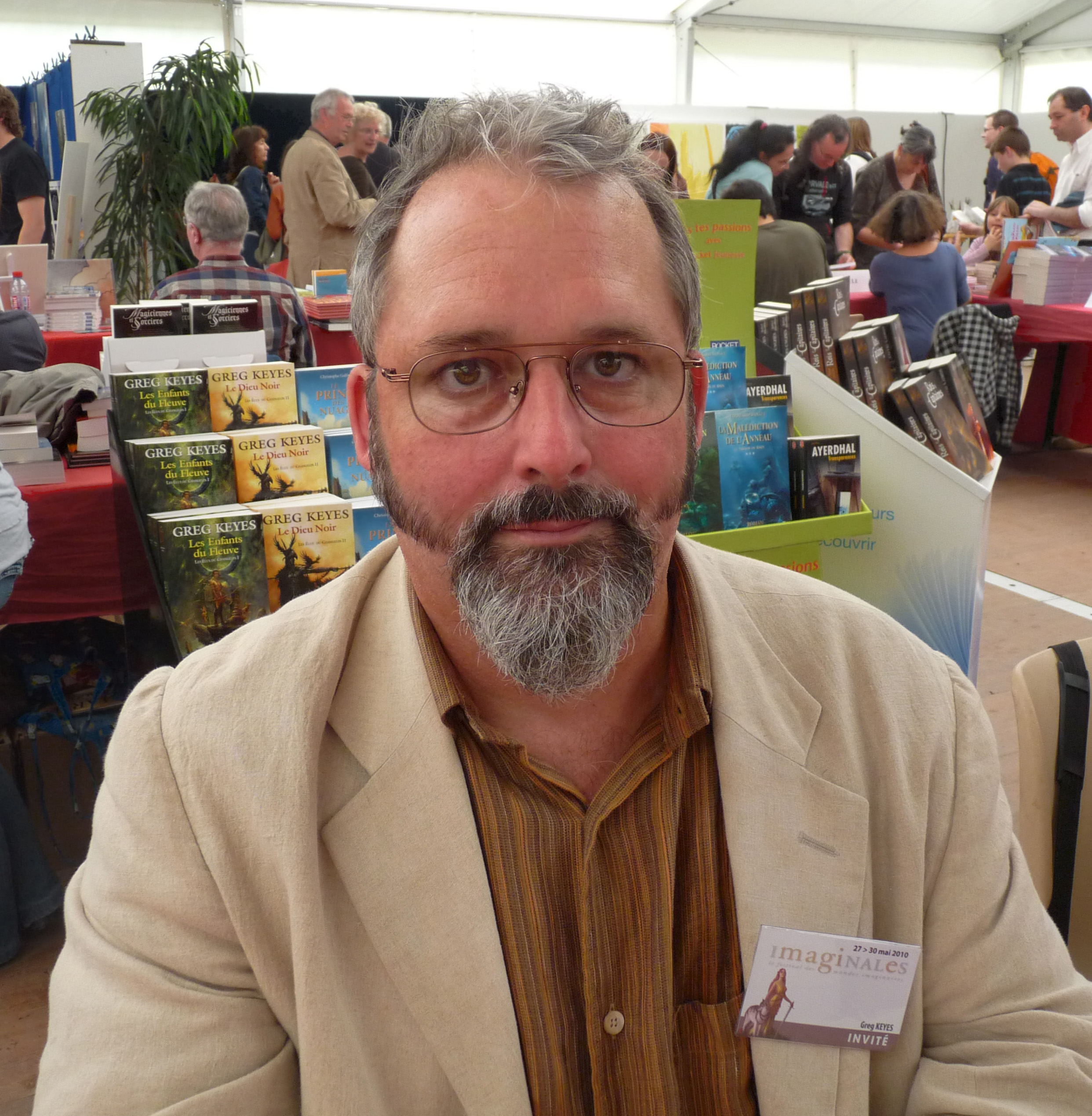
This novelization of the Hollywood movie is an exciting account of a team of interstellar explorers sent through a newly-discovered wormhole – and what the ramifications of this mean for humanity. Despite being written thousands of years after Argonautica, the story shares a remarkably similar bone structure, as our hero literally navigates new worlds in a quest to return with the solution that will save the human race from extinction.
“We’ve always defined ourself by our ability to overcome the impossible.” Jonathan Nolan
- Keyes, Greg (Author)
- 288 Pages - 11/11/2014 (Publication Date) - Titan Books (Publisher)

Divergent by Veronica Roth offers a dystopian version of a future in which society is divided into five factions, each representing a certain virtue. Beatrice has been assigned the Abnegation faction but feels a Call to Action: in her heart, she knows she belongs to Dauntless. While set in a distant future, the tale follows the traditional archetypal hero’s journey; after the Call, Beatrice (now Tris) must resist several temptations, cross a threshold, and must survive a final ordeal to emerge at the novel’s finale, transformed and triumphant.
“I feel like someone breathed new air into my lungs. I am not Abnegation. I am not Dauntless. I am Divergent.” Veronica Roth

Beautiful and strange, this novel uses the mythic structure as both framework and plot. We follow a couple across a mystical, fiction, post-Arthurian landscape that is as shrouded in mist as their fast-disappearing memories. Both are convinced that they once had a son and so set out on a quest to find him. The author wrote the book as a meditation on collective memory, making it both an example and an interrogation of the hero’s journey tale.
“I’m wondering if without our memories, there’s nothing for it but for our love to fade and die.” Kazuo Ishiguro
- Ishiguro, Kazuo (Author)
- 384 Pages - 01/28/2016 (Publication Date) - Faber & Faber (Publisher)

Literally Crossing the Threshold via a fall down a rabbit hole, Alice arrives in Wonderland, where nothing is as it seems, and both adventure and danger lurk around every corner. But is the Caterpillar, The White Rabbit, or The Mad Hatter the Mentor? Just as with everything else in the story, it’s a riddle. But what’s for sure is that the story follows the classic monomyth template as set out by Joseph Campbell.
“‘I could tell you my adventures – beginning from this morning,’ said Alice a little timidly: ‘but it’s no use going back to yesterday because I was a different person then.’” Lewis Carroll
- Carroll, Lewis (Author)
- 101 Pages - 05/06/2021 (Publication Date) - Independently published (Publisher)
In some hero’s journey books, the stages are subtle – you can find them, but you may need to look closely. As in Alice in Wonderland, the phases are made obvious in this novel: the kids literally step over the threshold of the magical wardrobe and into the enchanted world of Narnia. The Refusal of the Call comes when the children initially turn back, fearful of their ability to navigate their way home. They return and take on the challenges set for them by one of literature’s ultimate Mentor figures, Aslan.
“All shall be done, but it may be harder than you think.” C.S. Lewis
- C.S. Lewis (Author)
- 171 Pages - 01/01/2009 (Publication Date) - HarperCollins Children's Books (Publisher)

Just because the hero’s journey genre is as old as time doesn’t mean it’s not subject to continual innovation – as in this novel, where the hero’s Mentor and biggest challenge to overcome is…literally himself. Fight Club is a cult phenomenon that’s made the leap to mainstream hit, helped along by the success of the great screenwriting featured in the Hollywood movie version of the book. Visionary, satirical, and a personal enlightenment journey like no other, Fight Club gleefully reimagines the hero’s journey genre to spectacular effect.
“If I could wake up in a different place, at a different time, could I wake up as a different person?” Chuck Palahniuk
- Palahniuk, Chuck (Author)
- 208 Pages - 10/02/1997 (Publication Date) - Vintage (Publisher)

Melanie Smith is a freelance content and creative writer from Gloucestershire, UK, where she lives with her daughter, long-suffering partner, and cat, The Magical Mr. Bobo. Her blog posts and articles feature regularly in magazines and websites around the world.
View all posts
Screen Rant
Frieren teases a new villain who could be the hero's perfect match.
Frieren: Beyond Journey's End is teasing a new villain in the manga, and what little has been shown about them already sets them up as Frieren's foil.
- Frieren: Beyond Journey's End 's new villain may be a major rival to Frieren going forward in the series.
- The new villain being an elf leading a villainous organization, could make them a perfect foil for Frieren and her adventuring party.
- Previous events in the story make it clear that the new character could easily put up a fight against Frieren.
Warning: Contains spoilers for Frieren: Beyond Journey's End chapter #128. One of the biggest hallmarks of Frieren: Beyond Journey’s End has always been Frieren’s status as one of the strongest characters in the story. Some characters can and have beaten her in a fight, but her strategic mind and overwhelming power have still allowed her to win every fight she’s been in throughout the story, even if she sometimes needs help to do so.
There are very few characters who can rival Frieren, but the series is teasing the appearance of someone who can do just that. The current arc of the manga revolves around Frieren and other first-class mages fighting against the Empire’s most elite forces, and among the organizations included in that, one new group in Frieren: Beyond Journey’s End appears to be led by an elf just like Frieren and Serie .
Nothing is known about the new character, but it’s easy to assume that they could be a perfect foil to Frieren, and that would be great to see how these events will play out.
Frieren Beyond Journey's End Season 1 Review: The Best Fantasy Anime in Years Ends on a High Note
Why frieren’s new villain might be the perfect foil for its hero, original story created by kanehito yamada; art by tsukasa abe.
There are numerous reasons why Frieren: Beyond Journey’s End ’s new villain could be a great foil to Frieren. The new villain being an elf like Frieren is an obvious parallel between them and ther iconic protagonist , but with the new villain leading the Court of the Sacred Staff, one of the Empire’s deadly covert organizations, that means Frieren: Beyond Journey’s End ’s new villain, unlike Frieren, herself, is someone who uses magic as a means of killing others for selfish reasons . Something like that would make them entirely antithetical to Frieren’s character, and that, in turn, would make them a great foil.
Why Frieren’s New Villain Might Be Able To Take Frieren In A Fight
While friren is recognized as being the strongest in the world, this ew threat may be able to match up to her power.
Beyond their ideologies as a possible parallel to Frieren’s, there’s plenty of reason to assume that Frieren: Beyond Journey’s End ’s new villain could fight against her. For starters, the Court of the Sacred Staff is set on the same level as the Shadow Warriors, an organization that can create warriors skilled enough to get the jump on Frieren and nearly kill her. By that logic, Frieren: Beyond Journey’s End ’s new villain is essentially confirmed to be capable of killing Frieren , so they’re bound to give Frieren one of her biggest fights in the series.
Hit New Fantasy Anime Dethrones Fullmetal Alchemist For Top Anime in Two Big Rankings
Something else worth considering is how the new villain might be someone who’s already defeated Frieren in the past. Frieren once said that she was beaten by an elf who had less power than her, and with an elf set to be the new villain in the upcoming arc, it would make sense for Frieren: Beyond Journey’s End ’s new villain to be the elf who once defeated Frieren . A prior connection like that could work to emphasize potential parallels between them even further, and with any luck, it won’t be long before Frieren: Beyond Journey’s End sees fit to capitalize on it.
Frieren: Beyond Journey's End
Frieren: Beyond Journey's End is an animated adventure-drama series based on the manga series created by Kanehito Yamada and Tsukasa Abe. Following her parties' victory against an all-powerful demon king that threatened to destroy their world, Frieren, an elf, attempts to find her place in a new world with an undetermined future fifty years later.
Ten years, eight clubs, one dream: The story of Fa'amanu Brown, rugby league's ultimate journeyman
Analysis Sport Ten years, eight clubs, one dream: The story of Fa'amanu Brown, rugby league's ultimate journeyman
Fa'amanu Brown has had plenty of days to remember though his 10-year, eight-club career in rugby league, but the past week was something new, even for him.
After securing a release from Hull FC, he flew from England on Sunday, landed in Australia on Monday, signed with St George Illawarra on Tuesday, trained with them on Thursday and played in the club's 30-12 win over the Warriors on Friday.
"I didn't think I'd play on Friday but Flanno (coach Shane Flanagan) said he'd throw me in the deep end," Brown said.
"It was surreal to get a win against a quality side like the Warriors and it was the first time we won back-to-back in a couple of years, so that's important.
"Nobody is ever going to turn down an offer to play in the NRL, even if you're straight off the plane."
Brown's move is the latest chapter of a long, winding journey that started in Christchurch and has taken the 29-year-old from Cronulla, to Canterbury, to Featherstone Rovers in the English second division, to North Sydney Bears in NSW Cup, to Wests Tigers, back to Canterbury, then to Newcastle, Hull FC and finally the Dragons.
That's nine different stints at eight different clubs across two continents and four different leagues in 11 seasons, for those of you playing at home. The Dragons are the fourth team he's played for in 18 months.
Throw in his appearances for Samoa, his belated debut for New Zealand – where he played in last year's record Pacific Championship final belting of Australia – and the fact he overcame a leg injury that left doctors telling him he'd never walk again let alone play, and it's one of the most remarkable careers in modern rugby league.
Some players might take being described as a journeyman as disparaging. Brown uses it as a sign-off on Instagram and wears it as a badge of honour. Few can match his journey, on the field or off it.
Plenty of people who have faced Brown's hardships would have retired long ago. The uncertainty of life as a rugby league vagabond isn't for everyone but Brown has been making the very most of what he's got his whole life.
"It's from my upbringing. We all face adversity on our own journeys but I grew up in a three-bedroom state house as one of nine kids. We just had to deal with what we had," Brown said.
"It's the hardships I've had to go through. I grew up in a home with domestic violence. I grew up in a house where you had to deal with what you had and I've carried that with me.
"When you're chucked in the deep end it's swim or drown and I've been put in that position my whole life.
"That's what built my resilience and my character. I'm so lucky with my family and my support base, my fiance Jordan has been with me through everything. She's been right there on the rollercoaster with me.
"There have been plenty of times when I've wanted to retire but I'm so lucky."
Brown got his first shot at the top grade back in 2014 with Cronulla as the club struggled in the grip of the ASADA scandal.
The Sharks were outscored 56-0 in his first two matches. But, as he's done so many times, Brown kept at it and Cronulla, somehow, won their following two games – overturning 22-0 and 24-0 deficits in the process.
He stayed at the Sharks until the end of 2017 – that's where he worked with Flanagan, who was instrumental in bringing him to the Dragons this season — before he headed to Canterbury and began his wandering.
"It sounds like a cliché, but I love giving back. For me, the only way out of the hood was rugby league. That was all I knew. So I have to represent people who do it tough," Brown said.
"There's a lot of kids, some kids who come from nothing, who might be unlucky with injuries or they're down and out and think there's no way back, that's who I represent. If I can do it then, bloody hell, anyone can.
"I never left a stone unturned. You can have all the achievements in the world, but you know in your heart if you gave it your all, if you never stopped fighting."
That attitude helped Brown the most during the toughest stretch of his career in 2020 when a succession of foot injuries put his career on the brink.
Five doctors told him he'd never play again. Some of them said he'd never run again. At the same time, he was nursing his mother through the final stages of her life as she battled lung cancer.
Amid everything, he found a way to keep going. He always does. He's realised he's more than his football career, a perspective that gives him the strength to carry on in the hardest times.
"Rugby league is a part of me, but it's not all of me. I still have so much away from the game and I'm still young in the real world. I had to learn that rugby league is so important to me but it isn't me," Brown said.
"So when you go through injuries, or when you're on a string of one-year deals or you lose yourself trying to train too hard or think about it too much, you have to remember that, and you only learn it through experiences."
Brown is still hopeful of having some experiences left. He'll play for the Dragons on Anzac Day against the Roosters in front of a sold out crowd at the Sydney Football Stadium, which is one of rugby league's great occasions, and with Flanagan's coaching beginning to take effect on the Red V, who knows where this season could end up?
"When you look at the Dragons you can see that when they face adversity they play for one another, they turn up. That's something they haven't had in recent years and that's what I think Flanno has bought, that winning mentality," Brown said.
"He knows what he's doing and a lot of the boys are trusting him and what he's trying to do."
For the time being, Brown's goals are modest. He wants to earn more minutes as he re-acclimatises to the NRL. He wants to lock down a contract for next year, to get just a little bit of security.
He's taking his career year-by-year at this point, but the end isn't in sight yet. The man is still on his journey.
"Not many people get to do this, not many people get to be in our shoes, so I was always going to take it with both hands," Brown said.
"It doesn't matter if it's one minute or 80 minutes, you get to be out there in front of 20,000 fans.
"A normal person doesn't get to experience that, so I'm so grateful for everything, I'm so grateful to be at the elite level and I believe this is where I belong.
"I'm a full believer that everything happens for a reason. With my journey you can't really write a story like this."
- X (formerly Twitter)
- Rugby League

'Unsung Hero' sheds light on the Smallbone family's incredible journey to musical stardom
LOS ANGELES, CALIFORNIA: 'Unsung Hero', an upcoming American Christian drama film directed by Richard Ramsey and Joel Smallbone, is based on a remarkable true story.
Starring Joel as David Smallbone, Daisy Betts as Helen Smallbone, Kirrilee Berger as Rebecca St. James, Jonathan Jackson as Eddie DeGarmo, and Candace Cameron Bure as Kay Albright, the film delves into the story of the Smallbone family, focusing on siblings St James, Joel, and Luke, as they navigate their path to becoming Christian recording artists.
The official synopsis of the film reads, "David Smallbone, his pregnant wife, and their seven children leave Australia to rebuild their lives in America. David and Helen realize the musical talent of their children, who become two of the most successful acts in Inspirational Music history."
The film is scheduled to be released in the United States on Friday, April 26, 2024, by Lionsgate.
Let's discuss the real-life story of 'Unsung Hero'.
The film delves into David Smallbone's remarkable journey from Australia to the United States
'Unsung Hero' chronicles the pivotal journey of David Smallbone, who made the life-changing decision to relocate his family from Australia to Nashville, Tennessee, United States, in 1991.
After his music company collapsed, David, a music promoter, decided to seek a fresh start in the United States, as reported by The Tennessean.
Despite the challenges that lay ahead, David's resilience and determination to overcome adversity served as a beacon of hope for his family.
With just their children, a few suitcases, and a deep love for music, David and his pregnant wife, Helen Smallbone, embarked on a journey to rebuild their lives.
According to The Tennessean, the journey from Australia to Nashville was neither easy nor inexpensive for the Smallbone family. They had to use the majority of their family's savings to cover the cost of airfare.
As the imminent birth of their seventh child approached, David remained unemployed. Despite the uncertainty of their circumstances, Helen gave birth to their seventh child, marking a poignant moment in their journey.
After the Smallbone family settled in Nashville, David actively searched for employment. He also took his oldest daughter, St James, who was 14 years old at the time, up and down Nashville's Music Row, aiming to secure her a record deal.
Two years after their move to Nashville, St James' dedication and talent paid off when she was signed to ForeFront Records.
Who is Rebecca St. James?
Rebecca St James, the daughter of David and Helen, is an Australian-American contemporary Christian singer, songwriter, and actress.
St James achieved fame in the late 1990s with her RIAA-certified Gold albums 'God' and 'Pray.' The album 'Pray' notably won a Grammy Award in 1999 for Best Rock Gospel Album, solidifying her status as a talented and respected artist in the music industry.
During this time, St James' music not only garnered commercial success but also connected with listeners on a deeper level.
According to a report by Solo Parent Organization, Helen, St James' mother, played a crucial role in her daughter's career, offering unwavering support and encouragement throughout her journey to fame.
St James is also best known for films like 'Left Behind: The Movie,' 'The First Easter,' 'Unidentified,' 'Sarah's Choice,' 'Rising Stars,' and 'Faith of Our Fathers.'
How family values fueled For King & Country's rise to fame
Joel and Luke joined forces to establish the band 'For King & Country' in 2007. Their shared passion for music and deep-rooted family values the foundation for their musical journey.
In 2008, Joel and Luke released their first EP, 'A Tale of Two Towns' in the comfort of their parents' home, which served as a creative sanctuary for the brothers.
Over the years, despite their rising success, the brothers faced various hardships. In 2011, the duo, now known as For King & Country, returned to the studio to record what would become their first three singles: 'Busted Heart,' 'Proof of Your Love,' and 'Middle of Your Heart.'
In 2013, Joel also embarked on his acting career, taking on the role of King Xerxes in 'The Book of Esther' and portraying Jake Reeson in 'Like a Country Song.'
One of his most notable roles came in 2016 when he was cast in the leading role of James Stevens in the film 'Priceless.'
Joel has embarked on an intriguing new chapter in his acting career, as he is set to portray his father, David, in the upcoming film 'Unsung Heroes.'
'Unsung Hero' trailer
'my 600-lb. life' stars then and now: plus-sized show participants transformed their lives.
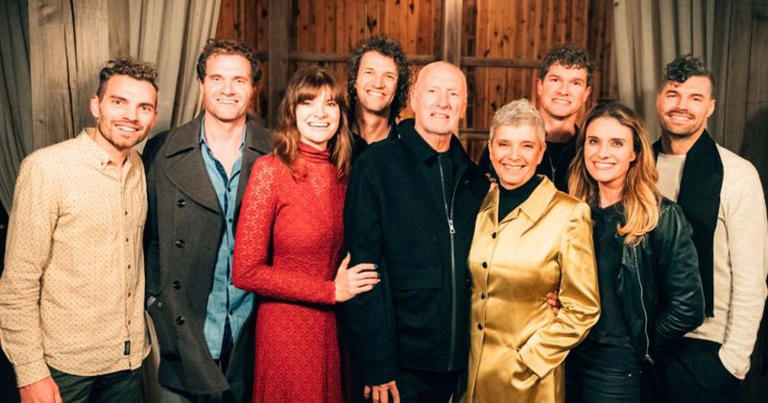

An official website of the United States government
Here's how you know
The .gov means it’s official. Federal government websites often end in .gov or .mil. Before sharing sensitive information, make sure you’re on a federal government site.
The site is secure. A lock ( ) or https:// ensures that you are connecting to the official website and that any information you provide is encrypted and transmitted securely.
Keyboard Navigation
- Agriculture and Food Security
- Anti-Corruption
- Conflict Prevention and Stabilization
- Democracy, Human Rights, and Governance
- Economic Growth and Trade
- Environment, Energy, and Infrastructure
- Gender Equality and Women's Empowerment
- Global Health
- Humanitarian Assistance
- Innovation, Technology, and Research
- Water and Sanitation
- Burkina Faso
- Central Africa Regional
- Central African Republic
- Côte d’Ivoire
- Democratic Republic of the Congo
- East Africa Regional
- Power Africa
- Republic of the Congo
- Sahel Regional
- Sierra Leone
- South Africa
- South Sudan
- Southern Africa Regional
- West Africa Regional
- Afghanistan
- Central Asia Regional
- Indo-Pacific
- Kyrgyz Republic
- Pacific Islands
- Philippines
- Regional Development Mission for Asia
- Timor-Leste
- Turkmenistan
- Bosnia and Herzegovina
- North Macedonia
- Central America and Mexico Regional Program
- Dominican Republic
- Eastern and Southern Caribbean
- El Salvador
- Middle East Regional Platform
- West Bank and Gaza
- Dollars to Results
- Data Resources
- Strategy & Planning
- Budget & Spending
- Performance and Financial Reporting
- FY 2023 Agency Financial Report
- Records and Reports
- Budget Justification
- Our Commitment to Transparency
- Policy and Strategy
- How to Work with USAID
- Find a Funding Opportunity
- Organizations That Work With USAID
- Resources for Partners
- Get involved
- Business Forecast
- Safeguarding and Compliance
- Diversity, Equity, Inclusion, and Accessibility
- Mission, Vision and Values
- News & Information
- Operational Policy (ADS)
- Organization
- Stay Connected
- USAID History
- Video Library
- Coordinators
- Nondiscrimination Notice
- Collective Bargaining Agreements
- Disabilities Employment Program
- Federal Employee Viewpoint Survey
- Reasonable Accommodations
- Urgent Hiring Needs
- Vacancy Announcements
- Search Search Search
Unsung No More, Cambodia’s Malaria Hero

The country's first entomologist embarked on a remarkable seven decade journey to protect his country from malaria, even maintaining his mission during the horror of the Khmer Rouge regime.
During his seven decades on the front lines of Cambodia’s fight against malaria, Yeang Chheang, a soft-spoken man with wire-rimmed glasses and a razor-sharp memory, has seen it all.
In 1954, at age 17, Chheang began training as a medical entomologist—his country’s first. During the deadly Khmer Rouge regime in the mid-1970s, he saved countless lives by dispensing malaria medication from his pockets. In the decades after the war, he helped rebuild the country’s shattered malaria control program from scratch.
Today, as Cambodia approaches its national goal of eliminating malaria, 86-year-old Chheang is finally getting the recognition he deserves: In December, he received the “Unsung Hero” award during the Reaching the Last Mile Forum at the United Nations Climate Change Conference (COP28) in Dubai.
A life of unwavering service to preventing illness and saving lives is an exceptional career worthy of recognition in and of itself," Dr. David Walton, the U.S. Global Malaria Coordinator, wrote in a letter to Chheang. "To do so through the terror and suffering of the Khmer Rouge regime and to rebuild in its wake is truly heroic."
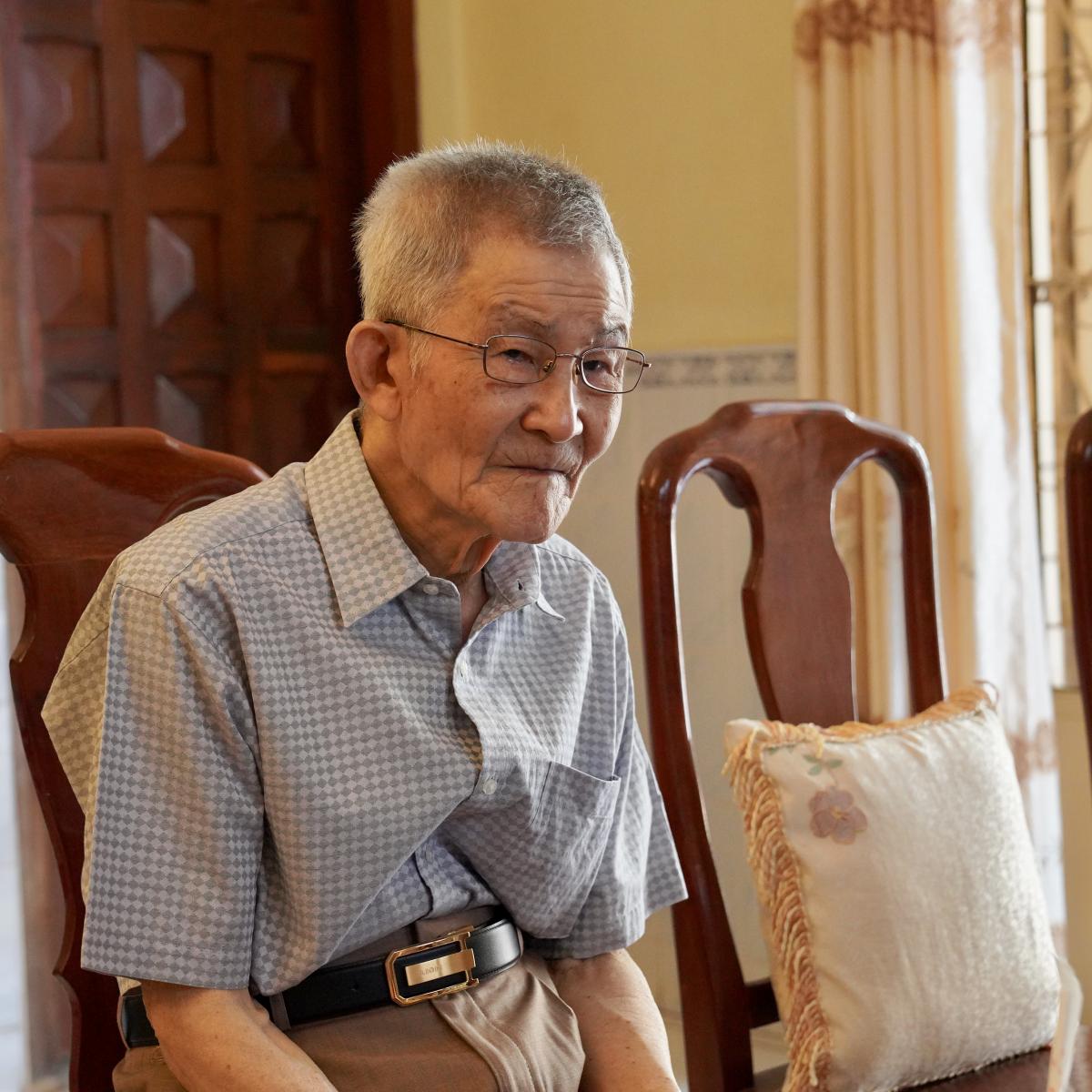
Yeang Chheang, 86, at his home in Phnom Penh.
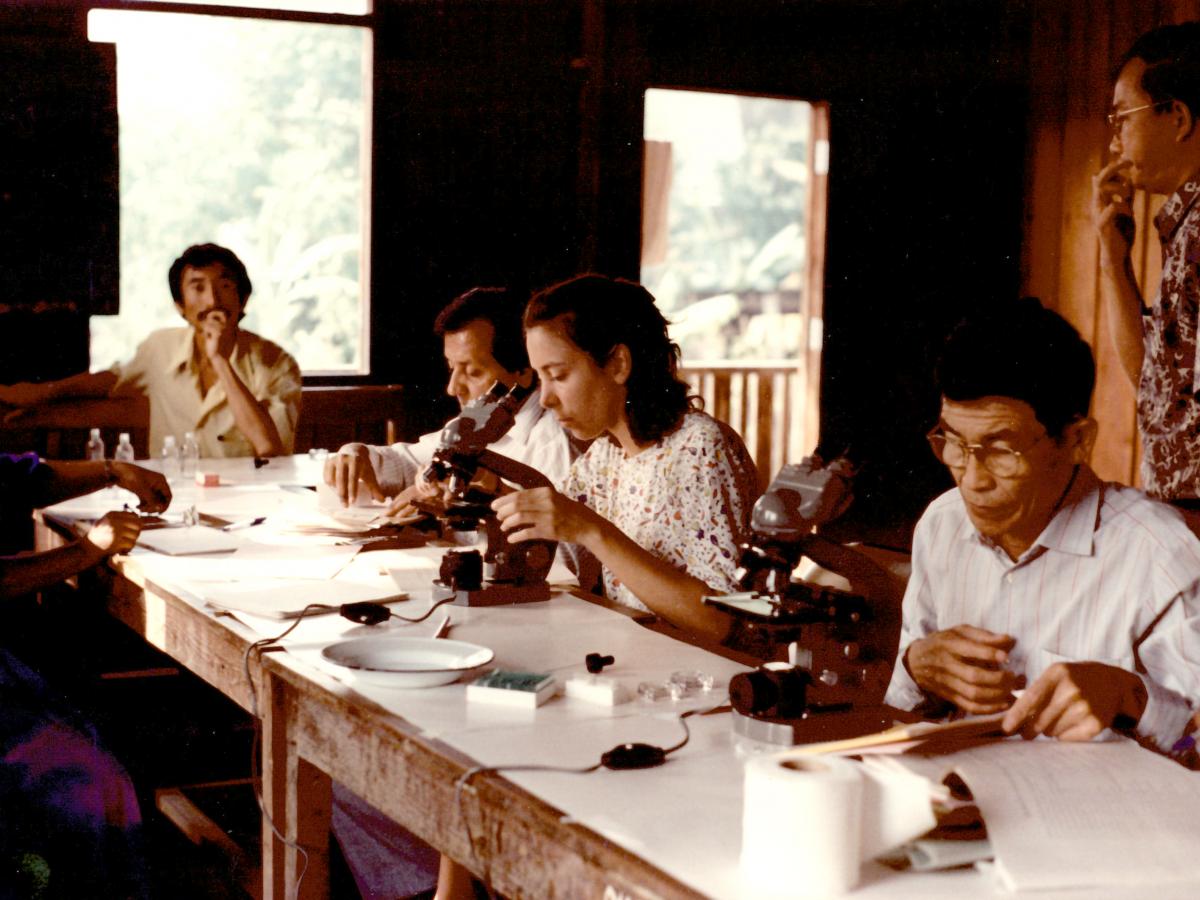
Blood examination for malaria parasites diagnosis at the Malaria Training Center in Praputhabat district, Sarak Bori province, Thailand, in 1991. Mr. Chheang is on the right./Photo courtesy of Yeang Chheang
For decades, malaria has ranked as one of the most common causes of illness and death in Cambodia. Over the past six years, however, not a single malaria death has been recorded, and the dream of eliminating malaria by 2025 is within Cambodia’s reach.
No one person or program can take full credit for the turnaround. But together, the Cambodian government; the U.S. President’s Malaria Initiative (PMI), led by USAID and co-implemented with the Centers for Disease Control and Prevention; and the Global Fund to Fight AIDS, Tuberculosis, and Malaria have accomplished a great deal. Chheang helped lead control efforts from the very beginning.
Since childhood, Chheang has been fascinated with insects. But it wasn’t until age 17, when a French entomologist at his university took him under his wing and trained him in vector control that Chheang decided on a career path.
Chheang helped initiate the first malaria eradication pilot project in the Snuol District of Cambodia in the 1960s, and had risen to be the chief of the malaria program technical bureau when the Khmer Rouge came into power in 1975.

Training on the use of spray pumps at the Malaria Training Center in Thailand in 1991. Mr. Chheang is in the middle./Photo courtesy of Yeang Chheang
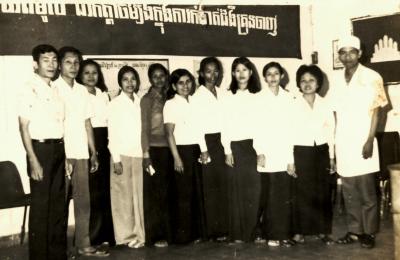
Training of malaria staff on microscopy at the malaria laboratory in Phnom Penh in 1981. Mr. Chheang is on the far left./Photo courtesy of Yeang Chheang.
Like most Cambodians, Chheang experienced horrific loss under the Khmer Rouge. His three brothers, sister, and mother were murdered. His wife and their 10-month-old son starved to death in a labor camp. Chheang evacuated by foot to the Preah Net Preah District, but before leaving Phnom Penh, he secretly stashed packets of antimalarial pills in his pockets.
Chheang tried to keep his pharmacy a secret, fearing retribution from the Khmer Rouge soldiers. As more prisoners were cured of malaria, however, the soldiers took notice and started to demand treatment for themselves. One day, a top regional military leader who had fallen sick sent for Chheang.
"I was so scared and thought if anything went wrong, I would be killed right there in front of everyone," he says. Instead, the commander was cured, and Chheang gained respect. " After this, they allowed me to move freely from home to home to treat sick people."
While Chheang saved lives, the Khmer Rouge killed an estimated two million people, including medical doctors and other health personnel.
I survived the Khmer Rouge because of those malaria tablets. They were my blessing,” he says.
After the war, Chheang was one of just a handful of malaria workers in the entire country that could help restore the national malaria control program from the ground up—with no budget or staff. This effort included securing funding from the World Health Organization to re-establish the National Malaria Control Program. One of his biggest accomplishments in the early 1980s, Chheang says, was organizing a training for 68 participants from across Cambodia to test for and treat malaria. By the 1990s, he was deputy director of the National Program.
Chheang spent many years working alongside USAID- and PMI-supported projects, including the Malaria Control in Cambodia project in western Cambodia. In Pailin Province—a former Khmer Rouge stronghold and well-known epicenter of drug resistance— he often led teams on foot for days or weeks through villages still riddled with land mines.
In those days, Chheang frequently encountered former Khmer Rouge fighters in the area in need of assistance. Chheang says he treated everyone, regardless of their past, with the same compassion and respect.
Chheang retired in 2016, but his contributions to the elimination of malaria in Cambodia won’t soon be forgotten.
"Your success is an inspiration to me, my colleagues at the U.S. President’s Malaria Initiative, and all of the malaria community," Dr. Walton wrote in his letter to Mr. Chheang. “It is my greatest hope that we can achieve a world free of malaria through the same hard work, dedication, and perseverance."
For Chheang, a malaria-free world is inseparable from our shared humanity: “If we don’t help people with malaria, we cease to be human,” he says.
About PMI:
The U.S. President’s Malaria Initiative (PMI) has supported Cambodia’s National Center for Parasitology, Entomology, and Malaria Control (CNM) objectives since 2013 with an overall investment of $87 million. Cambodia is on track to become the first bilaterally-supported PMI partner country to eliminate malaria.

IMAGES
VIDEO
COMMENTS
Short stories can make it through a 12-phase Hero's Journey in a matter of pages. They often pack a punch with their themes and conflicts, giving students plenty to work with. Diverse Perspectives: Heroes come from different places and backgrounds, and possess various strengths and skills.
Here Are The Best Hero's Journey Short Story Examples. 1. Story of Your Life - Ted Chiang. Ted Chiang via Wikipedia, Public Domain. Incorporating the hero's structure narrative but molding the form to serve the story, Story of Your Life begins with the narrator, Dr. Louise Banks, speaking to her as-yet-unborn child.
4. Meeting the Mentor. The hero has either gone off on an adventure or has been thrust into one-now, they get some sort of guide to take them through this new world. This new guide is a mentor character, and they'll often have something to help our hero out along the journey. Think Gandalf or Hagrid.
9. Reward (Seizing the Sword) In which the Hero sees light at the end of the tunnel. Our Hero's been through a lot. However, the fruits of their labor are now at hand — if they can just reach out and grab them! The "reward" is the object or knowledge the Hero has fought throughout the entire journey to hold.
The Hero's Journey: Use this structure when you want to tell a story of personal growth, transformation, and adventure. It works well for epic tales, fantasy, and science fiction, but it can be adapted to other genres as well. Three-Act Structure: This is a versatile structure suitable for a wide range of genres, from drama to comedy to action.
The Hero's Journey is a common story structure for modeling both plot points and character development. A protagonist embarks on an adventure into the unknown. They learn lessons, overcome adversity, defeat evil, and return home transformed. Joseph Campbell, a scholar of literature, popularized the monomyth in his influential work The Hero ...
Step 7: Approach to the Inmost Cave. Eventually the Hero must arrive at the destination, and that destination is frequently a fortress, cave, or dungeon crawling with monsters, enemies, or traps. This will lead to the story's climax, but the best heroic journeys include a step before the big fight.
The Hero's Journey was invented by Campbell in his seminal 1949 work, The Hero with a Thousand Faces, where he introduces the concept of the "monomyth." A comparative mythologist by trade, Campbell studied myths from cultures around the world and identified a common pattern in their narratives.
What is the Hero's Journey? The Hero's Journey was first described by Joseph Campbell. Campbell was an American professor of literature at Sarah Lawrence College. He wrote about the Hero's Journey in his book The Hero with a Thousand Faces. More than a guide, this book was a study on the fundamental structure of myths throughout history.
The Hobbit does an exemplary job of following the Hero's Journey, and it's also an example of how checkpoints can exist in more than one place in a story, or how they may deviate from the typical 12-step process of the Hero's Journey. 1. The Ordinary World. This stage in the Hero's Journey is all about exposition.
In this text, Jessica McBirney discusses the story of the Hero's Journey and examples of this writing formula found in other popular books. Read more here. CommonLit does more so that you can spend less. Maximize growth and minimize costs with a partnership for just $3,850 / year!
This template is known as the "monomyth"—or, colloquially, the hero's journey. Hands up if you've heard this story before: A lonely hero who is trying to find himself. A sudden and unexpected journey, promising adventure and peril. A test of character, strength, and skill. An ultimate battle that tests the hero's resolve. A ...
The 3 Hero's Journey Stages. 1. The Departure (Separation) The hero is compelled to leave her ordinary world. She may have misgivings about this compulsion, and this is where a mentor may come to encourage and guide her. Example: Katniss Everdeen is a devoted sister, daughter, and friend.
Here's an overview of all of the 17 steps of Joseph Campbell's Hero's Journey: Act One: The Departure. The Call to Adventure. Refusal of the Call. Supernatural Aid. The Crossing of the First Threshold. Belly of the Whale. Act 2: The Initiation: The Road of Trials.
A Sound of Thunder: This thrilling short story by Ray Bradbury tells of a group of hunters who travel back in time to hunt the ultimate prey, the Tyrannosaurus Rex. As with most adventures in time travel, the hunters' actions have far reaching effects, educating them in the harsh lesson that even the smallest actions have consequences.
The Hero's Journey is probably the most well-known of all story structures. Its origins can be traced back to ancient mythology, where heroes embarked on transformative quests, facing trials and triumphs. However, it was Joseph Campbell, the renowned mythologist, who popularised its use and study. In his seminal work, "The Hero with a ...
Popularized by mythologist Joseph Campbell in his book The Hero With a Thousand Faces, the Hero's Journey is a story structure that has been used to tell exciting and captivating stories for centuries.Campbell, a literature professor, found that this was a common mythic structure. It's widely known by the moniker the Hero's Journey, but this name didn't come around until well after ...
Joseph Campbell's Hero's Journey is a narrative structure that describes the typical stages that a hero undergoes in a story. Following along with the arch, these are the 12 stages of the hero's journey. The Ordinary World: The hero begins in a normal, mundane world, often unaware of the adventure that awaits.
Illustration of the hero's journey. In narratology and comparative mythology, the hero's journey, also known as the monomyth, is the common template of stories that involve a hero who goes on an adventure, is victorious in a decisive crisis, and comes home changed or transformed.. Earlier figures had proposed similar concepts, including psychoanalyst Otto Rank and amateur anthropologist Lord ...
10. Write a scene where your hero meets an unexpected ally on their journey . 11. Create a fantastical challenge or physical obstacle in the world where your story is set. Drop your hero and one other character into the situation and force them to fight their way through it. 12.
Consider their 2016 short film Piper: This is a classic Hero's Journey in three movements: Separation: Piper's mother compels Piper to leave the comfort of home — where he is fed by his mother — to test out how to feed himself. Like many Hero's Journey tales, this is a story about a youth transitioning into adulthood.
Here Are The Best Hero's Journey Books. 1. The Hobbit by JRR Tolkien. JRR Tolkien via Wikipedia, Public Domain. This classic book by J.R.R. Tolkien has featured regularly on best-seller lists since its first publication in 1937 and is widely cited as one of the twentieth century's most beloved and influential novels.
Fellow Traveller will publish Pine: A Story of Loss, a short story-driven game about life after love from Brooklyn-based developer Made Up Games, first funded via Kickstarter back in February 2021.…
Warning: Contains spoilers for Frieren: Beyond Journey's End chapter #128. One of the biggest hallmarks of Frieren: Beyond Journey's End has always been Frieren's status as one of the strongest characters in the story. Some characters can and have beaten her in a fight, but her strategic mind and overwhelming power have still allowed her to win every fight she's been in throughout the ...
With my journey you can't really write a story like this." Posted Yesterday at 4:42am Wed 24 Apr 2024 at 4:42am , updated Yesterday at 4:44am Wed 24 Apr 2024 at 4:44am
Let's discuss the real-life story of 'Unsung Hero'. ... 'Unsung Hero' chronicles the pivotal journey of David Smallbone, who made the life-changing decision to relocate his family from Australia ...
The country's first entomologist embarked on a remarkable seven decade journey to protect his country from malaria, even maintaining his mission during the horror of the Khmer Rouge regime. During his seven decades on the front lines of Cambodia's fight against malaria, Yeang Chheang, a soft-spoken man with wire-rimmed glasses and a razor ...